


FREE Vol. 20 No. 1 (1) • OCTOBER (1) 2012 • www.indianlink.com.au FORTNIGHTLY SYDNEY Level 24/44 Market St, Sydney 2000 • GPO Box 108, Sydney 2001 • Ph: 18000 15 8 47 • email: info@indianlink.com.au Sydney • Melbourne • Adelaide • Brisbane • Perth • Canberra INTRODUCING THE NEW INDIAN LINK RADIo App foR IphoNE, IpAD AND ANDRoID Love Ganesha Why we

2 OCTOBER (1) 2012 www.indianlink.com.au

OCTOBER (1) 2012 3 NATIONAL EDITION






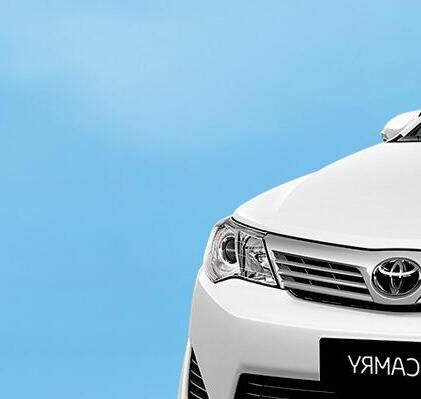


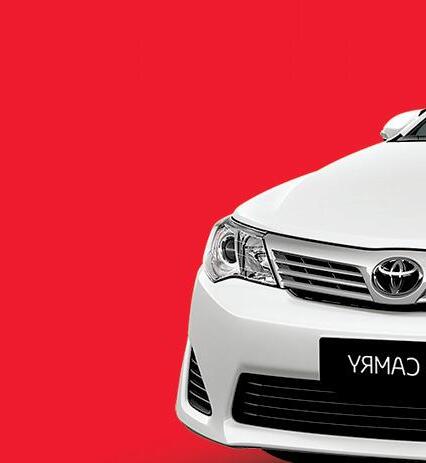









































































4 OCTOBER (1) 2012 www.indianlink.com.au 02 4704 9978 112 Sunnyholt Road Blacktown www.landertoyota.com.au SUNNYHOLT RD BESSEMER ST STEEL ST *0% comparison rate available to approved personal applicants & a 0% annual percentage rate is available to approved Bronze Fle et & Primary Producer applicants of Toyota Finance for the fi nancing of current generation Camry, Camry Hybrid and Aurion models. Excludes demos. Finance applications must be received and approved between 19/9/2012 and 31/12/2012 and vehicles registered and delivered by 31/12/2012 (subject to dealer stock availability). Maximum fi nance term of 48 months applies. Conditions, fees & charges apply. Comparison rate based on a 5 year secured consumer fi xed rate loan of $30,000. WARNING: This comparison rate is true only for the examples given and may not include all fees and c harges. Diff erent terms, fees or other loan amounts might result in a diff erent comparison rate. Toyota Finance is a division of Toyota Finance Australia Limited ABN 48 002 435 181, Australian Credit Licence 392536. 4 Day Sale off ers valid on selected vehicles purchased between 12th-15th October, 2012. MD20304 YPA4680-FP Winner of the Toyota Australia Presidents Award for excellence 2011 Lander Toyota now available on the NEW generation Camry and Aurion range. FRIDAYSATURDAYSUNDAY MONDAY 12131415 OCTOBEROCTOBEROCTOBEROCTOBER USEDHUGECAR SALE! GREATDEALSFINANCE TO APPROVED PURCHASERS BBQ SAT & SUN HUGE TRADE IN OFFERS LANDER TOYOTA’S BUYER COROLLA RUNOUT AUTOMATIC ASCENT UNDRIVEN DEMOS A AUTOS OVER 500 NEW, USED & COMMERCIAL VEHICLES ON SALE! sn5794241 sn5794243 $19,990 drive away 5 ONLY
INDIAN LINK
Pawan Luthra
EDITOR
Rajni Anand Luthra
ASSISTANT EDITOR
Sheryl Dixit
MELBOURNE
Preeti Jabbal
CONTRIBUTORS
Dolly Singh Miranda, Usha Ramanujam Arvind, Avi Chandiok, LP Ayer, Hamsa Venkat, Malli Iyer, Shafeen Mustaq, Sandip Hor, Petra O’Neill, Chitra Sudarshan, Noel G deSouza, Ritam Mitra, Gaurav Surati, Tim Blight, Mohan Dhall, Mahesh Radhakrishnan, Talia Kaur, Geeta Khurana, Nancy Jade Althea
ADVERTISING MANAGER
Vivek Trivedi 02 9262 1766
ADVERTISING ASSISTANT
Nitika Sondhi 02 9279 2004
DESIGN
Danielle Cairis
Indian Link is a fortnightly newspaper published in English. No material, including advertisements designed by Indian Link, maybe reproduced in part or in whole without the written consent of the editor. Opinions carried in Indian Link are those of the writers and not necessarily endorsed by Indian Link. All correspondence should be addressed to
Indian Link
Level 24/44 Market St, Sydney 2000 or GPO Box 108, Sydney 2001
Ph: 02 9279-2004
Fax: 02 9279-2005
Email: info@indianlink.com.au
www.indianlink.com.au
Go forth and multiply
professional ambitions, enjoying two incomes to meet the material aspirations of new migrants - all these factors seem to cement their status in their new home.
One of the important challenges facing a number of Indian Australian couples is how to plan for the growth of their family. While reunions with parents and siblings are often dependent on the current rules of the Department of Immigration, it is the challenge of having their own children that becomes a part of personal and social group discussions for young couples of a certain age group.

In recent years, the number of 457 visa holders and Indian students has increased substantially. Over a period of time, many decide to apply for Australian permanent residency and look forward to their future down under. They also get married, and the young couple start their new life together. After a short struggle of finding the right job, both of them settle into a stable career and begin to enjoy an independent lifestyle. With no family pressures and social expectations, the family unit consisting of two becomes more adoptive of the local lifestyle. Late night get-togethers with friends, the freedom to travel,
Karva Chauth is on 2nd Nov 2012
Like in previous years, SINGH FOODS AND SPICES will hold MEHENDI KI SHYAM on: 31st Oct: 1.00pm - 8.00 pm 1st Nov: 10.00am - late

No bookings: First Come First Served basis
Navratri begins on 16 Oct 2012
But the biological clock starts ticking. While a logical next step in the couple’s life, the decision to start a family is approached with a fair degree of trepidation as there is limited, if any, family support available. Whereas the earlier freedom from family responsibility was a positive in their minds, now the very lack of it weighs heavily on the young couple. While the pregnancy is planned and commenced, parents are imported from India to assist. Most international parents willingly arrive a few weeks before the birth to help with the nursing of their international grandchild. It is a trying, yet happy time as the young couple now become a family and settle into their new routine.
After a while, the parents return to India and the husband returns to work. The pressure on the family budget increases as a double income becomes a single. As the pressure on the family unit becomes apparent, so does the challenge of having the second child.
India averages about 2.6 children per family. In Australia on the other hand, families without children are projected as the fastest growing family type. Migrant families, while believing in
strong family units, find themselves in a quandary. The dilemma is whether to adapt to the Australian and personal lifestyle requirements and stop at one child, or look at extending the family unit from two to three or four. While this is a very personal issue and should be respected with personal health as another consideration, often the challenges of bringing up a large family do get managed with time. Just as new experiences of the migrant are perceived as road bumps on the journey, so are the challenges faced in the earlier years of bringing up a young family. There are wonderful options available such as childcare, mothers groups, flexible maternity arrangements through work, where some of these challenges can be resolved.
Over a longer term, the children will have each other to grow up with and as the parents get older in their new home, the siblings will have each other as family and of course, in due course as extended family. We Indian Australians are very family oriented and often draw our strengths from our family units.
Of course for the really brave, one can follow the advice of the former Australian treasurer Peter Costello and have three children – one for the mother, one for the father and one for the country! The choice is totally yours.
OCTOBER (1) 2012 5 NATIONAL EDITION
PUBLISHER
PAWAN LUTHRA
EDITORIAL
savings on Diwali products
range of murthis and diyas Fresh sweets
of utensils Special deals available!
Diwali is on 12 Nov 2012 Big
Wide
Variety
All products available for Navratra and Karvachauth
SPIRITUAL
Navratras 2012
20, 21, 22 Oct The Mukti Gupteshwar
Mandir is organizing a 3-day spiritual festival to perform Mahayagya of Navagraha yagya, Trisakti yagya and Mahamrityunjay yagya as well as rudrabhishek on jyotirlingam. Plus, launch of the Holy Book: Shiv Dharm Maha Shastra. Details Rama on 0422 22 67 24.
Religious discourses by Sri Velukkudi Swami
7 – 11 Nov The Vedic Society of Victoria announces a series of lectures in English by the renowned Sri Velukkudi Krishnan Swami. Sri Velukkudi Swami comes from a long parampara (tradition) of religious scholars and is singularly equipped to give pravachans on all forms of Hindu scripture, due to his knowledge of various Hindu theological traditions. He has travelled widely, giving religious discourses and representing Hindu dharma in world forums and his lectures on the Bhagawad Gita are at once awe-inspiring and moving, lucid and erudite. Details Ramesh Raghuraman 0406 133 233.
MISC Mahakumbh 2013
Australian independent documentary
What’s on
film-maker Mark Gould is searching for Hindu Australians who intend to go to the upcoming Maha Kumbh Mela at Allahabad (Prayag) in Feb 2013.
ABC TV’s religious program Compass (6.30pm Sundays) is keen to tell the story of this sacred journey and what it means to the devotees.
The subjects of the film would need to be prepared to share their stories, their bhakti and relationship to their faith on camera in a documentary focussed on this special pilgrimagewhy they are making it and what they hope to gain from this great event.
The ideal subjects would be devout Australian Hindus - individuals or a family who are articulate about their faith and keen to reconnect with their Hindu traditions. Details Mark Gould 0419 635 614 or email mark@ BondiRocksMedia.tv
FUNDRAISER Opportunity International’s Food for Thought
Food for Thought: “Eat. Drink. Be Generous” invites Australians to host a meal for friends and family in October to raise funds and awareness for impoverished communities in honour of International Day for Eradication of Poverty on Oct 17. To register your event, please go to www. foodforthoughtevent.org.au
Diwali with a twist
Fri 5 Oct Mona Singh (Mrs India Australia 2011), Poonam Chandiramani and Ranju Chaddha present a festive Diwali night. Join in for a night of extraordinary entertainment, sumptuous dinner and … a surprise element that will not be revealed until the night! Venue Urban Tadka, 321 Mona Vale Rd, Terrey Hills. $50 per head. Details Mona 0438 079 781.
Baltarang 2012
Sun 7 Oct Ekal Vidyalaya Foundation Australia is organizing a fund raising event Baltarang 2012 at Bowman Hall, Blacktown, Sydney. It is going to be a fun-filled evening of dances, dramas and songs performed by young local artists, and choreographed by top Sydney dance schools and choreographers. All proceeds of the function will go towards educating poor children in rural and tribal parts of India. All donations are hence fully tax deductible. Details Devendra Gupta 0411 597949 or visit the website www.ekal.org.au
Kavyam: A Bharatanatyam ballet
Sat 13 Oct Hamsa Venkat of Samskriti School of Dance presents Kavyam: Poetry in Motion, a Bharatanatyam
ballet at the Science Theatre, University of NSW, Kensington, 6.00pm-9.00pm.
Depicting the poetry of India since 300BC, in a unique concept through Bharatanatyam, the concert is in aid of charity AIM for SEVA. Proceeds go to educate tribal kids in rural India.
Details Murali 0414 892 361.
I-India Project’s Diwali Night Sat 10 Nov I-India Project is organising a wonderful night of themed entertainment including Bollywood singing and dancing, magic and comedy. Grand Ballroom, Four Seasons Hotel, 199 George St, Sydney, 6.30pm. Details Renate Barnett 0402 958 582.
Cancer Council NSW’s Blacktown Relay For Life
27 - 28 Oct Relay For Life is an event for survivors of cancer, for their carers, for those of us who have lost a loved one to cancer, and for people who just want to make a difference. It is a special community event at Blacktown International Sports Park, Eastern Rd Rooty Hill, where people come together to fundraise and walk in hope that one day cancer will be defeated. Fun activities for kids, fundraising stalls, health stalls and
jumping castles, live entertainment featuring Celtic Highlanders and fireworks.
Details Nathan Dart 02 9354 2004 or email nathand@nswcc.org.au
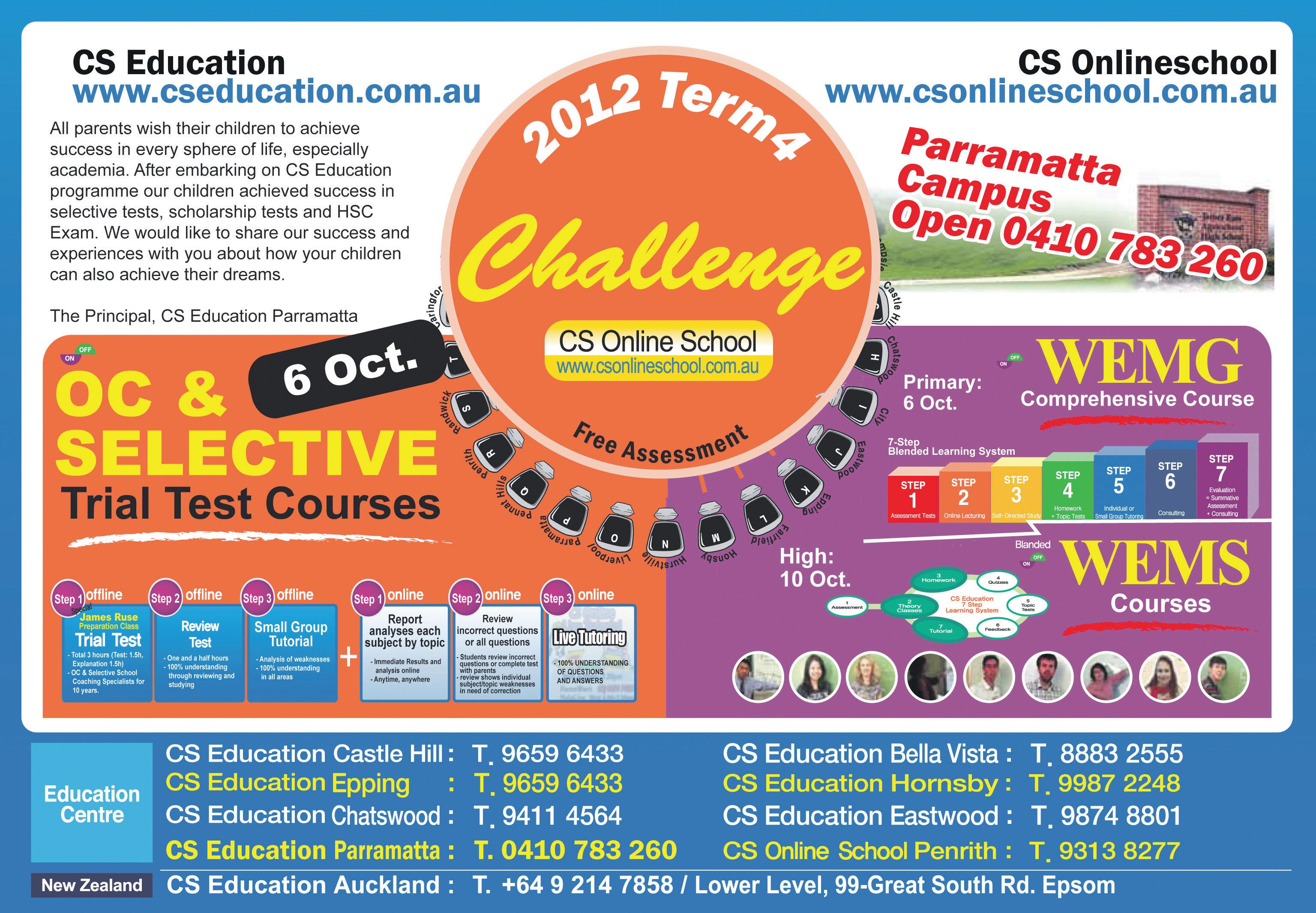
FESTIVAL
Sydney Jain Mandal’s Dandia Night
Sat 13 Oct Come and enjoy a family fun event at Campbell Park Scout Hall, Wilga St, Off Victoria Rd West Pennant Hills, NSW 2125. 6.00pm-11.00pm. Raffle tickets, best dressed prize for male and female, lots of food and much more Details Abha Jain 0432 248 791.
Navratri
Sat 20 Oct Navratri Cultural Group presents Raas Garba at Michael Wenden Aquatic Leisure Centre 62 Cabramatta Road, Miller (Near Liverpool) NSW 2168. 6.30pm – 11.00pm. Details Nimesh Shah 0437 980 296.
Deepavali Milan
Sat 10 Nov Celebrate Diwali with friends on the North Shore: Laxmi Poojan, cultural program, lucky draw prizes, dinner. Town Hall, 1186 Pacific Highway, Pymble NSW, 6.00pm. Details Kamini Sahni 0401 059 923.
6 OCTOBER (1) 2012 www.indianlink.com.au


OCTOBER (1) 2012 7 NATIONAL EDITION
Hindi for the soul
BY DOLLY SINGH MIRANDA
“Learning your own language helps strengthen your identity,” said Victor Dominello, NSW Minister for Citizenship, Communities and Aboriginal Affairs, at Hindi Divas celebrations in Sydney last month.
Hindi Mela, a 2-day celebration organised by Australian Hindi Committee, IABBV Hindi School and the Indian Literary and Art Society of Australia (ILASA) to mark Hindi Divas consisted of a plethora of treats for the lovers of the language.
A kavi sammelan (poets’ meet) held at Epping and a whole day event organised by the IABBV Hindi School at Thornleigh Public School had it all: from poems and recitations to ghazals and songs, from sher-o-shayari and dohas to plays and skits, it was all about Hindi, displayed in its full glory, glowing with pride and basking in the attention of the rapt audience!
Hindi School event
The celebrations at the IABBV Hindi school were kick started by Mala Mehta who shared her vision of Hindi being introduced and taught in all mainstream schools in Australia and a greater understanding and acceptance of the Indian culture in the mainstream.
It was very encouraging to see the support of many dignitaries present including Victor Dominello, Consul General of India Arun Goel, MPs Phillip Ruddock and Matt Kean MP, Dr Phil Lambert from the Department of Education and Training, Mayor of Hornsby Shire Steve Russell, singer Kamahl Kamalesvaran and Principal of Giraween Hindi School Gunjan Tripathi, among others.
Victor Dominello spoke about the “importance of knowing your roots” and congratulated Mala for her hard work, passion and pioneering work for Hindi in Australia.
Dr Lambert also echoed the same sentiments and spoke about the “growing need for Australia to understand contemporary India”.
The most-awaited part of the day was however, the performances by the young students, who have made their teachers and parents proud!
These students have shown exceptional commitment to their mother-tongue, spending their Sunday mornings at the Hindi School, learning the language and staying deeply connected to their roots and the community.
The teachers have also shown equal fervour, dedication and passion for the language by volunteering their time and knowledge at the school.
They performed with equal vigour Tagore’s famous play Kabuliwalla as well as a poem composed and written by teacher Varsha, Sapna London Ka, inspired by the London Olympics.
The little ones delighted with Ek raja ki beti, Ek chiriya ke bacche, and Incy winsy makra
One poem which was highly appreciated by all was titled Sooraj aur chand a beautiful poem about God.
Jisne suraj chand bannaya, jisne taaron ko chamkaayan
Jisne chidiyo ko chehekaya, jisne phoolon ko mehkaya
Jisne saara jagat banaaya, jisne rachi
hamari kaaya
Us eshwar ko sada manao, use prem se
shish jhukao
The tabla presentation by 6-year-old Babu Cunio, was simply touching.
Renowned singer Kamahl, recited Nobel Laureate Rabindranath Tagore’s famous Where the mind is without fear and the head is held high, and had the audience completely enthralled and enraptured!
He also recited Unending Love by Tagore, which apparently was also a favourite of Audrey Hepburn!
The event was also marked
by students receiving awards for outstanding achievement and excellence in Hindi.
Nidhi Daithankar and Vritee Divecha received the NSW Minister’s Awards 2012 for excellence in Hindi.

Astha Rajvanshi and Ankita Sachdeva (alumni) were commended for their achievements outside the Hindi School. The winners of the essay competition were Pallavi Arora (15) from Mac Robertson GHS Melbourne for her essay on Meri Naani; Hardik Trivedi (16) from Glen Waverly Secondary College Melbourne and Saumya Kakria of Mac Robertson GHS Melbourne for their essay Mere Pita, and Pallavi Singh from Fairhills HS Melbourne for her essay Mother Teresa.
Awards were also given for poetry recitation and photo essay competitions. The Indian Consulate in Sydney and community organisations sponsored the prizes.

The occasion also saw the release of Rekha Rajvanshi’s new book Kangaroon ke desh mein, based on the experiences of new migrant families. The post lunch session was devoted to drama.
The first play Mera Pushpak Vimaan written by a well know Hindi writer KM Mishra and directed by Rekha Rajvanshi was based on a working class family man who dreams of owning an airplane!
their ware.
A common theme was – you guessed it – love!
Poets Ritu Bhamra, Manju Mittal, Anu Chhabra, Rajpal Sandhu, Sukhpreet and Pradeep, all spoke about this wonderful yet frustrating state of mind.
Pradeep, who came last but got the heartiest laughs, presented brilliantly on the challenges and difficulties of expressing love in the Hindi language. There was much laughter as he recited some hilarious incidents of trying to write love letters in Hindi during his student days.
Relationships as a theme was also frequently visited. Presenters Sonu Sarda, Rajpal Sandhu, Ritu Bhamra, and Manju Mittal, all touched on various aspects and nuances of relationships
Sonu Sarda’s Rishtoh Kee Udhedh Bun was particularly memorable: Rishtey hum jitna bunte hai utna udhedte jaate hai Kisse ko jyaada pyaar karein toh takrar keh bahane ban jaate hain Har rishta apeksha mein itna ulajh jaata hain kee har pal upekshith mehsoos karta hai Aur phir na rishta rehta hai na pyaar Reh jaata hai to bas ek lokhachar
Kitty is gone missing written by Neena Badhwar and directed by Rekha Rajvanshi revolved around some central themes of issues faced by families after migrating to Australia. It used humour to portray sensitive points around changing values, ethos and lifestyles among the Indian families!
The final play Ek adbhoot kahani, was an abridged version of a short play by Bimal Banerjee, translated into Hindi by Rekha Rajvanshi.
Kavi Sammelan
Rekha Rajvanshi’s opening lines at this year’s Kavi Sammelan were a perfect aperitif to prepare the palate for the beautiful evening to follow.
Kissi Geeta se na pooja se ada hotee hai Na badhshahon kee daulat se ada hotee hai
Rehmatein sirf barastee hai unhee daaman mein jinme bujurgo kee dua hotee hai
The event brought together seasoned as well as fresh talent in perfect harmony.
Held at the Epping Leisure and Learning Centre and entitled Kavi ke udgaar, sangeet kee jhankaar, it was in beautiful baithak style, complete with silk and satin rugs, sequin cushions and Lord Ganesha’s idol on the podium.

Along with the more experienced, established poets, nine upcoming “shayaars” (most of them finds from Facebook) presented
Other topics included the Hindi language (Asmita, Pradeep), India (Vimla Luthra), Life and dreams (Garima Trivedi), Indian woman (Sonu Sarda) and Maa (Asmita).
A special mention of the renowned, spirited and a mentor to many, Om Krishna Rahat, lovingly called “OK Uncle”. His narrations also had people laughing, cheering and clapping loudly!
As if the soul needed more, the poetry was interspersed with music and songs sung by the famous and extremely melodious Pushpa and Vinod.
They belted out some evergreen hits like Mere toh Girdhar Gopal, Waqt ne kiya kyaa haseen sitam, and Taube tumhaare yeh ishaare among others!
Lalit Mehra sang songs inspired by the sufiana gharana, and Shobha rendered an edition of Megha chaye aadhee raat.
Amidst all this, there were tributes to the greats of the Indian literary society – Amir Khusro, Ghalib, Kaifi Azmi, Javed Akhtar and Gulzaar.
The evening was graced by many dignitaries and leaders of the community including Vice Consul Mr. Sethi with his wife.
One also had the privilege of chatting with some spirited and keen senior citizens, who are writers and poets themselves and follow their passion keenly, like Kailash Bhatnagar and Vimla Luthra.
A beautiful evening indeed with Hindi poetry that touched the soul!
8 OCTOBER (1) 2012 www.indianlink.com.au
cO mmun ITysc E n E
Rekha Rajvanshi of ILASA with some of the poets who presented at this year’s Kavi Sammelan
Mala Mehta, founder-principal of IABBV Hindi School, with students and guests


OCTOBER (1) 2012 9 NATIONAL EDITION


10 OCTOBER (1) 2012 www.indianlink.com.au
Missing piece in the panel
China featured predominantly in an important discussion forum
BY LP AYER
Typically, the OzAsia Festival is not just a cultural feast for the eyes and ears or mouth-watering multi-ethnic cuisine. There is serious food for thought as well, in the form a panel discussion on a topic relating to the region, and a keynote address by a prominent personality.

This year’s topic for the panel discussion was ‘Preparing Australians for the Asian century’. The five panellists included eminent people from various fields such as retail business, arts, politics, industry and literature with excellent track records in their own field, besides close links with other countries in the Asian region. Moderated by Douglas Gautier, CEO and Artistic Director Adelaide Festival Centre, the panel consisted of Penny Wong, Minister for Finance; Carillo Gantner, President of the Melbourne Festival Board; Sidney Myer, chairman of Asialink and director of a number of companies including the Myer family company; Hieu Van Le, Lt Governor and Chairman of SA Multi-Cultural and Ethnic Affairs Commission; Marty Evans, Santos Vice President, Asia Pacific; and Alison Carroll, founding director of Asialink and author of a number of books on Asian arts. An impressive array of personalities indeed!
Almost every one of them has had strong links with one or two Asian countries. Penny Wong, we all know, came from Malaysia when she was just 8; Gantner was Counsellor (Cultural) at the Australian Embassy in Beijing and later a member of the AustraliaChina Council; Sidney Myer lived and worked in Malaysia; Hieu Van Le, the much respected Lt. Governor, was one of the first ‘boat people’ from Vietnam; Martyn Evans has worked in several Asian countries for Santos; and the moderator Douglas Gautier was Deputy Executive Director of the Hong Kong Tourism Board. So all of them had excellent knowledge of their respective patches.
But hang on! Is there something amiss? The OzAsia festival was widely promoted as having its focus on India. But there was not a single person on the panel with close links to India or who could speak on things Indian with authority! The organisers deserve full praise for presenting so many programmes from the diverse Indian cultural canvas. But it is somewhat intriguing how they slipped up in an important arena where serious exchange of information takes place.
The moderator put some excellent questions to the panel ranging from education, culture, arts and trade. Almost all of the panellists emphasised the importance of educational institutions here teaching Asian languages, and Australian students choosing to learn at least one language (read Chinese). It was also said that in order to get closer to Asia, we needed to go
beyond learning the language and gain an understanding of the culture. If I understood the tone of the remarks of the panellists it was, ‘all the way with China’. If I remember correct, in the ‘70s and early ‘80s, the emphasis was on Japan. It was the richest Asian nation then, and the largest trading partner. Now the gear has shifted to Beijing. The one who pays the piper calls the tunes?
I sharpened my ears to hear the word India at least once. Yes, it was mentioned. And only once. Alison Carroll pointed out that the Australia Council funding in Performing Arts for various cultural exchange programmes for various countries had greatly declined for India in the past few years, whereas Korea and Japan scored very well.
The hour-long discussion was followed by a Q&A session for about half an hour, and I returned home still puzzled over the missing piece. Or was it sour grapes?
However, the final day of the customary Moon Lantern events had a fair share of Indian participation with various groups including Indian Australian Association, Guru Nanak Society, Mudra Academy and Kalalaya among others, performing colourful dances on the river banks. In spite of inclement weather, over 20,000 people enjoyed the dances and the dishes from ethnic food stalls.
Keynote speech
The keynote speaker this year was Prof. Amareswar Galla, and his talk was titled, ‘More than meets the eye: Safeguarding
intangible heritage – Asian Australian perspectives’. Amar Galla can truly be called a world citizen; he migrated from India and lived in Australia for 25 years working as a professor at the University of Queensland and ANU. He then worked in South Africa for five years and is now living in Denmark, directing the International Institute for the Inclusive Museum in Copenhagen, while also functioning as Professor of World Heritage and Sustainable Development at the University of Split in Croatia.
Prof Galla led a National Affirmative Action programme for the participation of Aboriginal and Torres Straits Island peoples in Australian museums and galleries. He has directed similar projects in Canada, US, Brazil, Vietnam, India China, Norway and several island states.


With such incredible credentials, he seemed a good choice to deliver the keynote address. The main theme of Prof Galla’s address was that heritage is not limited to mere physical objects but to include intangibles like activities and traditions inherited from ancestors and transmitted to dependants through the spoken
word. His question was, with so many ethnic communities now living in Australia, how do we acknowledge and engage with the intangible heritage of so many rich cultures. And how do we also recognise the first Australians, our indigenous people, and reflect in our sense of place the company of both the original culture and subsequent cultures that have arrived on our shores.
Prof Galla made mention of a forum he attended in Adelaide in 1989 that put arts and culture into the landmark ‘National Agenda for a Multicultural Australia’ launched by the then Prime Minister, Bob Hawke.
Through a slideshow he took the audience along the journey he has travelled to various parts of the world, in his efforts to preserve and promote the intangible heritage of local peoples.
INDIAN LINK OZ ASIA FESTIVAL
If I understood he tone of the remarks of the panellists it was, ‘all the way with China’
Prof. Amareshwar Galla
(From left) Doug Gautier, Alison Carroll, Hieu Van Le, Sidney Myer, Penny Wong, Martyn Eames and Carrillo Gantner
OCTOBER 2012 11
A glimpse of Vaikunta at SVT Brahmotsavam

Sri Vaishnavites in Sydney conducted Brahmotsavam celebrations with customary pomp and ritualistic splendour at Sri Venkateshwara Temple in Helensburgh. Led by head priest Sridharan Bhattar, SVT has been holding the iconic festival since 2010. Coinciding with Sri Balaji Brahmotsavam in Tirupati, the ten-day thanksgiving festival, which falls in the Purataasi month (September/October), is a rare opportunity to experience Vaikunta Anubhavam. It is believed that the creator Lord Brahma himself prayed to Vishnu on the banks of Pushkarni for protecting the human race.
Commencing with the Dwaja aarohanam (hoisting of Garuda’s flag at dhwajasthambam), the tenday festival was marked by daily homam, Vedic chanting, special abhishekam and alankaaram



The highlight of the festival of course is the daily alankaaram and ritualistic procession, when the resplendent utsava murthy is taken out in a majestic pageant on different vahanas - Sesha, Pushpa, Garuda, Simha, Hanumantha, Gaja, Sarva Bhoopala, Chandra and Surya Prabhai, Mohini alankaaram and Pallaku, culminating with Ratha or the grand chariot procession, which was custom built specially for the festival.
Hundreds of devotees participated in the event. SVT ran special buses from Homebush to cater to the less mobile. Communal chanting and daily annadhaanam were integral part of the grand celebrations.

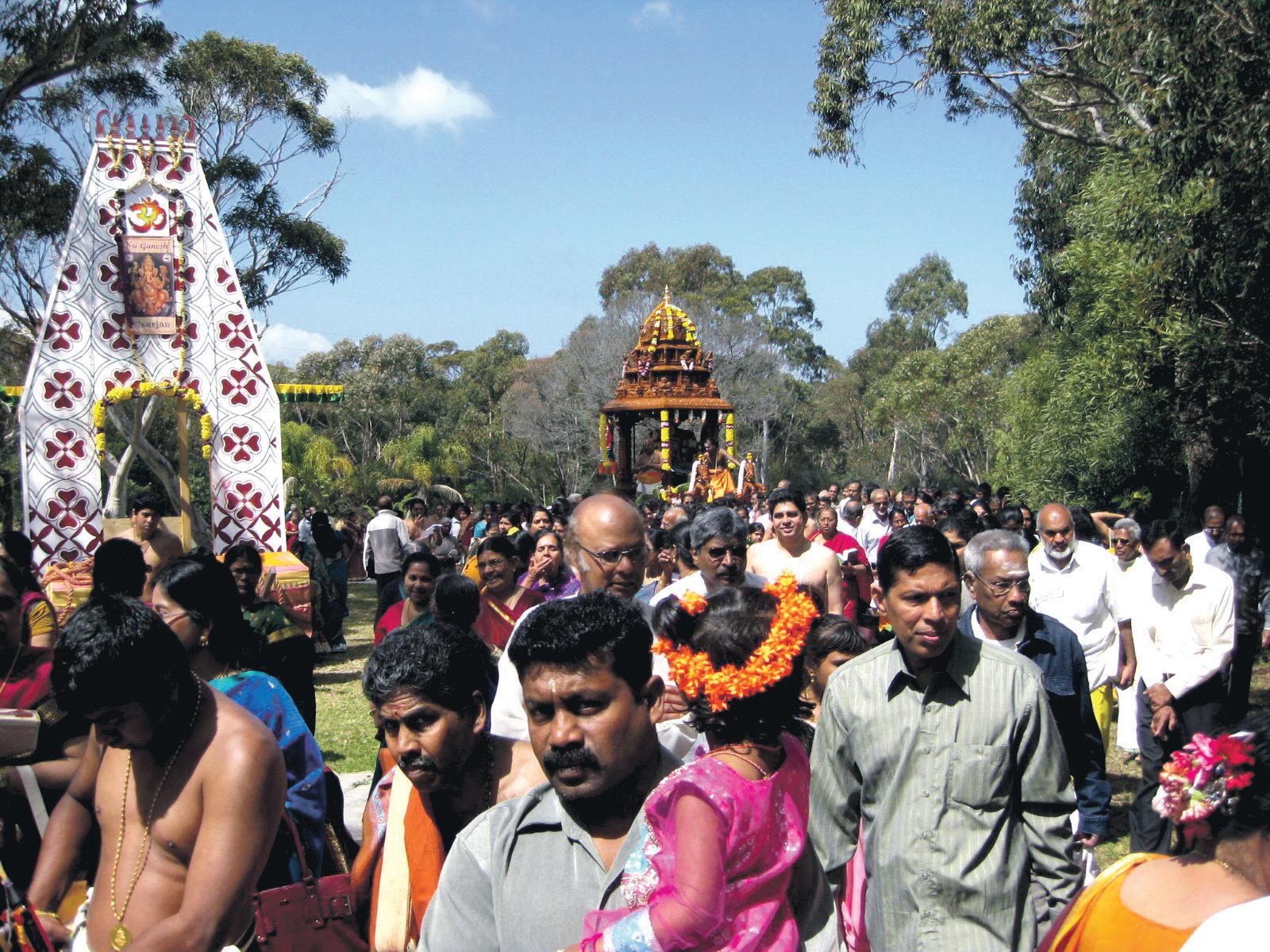

Usha Ramanujam Arvind

f E s TI vAL




OCTOBER (1) 2012 13 NATIONAL EDITION
A Telengana twist at Ganesha fest
More than 250 people gathered in a Girraween celebration of Ganeshotsav organised by the Australian Telengana Forum in end September. The elephantheaded pot-bellied god of good beginnings, the remover of obstacles, was felicitated by the Telugu community of Western Sydney at the event. They were joined also by a sizable number of mainstream Australians, in a wonderful spirit of multiculturalism.


Priest Phanindra Sharma performed a two-hour prayer ceremony as guests walked in and paid obeisance. Children received a pooja pen each from the priest, besides of course the special prasad on the occasion. A cultural program followed, the highlight being Taruni’s classical dance.
Earlier some twenty kids had participated in a clay Ganesh idol
making activity, with prizes going out for the best creations.
The fun-loving Ganesha is one of the most loved among the pantheon of Hindu gods. His particular love of sweet laddoos makes the food item a must at this event, even considered auspicious. In a wonderful Telengana twist, the traditional ‘laddoo auction’ was performed at the Girraween celebration. Vani Elete organised the auction, which started modestly at $50 but soon crossed last year’s record of $350, and with much excitement and fanfare, ended up at $700, the victorious bidders being Abhilash Reddy and team, who broke into chants of “Jai bolo Ganesh maharaj ki jai!”
ATF President Upender Gadey ably led his executive committee team in organising the event. General Secretary Venkata Prasad Ragipani was pleased at having shared this ancient Indian tradition with local Australians.
Ganesha comes to Sydney’s north shore
The Ganesh festival was held at the community level for the first time at Hornsby this year. Led by the Bedarkar family who are well-known for recreating the spirit of the iconic festival, the event saw some 200 people gather at Asquith Community Centre. They offered joint prayers to Ganesha, the God of Good Beginnings and the Remover of Obstacles.
The priest Sriparashara Hrishikesha Bhatt performed the rituals in Sanskrit, translating as best as he could in English while also elaborating, and got the crowd to repeat after him at significant points. The clay idol of Ganesh sat in all its glory on a raised platform, as Shailendra and Rashmi Bedarkar took turns to offer, on behalf of all present, the ritual druva glass blades, red flowers, coconut, modak and chandan sandalwood paste.
The crowd chanted together the
108 salutations dedicated to Lord Ganesha, and the singing of the Ganesh Aarti reverberated in the hall.

For Shai and Rashmi, the Marathi tradition of Ganeshutsav has been a labour of love. An annual event at their home, they prepare for the ten-day celebration months in advance, painstakingly sculpting their idol of Ganesha and decorating it with a particular creative theme each year (Ashta Vinayaka, the twelve chakras, lotus,

swan, and muladhara being a few). Their festivities began to attract such numbers each year that this year it simply had to take on a public form. There is no doubt that it will become an annual community celebration from here on.
“Our aim was always to recreate the passion and fervour of the celebrations in Mumbai, for our kids here”, Shai told Indian Link He certainly seems to have succeeded, as he pointed out that
evening, in the case of young Roma Kore. She first came to their Ganesh festival ten years ago as a baby in her mother’s arms. She returned, quite like Ganesh himself, each year, and this time round, presented a dance item as a confident and beautiful elevenyear-old.
Besides the pooja and cultural items, friends and family chipped in to create a mela feel – with stalls offering food and mehendi and other services.
cOv ER s TORy
Friends and family join Shai and Rashmi Bedarkar with kids Nishtha and Kanek at this year’s North Shore Ganesh Utsav
14 OCTOBER (1) 2012 www.indianlink.com.au
Iconic festival brings communities together
It’s traditional pomp, splendour and fanfare at SVT’s Ganesh Chaturthi celebrations
 BY USHA RAMANUJAM ARVIND
BY USHA RAMANUJAM ARVIND

Sydneysiders ushered in the season of festivities recently with grand Ganesh Chathurthi celebrations at the Sri Venkateshwara Temple (SVT) in Helensburgh. Marked by day-long events, SVT’s Ganesh Visarjan festival draws Hindu devotees of diverse ethnicity and ancestry (and more recently nonHindu, but no less enthusiastic onlookers) by the thousands.
In recent years, Hindus not merely from India and Sri Lanka, but those from Nepal, Fiji, Malaysia, Singapore and South Africa have been actively involved in the celebrations. The temple committee is now determined to reach out to Hindu brethren of Bhutanese, Thai and Cambodian heritage as well.
Significantly, talks are currently in progress between SVT and Wollongong Council to make the iconic festival a regional fixture.
“The council wants to work closely with us to make this a regional or even a national event and create major activities around it,” temple vice president Murali Dharan told Indian Link
Murali Dharan further indicated that the Hindu Council was liaising with all Hindu temples and associations in Sydney to bring them together for Ganesh Visarjan.


Celebrations this year were extra special as the event coincided with the annual Brahmotsavam. The sprawling temple complex was packed to capacity, with crowds peaking at midday. Whether it was supervising transport arrangements, directing traffic, cooking sumptuous meals or manning queues at the canteen, SVT’s dedicated army of volunteers were on their toes, coordinating the whole exercise without a glitch. Be it veteran committee members or new recruits, service with a smile was the recurring motto.
As is customary, the Chathurthi celebrations began with Trisathi homam, abhishekam, alankaaram and deeparadhana for both the moolavar
and utsavar at Siva complex. In keeping with the custom of many decades, SVT president Dr Kanag Baska’s handmade Ganesha held pride of place as thousands paid homage to the God of good beginnings. A number of clay creations made lovingly by devotees young and old, shared the centre-stage.
Amidst chanting, the idols were then taken in a grand procession around the temple, as bhaktas vied with each other for the privilege of carrying the divine burden.
The whole temple was decorated with elaborate thoranams, pandals and intricate flower arrangements, with the best naturally reserved for the deity.
The occasion was as much social, as religious. Outside the praahaaram, the newly erected canopy served as a perfect backdrop for the daylong cultural showcase. Carnatic renditions, bhajans, Bharatanatyam performances both group and solo, kept the milling crowds entertained. Dedicated volunteers engaged young children with clay modelling and decorating workshops.
An absolute stand out was the community kitchen, which has always been a great draw card. It is to the temple committee’s credit that parallel annadhaanam and canteen lines were simultaneously catered for.
The maanga saadham (mango rice) was a great crowd pleaser while masala dosai fans tucked into their all-time favourite. Crunchy ulundu vadais, fluffy idlis, rotti parathas and SVT canteen staples - mixture, laddu and jangiri were also on the menu. Sydney Ayyappa Samaj volunteers doled out endless cups of delicious neeru moru (spicy buttermilk made with a secret recipe apparently). The specially erected pandals offered devotees the perfect venue for relaxed outdoor feasting.
It was time for the muchawaited segment – the final procession to Stanwell Beach. Each year the ‘Bambaiyya’ style procession gets bigger and better as the favourite Hindu god is farewelled amidst chiming of bells, blowing of trumpets and beating of drums by devotees.
This year the Marathi community provided a welcome addition – a traditional percussion band that has already wowed audiences at the Australia India Fair. As the

high intensity group unveiled their repertoire, the crowds broke into spontaneous dance. What a feast for the senses; it was a time to forget life’s unending worries and surrender to call of the divine!
It may be recalled that the tradition of communal celebrations was first started by Lokmanya Tilak to awaken the spirit of nationalism among Hindus and unite the community. Despite surging costs, safety issues and increasing pressure on crowd and traffic management, this concept is hugely popular back home. It is little wonder that this age old tradition is bonding the extended Hindu community here in Sydney. If talks with
Wollongong Council eventuate into positive action, the Ganesh Visarjan festival may well become an integral fixture of the region and a testimonial to the vibrant
Amidst chanting, the idols were then taken in a grand procession around the temple, as bhaktas vied with each other for the privilege of carrying the divine burden
f E s TI vAL
15 OCTOBER (1) 2012
Why we love Ganesha
BY USHA RAMANUJAM ARVIND

and moved by the affection of his devotees.
Yet at the same time the elephant can destroy a whole forest and is in himself, a one-man army when provoked. Ganesha is similarly most powerful and can be ruthless when containing evil.
Chamara
Vamana
Vigna
Vignavinayaka, Vakrathunda, Lambodhara, Sarvasidhantha, Gajanana, Ganapati are just a few of the 108 names that extol the virtues of Ganesha.
The elephant-headed, potbellied elder son of Shiva and Parvati is not only the foremost God among the Hindu pantheon, he is perhaps the most loved too. In his capacity to remove all obstacles, Ganesha is remembered everyday by one and all.
Often associated with the auspicious ‘Om’, he is among the most enigmatic as well. Ganesha’s physical attributes are themselves rich in complex symbolism. In fact, every part of Ganesha’s sumptuous body tells its own little tale.
Primarily, the image of Ganesha is a composite anthropomorphic one. Four living entities - man, elephant, serpent and mouse have contributed to the makeup of his figure. All of them individually and collectively have deep symbolic overtones. Ganesha thus represents man’s eternal striving towards integration with nature. This has to be interpreted taking into consideration the fact that despite evolution over many millennia, man remains closer to animals today than he was ever before.

The most striking feature of Ganesha is his elephant head, symbolic of auspiciousness, strength and intellectual prowess.
On the forehead, the Trishula (weapon of Shiva) is depicted, symbolising time (past, present and future) and Ganesha’s mastery over it. All the qualities of the elephant are contained in the form of Ganapati. The elephant is the largest and strongest of animals of the forest. Yet he is gentle and, amazingly, a vegetarian, so that he does not kill to eat. He is very affectionate and loyal to his keeper and is greatly swayed if love and kindness are extended to him. Ganesha, though a powerful deity, is no less loving and forgiving,
Again, Ganesha’s large head is symbolic of the wisdom of the elephant. His large ears like the winnow, sift the bad from the good. Although they hear everything, they retain only that which is good; they are attentive to all requests made by the devotees, be they humble or powerful.
While the large ears and head receive all information, the small mouth talks less and the tiny eyes represent utmost concentration.
Ganesha’s trunk is a symbol of his discrimination (viveka), a most important quality necessary for spiritual progress. The elephant uses its trunk to push down a massive tree, carry huge logs to the river and for other heavy tasks. The same huge trunk is used to pick up a few blades of grass, to break a small coconut, remove the hard nut and eat the soft kernel inside. The biggest and most minute of tasks are within the range of this trunk which is symbolic of Ganesha’s intellect and his powers of discrimination.
The curved trunk perhaps also represents the arousal of the powers of the kundalini. The trunk relates to the power of human mind. It must be strong enough to handle the external world, but delicate enough to explore the subtle realms of the inner sanctum.
Yet another intriguing aspect of Ganesha’s iconography is his broken tusk, Ekdanta - Ek meaning one and danta meaning teeth. Theologists believe that the two tusks represent wisdom and emotion. The broken left tusk signifies that one must conquer emotions with wisdom to attain perfection. It carries an interesting legend behind it:
When Parashurama, one of Shiva’s favourite disciples, came to visit him, he found Ganesha guarding Shiva’s inner apartments. His father being asleep, Ganesha opposed Parshurama’s entry. Parashurama nevertheless tried to urge his way, and a tussle ensued.
Ganesha had at first the advantage, seizing Parashurama in his trunk, and giving him a twirl that left him sick and senseless; on recovering, Rama threw his axe at Ganesha, who recognizing it as his father’s
weapon (Shiva having given it to Parashurama) received it with all humility upon one of his tusks, which it immediately severed, and hence Ganesha has but one tusk.
A different legend narrates that Ganesha was asked to scribe down the epic of Mahabharata, dictated to him by its author, sage Vyasa. Taking into note the enormity and significance of the task, Ganesha realized the inadequacy of any ordinary ‘pen’ to undertake the task. He thus broke one of his own tusks and made a pen out of it. The lesson offered here is that no sacrifice is big enough in the pursuit of knowledge.
Ganesha is often portrayed with six hands. One is normally shown in the abhaya (fearless) pose of protection and refuge, and the second holding a sweet (modaka), symbolic of the sweetness of the realized inner self. The modak represents the reward for sadhana, while the prasad at his feet represents the world at one’s feet waiting to be conquered. Ganesha also holds an axe to cut off bonds of attachment.
In the two hands behind him he often holds an ankusha (elephant goad) and a pasha (noose). The noose is to convey that worldly attachments and desires are a noose. The goad is to prod man to the path of righteousness and truth. With this goad Ganesha can both strike and repel obstacles. Yet another hand holds a lotus flower (padma), and it symbolizes the highest goal of human evolution, the sweetness
of the realised inner self.
Ganesha’s pot-belly contains infinite universes. It signifies the bounty of nature and equanimity, the ability of Ganesha to swallow the sorrows of the Universe and protect the world; the position of his legs (one resting on the ground and one raised) indicate the importance of living and participating in the material world as well as in the spiritual world, the ability to live in the world without being of the world.
The little mouse that Ganesha is supposed to ride upon is another enigmatic feature in his iconography. Lord Ganesha sits on a tray of laddus signifying the wealth and prosperity that he gave to his devotees. However, a mouse sits near the bottom of the statue to represent the ego that can eat away at the goodness of a person. At a cursory glance it seems strange that the lord of supreme wisdom has been granted a humble obsequious mouse quite incapable of lifting the bulging belly and massive head that he possesses. But it implies that wisdom is an attribute of an ugly conglomeration of factors, and further that the wise do not find anything in the world disproportionate or ugly.
The mouse is, in every respect, comparable to the intellect. It is able to slip unobserved or without our knowledge into places which we would have not thought it possible to penetrate. In doing this it is hardly concerned whether it is seeking virtue or vice. The mouse thus represents our wandering, wayward mind, lured to
undesirable or corrupting grounds. By showing the mouse paying subservience to Lord Ganesha it is implied that the intellect has been tamed through Ganesha’s power of discrimination.
Any attempt to penetrate the depths of the Ganesha phenomenon must note that he is born from Goddess Parvati alone, and as such he shares a very unique and special relationship with his mother. The sensitive nature of his relationship with Parvati is made amply clear in the following tale:
As a child, Ganesha teased a cat by pulling its tail, rolling it over on the ground and causing it great pain, as naughty young boys are wont to do. After some time, tired of his game, he went to his mother Parvati. He found her in great pain and covered with scratches and dust all over. When he questioned her, she put the blame on him. She explained that she was the cat whom Ganesha had teased.
His total devotion towards his mother is the reason why in the South Indian tradition, Ganesha is represented as single and celibate. It is said that he felt that his mother Parvati, was the most beautiful and perfect woman in the universe. Bring me a woman as beautiful as she is and I shall marry her, he said. None could find an equal to the beautiful Uma (Parvati), and so the legend goes, the search is still on...
In variance with the South Indian tradition, in North India Ganesha is often shown married to the two daughters of Brahma (the Lord of Creation), namely Buddhi and Siddhi. Metaphorically Buddhi signifies wisdom and Siddhi, achievement. In the sense of yoga, Buddhi and Siddhi represent the female and male currents in the human body. In visual arts this aspect of Ganesha is represented with grace and charm.
Likewise, no analysis of Lord Ganesha can be concluded without a mention of the mystical syllable Om - the most powerful universal symbol of the divine presence in Hindu thought. The written manifestation of this divine symbol when inverted gives the perfect profile of the god with the elephant head.
16 OCTOBER (1) 2012 www.indianlink.com.au cOv ER s TORy
Mooshika vaahana modhaka hastha
karna vilambitha suthra
rupa maheswara puthra
vinayaga padha namaste
Indian artist Milon Mukherjee’s Nata (naughty) Ganesha: The young Ganesha imitates his father Shiva doing the tandava, the dance of creation
This popular Hindu elephant god has complex symbolism in every facet of his divine avatar
Free Visa Assessment* for Students & their Employers
Just
some of our many satisfied clients:
• “Many thanks for acting promptly when needed.” – K. Patel, 457 Sponsor, Sydney

• “Very satisfactory service provided by Mr. Ramneek Madahar regarding my visa complications.” - P. Singh, Ellenbrook, WA
• “Everything was well planned & Systematic. Must recommend for Immigration issues.” - H. Gandhi, 457 Visas, Merrylands, NSW

• “I am really very thankful & overjoyed... lead me through the toughest situation to final success.” - N. Singh, GSM grant under 2 months.
• After 8503 (no further stay), condition waiver, my student visa was refused. Thank you Mr. Ramneek for a successful appeal at the Migration Review Tribunal without a hearing. P.D. Glenmore park, NSW
• “I got my 457 work-permit (from student visa) within 4 weeks. Mr. Ramneek done his work very accurately, on time, without any failure & provides perfect guidance. I am very happy with his work & very thankful to him” - Chirag Patel, Kew, Victoria.
• “I was able to negotiate through the complicated process & retain a baker full time in my business. For 457 working visas, Mr. Ramneek Madahar’s services are highly recommended. Definitely a 5 star service.” - Harry, Bakery Owner, Oatley, NSW
• “I was finally able to receive confident & correct advice in relation to my situation from Mr. Ramneek Madahar.” - G. Bastola, For SC457 Visa, Homebush, NSW
• “Thank you for your timely assistance with our restaurant sponsorship and 457 visa grant.” CH Patel & DC Patel, Restaurant Owners, Camberwell, Victoria
• “Ramneek Sir has made our 457 visa 100% successful. Thank you forever.”
- Shruti Shah, Merrylands, NSW
• “I was a student in Australia. Mr. Ramneek helped me for a 457 visa.”
- Chaudhari Prakash, Ashfield, NSW
• “I was on a Bridging visa for my SC885 visa application on 110 points. Mr. Ramneek made my 457 visa possible.” - C. Patel, Merrylands, NSW
• “For any complex cases, to anyone who needs help in immigration... don’t worry you are in safe hands.” - A.H., 457 Work Visa, Cronulla, NSW
“I sincerely recommend Mr. Ramneek’s services for immigration.” -K.K., Central Coast,NSW
• “Thank you Ramneek, I wish you all the best.’ - S. N., GSM Visa, Egypt
• “Mr Ramneek Madahar, thank you very much for our PR. Your efforts are appreciated & thanks for looking after my case – D. Patel, Business Skills, Melbourne, Victoria
• “I am thankful to Ramneek for my permanent settlement in Australia.”
- Vikas, GSM, Parramatta, NSW
• “I applied for Regional - SC119 visa under the DRC on 15/11/2011, the visa was granted on 09/02/2012. Mr. Madahar has handled my application very well.” - Vijaya, Bourke, NSW
• “Thank you Mr. Ramneek for my ENS PR under exceptional circumstances.”
- S. Kumar, Croydon, NSW
• “Thank you for your support & help towards my ENS PR.” – S. N., Ingleburn, NSW.

• “I am very thankful to Ramneek Sir for his help & support for my ENS residency. I had no hopes left & was planning to go back to India with my family.”
- K. Shah, South Strathfield, NSW
OCTOBER (1) 2012 17 NATIONAL EDITION Course
(457s,
ENS), Partner Visa, Family Visa, Tribunal Appeals & Waivers, General Skilled Migration.
Admissions (Australia wide), Student Visas, Work/Sponsorship Visas
RSMS,
* Provision of complimentary advice &/or assessment for our eligible students &/or their employers is at our sole discretion.
The Great Learning Tree Pty Ltd (Ramneek Madahar, RMA# 0428459) UNIT 6, 24-26 Morwick St., Strathfield, NSW 2135 (5 min. walk from Strathfield Station. Opp. Strathfield Recreational Club/Tennis Courts)
• Thanks Very – very much for your help for extending my student visa and 457 and RSMS advice. - A.Rani, Smithfield Education, Career & Visa Solutions @ The Great Learning Tree
Calling all Students, Employers! There has never been a better time to apply for a SC 457 visa (Employer Sponsorship) us on 0402 255977 or email resume to applyphysio@gmail
For appointments, please call 02-9745 3106 or 0412 764 600 or email: enquiries@tglt.com.au
Nothing like a father’s love for his daughter
Drawing parallels from history and eternal love, a daring new movie explores the father-daughter relationship
BY AVI CHANDIOK
Winston Furlong’s first feature film
Taj premiered in Adelaide as part of the OzAsia Festival 2012. Winston is a deepthinking writer who, in this film, has tried to put across some of his thoughts through the relationships and circumstances of his characters. The Sri Lankan born director’s visit to the Taj Mahal in India inspired him to depict the notion of the abiding love of Shah Jehan and Mumtaz Mahal, with the modern setting of Melbourne as a backdrop to the story. Taj is about estranged father Vjay, starring new find Mahesh Jadu, who realises almost too late his love for his 12-year-old daughter Priyanthi.
For me the star of the film is Priyanthi, played by the delightfully named Coco-Jacinta Cherian who is undoubtedly destined for greater things, having already secured a role in Neighbours. After neglecting his daughter for a couple of years, Vjay, who has been attempting to write a book while taking drugs and gambling, exercises his visiting rights which leads to the father and daughter drawing closer and eventually sharing the task of building a model of the Taj Mahal with Lego bricks, which is quite an original touch.
The director also introduces a couple of Vjay’s friends - the first, a restaurateur and the other,
a visitor from Fiji. Both point out and contrast how one should live one’s life against how Vjay is living his. This juxtaposition succeeds in highlighting Vjay’s pointless path and lifestyle. The writer tries to show how one needs to be authentic and true to oneself, doing the best one can and not to try to be someone else. By the end of the film we see Vjay waiting at tables and thinking about going back to teaching English as he used to do, as a path towards redemption. It’s a story about seeing the light and coming back onto the right path.
While Coco-Jacinta was faultless in her portrayal in every scene as the daughter of an estranged couple who loves both her parents and also her mother’s new love, Mahesh Jadu’s somewhat brooding performance lacks a little subtlety, but is easily compensated for by

Done well in the UMAT?
his shockingly good looks. The supporting cast provide varied performances with the character Arlene as Priyanthi’s mother, played by Natalie O¹Donnell, and Vjay’s estranged wife putting in a convincing performance in her attempt to get on with her life while protecting her daughter.
The film includes some events and scenes which could possibly have been handled differently, and as Furlong himself said, the suggestion that Vjay may have a form of cancer being included in the storyline perhaps did not quite come off. It’s easy to see how difficult it must be to try to strengthen a storyline by the inclusion of material that does not have a direct bearing on the plot.

The film has already been on the international festival circuit having been shown in Busan in South Korea, and Boston and Tiburon,
The next crucial stage is: THE INTERVIEWS!
Medical interviews are different from normal interviews and seek specific qualities. They happen right after your HSC exams so, for:
TUITION FOR MEDICAL INTERVIEW PREPARATION by a current medical student: Contact Yashutosh on 0402 788353
I’m experienced at interviews, having been to many myself two years ago and having tasted success not only in medical interviews but for scholarship and cadetship interviews as well. I’m proud to say that last year 95% of my interview students were successful in gaining entry into MBBS. It’s all about preparation and knowing how to present oneself for the optimum outcome.
Make the most of the opportunity now and ace those interviews!
ALSO A FEW VACANCIES LEFT for September 2012 and January 2013
school holiday classes of
PERSONALISED TUITION FOR UMAT 2013 and HSC English Advanced

both in the USA. It is due for a limited release in Australia later this year and I can see it making audiences sit up and think.
The screening of the film was followed by a Q&A session with Furlong, and there is nothing like meeting with the writer/director to give added life to a film.
Furlong immediately apologised for the inexplicable loss of synchronisation of the sound to the film, and then proceeded to give a bit of background and take questions.
It was interesting to note that he has given up a career in engineering, but one can see his passion and the sheer pleasure he gets from his present career of writing and film-making. Furlong had toyed with the idea of writing the great epic novel, but thought better of it. His eloquence and ease of communicating were quite
disarming and drew the audience closer to him. Furlong readily admitted that in the making of Taj he learned something about film-making but also learned a lot about himself. Furlong admitted that perhaps he should have spent a little more time on the script which was a little wanting occasionally. And yet, it’s a moving, sensitive film that leaves you wishing for a happy future for Vjay. In this self-funded fulllength movie, we have a man in Winston Furlong who took a risk, achieved a goal and is now setting about other projects. Incidentally, a new screenplay of his entitled Serena and Her Sisters was a finalist in the New York Screenplay competition 2012, in the Comedy section. Taj is not a Bollywood dholak film but one that has some truth to life and is well worth viewing.

18 OCTOBER (1) 2012 www.indianlink.com.au
OZ A s IA f E s TI vAL
Writer-director
Writer-director Winston Furlong, and a scene from his film Taj
Diamond Queen dazzles again
BY LP AYER
With India designated as the central theme, the Adelaide OzAsia 2012 festival began with an event that brought forth two major elements of art – music and cinema – from both India and Australia, in a creative presentation. It was the screening of a 1930s black and white Indian movie titled Diamond Queen, with a modern and unconventional Australian orchestra providing a continuous music score as the movie rolled along. Billed as the world premiere, this event was a novel and enjoyable form of entertainment lasting two hours. The organisers couldn’t have chosen a better programme than this screening to herald the fortnight-long festival.
The OzAsia Festival is in its sixth year running, and the organisers make each event distinctive by highlighting the cultural aspects of one of the neighbouring Asian countries, at the same time presenting some top performers from other South and South-East Asian countries.
After watching the SBS show Bollywood Star a few months ago won by Teigan Lloyd-Evans, most current generation Oz-Indians may think that this is the first time an Aussie girl has made it to Bollywood. They will be pleasantly surprised, perhaps even shocked, to know that the most prominent foreign lass to star in Hindi movies was a Perth girl named Mary Ann Evans, aka Fearless Nadia. She arrived there 80 years before Teigan, who has only got a look-in thanks to Anupam Sharma. Nadia however, had a long, long run acting in fifty films in the 1930s and ‘40s, with her latest in 1967 when the actress was in her late 50s.
The acrobatics of Aishwarya in Dhoom2 and Katrina Kaif in Ek Tha Tiger are a Sunday picnic compared to Nadia’s bag of tricks way back then. She became popular as the ‘Sultana of stunts’ and ‘Hunterwali’, after her most popular and daring film. However the blonde, blue eyed beauty did not just stop with beating up baddies, but delivered valuable messages on female equality,
education and empowerment. At one point in the film Diamond Queen she says, “If you want freedom, you need to educate women.” This was at the height of British suppression of the Indian freedom movement. And it is a credit to the patriotic spirit of the Wadia Brothers, producers of the film, who allowed such lines to be included. Some historians of the Indian filmdom believe that the ‘angry young man’ persona of Amitabh Bachchan might have had its roots in Nadia’s role, combining stunts with social themes.
The show ‘Fearless Nadia: The woman with the whip’ comprised of screening important sections of her film Diamond Queen on a large screen with the Orkestra of the Underground seated in front in the form of an arc.
The orchestra’s multicultural mix included traditional Indian instruments like the tabla, shenai, sarangi and harmonium along with usual western instruments like the trumpet, drums, violin, saxophone, clarinet, among others. I had some trepidation about how an old Indian movie could gel with an unconventional Australian orchestra, to perform as the opening show of a major festival. But soon the trepidation turned into admiration that kept growing with each succeeding scene. And it was thanks to the originality and creativity of Ben Walsh, the well-known composer and director.

The show began with the screening of an interview (given years before her death in 1996, at


the age of 88) by an elderly and yet beautiful Nadia, reminiscing her movie days. Then, bang!
Scenes from the Diamond Queen with English sub-titles appeared on the screen with the orchestra playing in perfect harmony with those images, helping the audience follow the story to the sounds of the live orchestra. As the movie was not shown in its full length, the missing parts of the story were displayed in a couple of lines, so no one missed the plot. This kept the tempo and continuity going. A clever ploy indeed!
Unlike today’s heroines, Nadia delivered her dialogues and sang in good Hindi. Single-handedly she biffed a dozen dadas at any time, a must act for today’s heroes in every South Indian movie. But unlike those heroes, Nadia’s stunts
were not brief stints but lasted the entire length of the film punctuated with some slapstick of that era, bringing peals of laughter from the audience very many times.
The stunts too, were not limited to Nadia on the screen. One of the orchestra’s members, violinist Shenzo Gregorio, was hoisted up in a triangular trapeze frame and held in midair as he continued to play his violin rolling in vertical rotation and also hanging upside down. Awesome! Earlier in the show, Ben Walsh and his drummer indulged in some kind of jugalbandi tapping their shoulders and thighs in perfect unison with the two tabla players, one of whom is well-known Aneesh Pradhan. Applause galore, well-deserved!
However the blonde, blue eyed beauty did not just stop with beating up baddies, but delivered valuable messages on female equality, education and empowerment
As the movie was not shown in its full length, the missing parts of the story were displayed in a couple of lines, so no one missed the plot
As the film ended on a happy note, true to Indian tradition, each member of the orchestra was beamed onto the big screen playing solo on their particular instrument. An ingenious use of the iPad. It was fitting, since the entire show was a blend of today’s technology with an entertainment medium of the last century.
Adelaide had the privilege of the world premiere and Mumbaikars will have the opportunity to savour this show when it travels there in November. The older generation can reminisce, the younger ones will realise that all the tricks and techniques of today’s movies are all old hat, and the Parsees will love to see what their sons, the Wadias, along with Nadia have achieved for the Indian art world.
OCTOBER (1) 2012 19 NATIONAL EDITION OZ A s IA f E s TI vAL
With the help of a live orchestra and modern technology, the woman with whips, quips and swinging hips comes to life



20 OCTOBER (1) 2012 www.indianlink.com.au

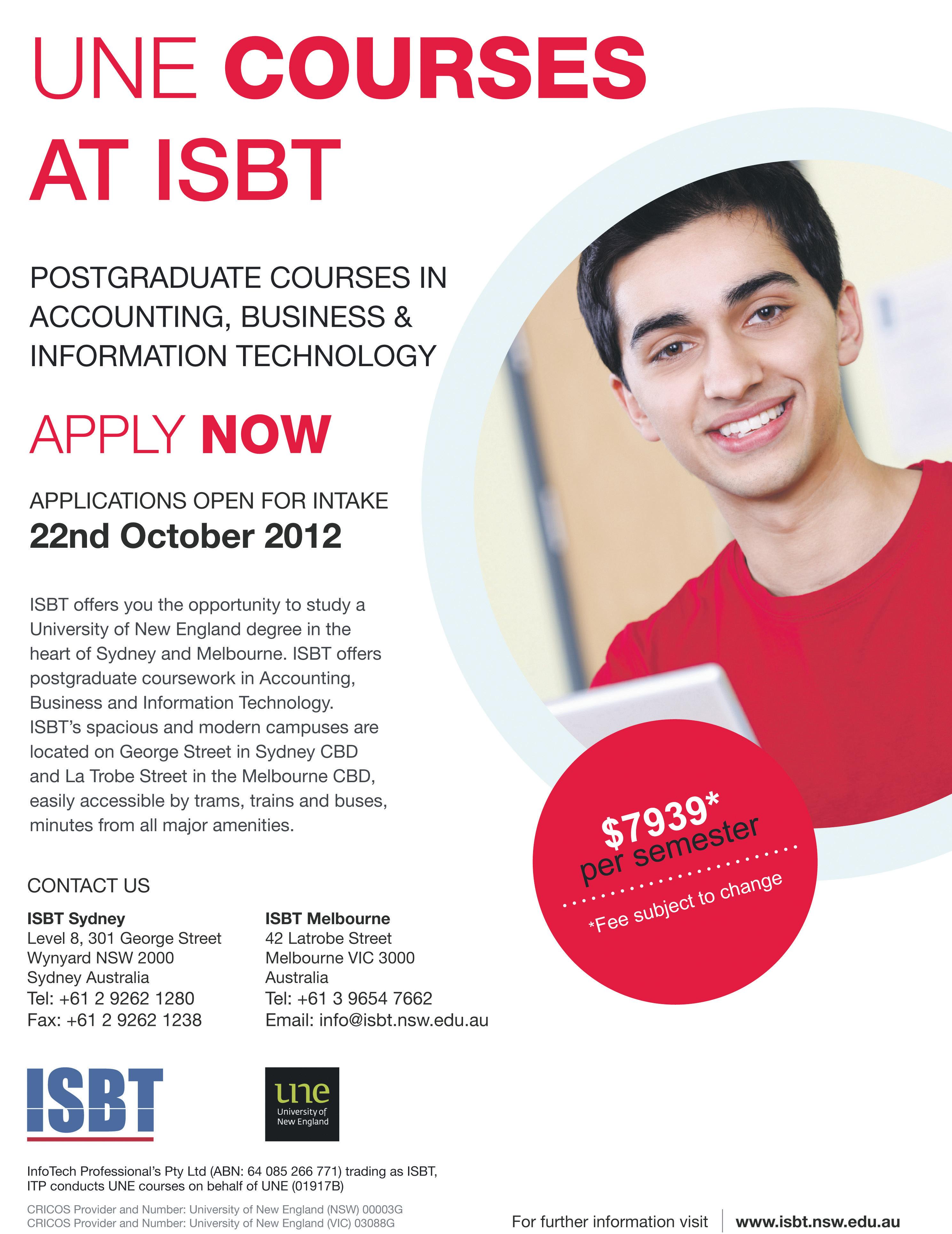
22 OCTOBER (1) 2012 www.indianlink.com.au
Mirrored perfection
Two talented sisters showcase their collective and individual talent at an impeccable arangetram

Awarm summer evening, gracious hosts, smiles all around on and off stage, a theatre packed to capacity and captivating talent marked the Bharathanatyam arangetram of Nidhi and Nikita
Panicker on September
29 at Hunter Theatre in Newcastle. History was created as the curtains were drawn and proud guru Vrinda Ravi introduced the art form of Bharathanatyam, and presented her students Nidhi and Nikita in the first Bharathanatyam arangetram ever held at Newcastle.

As the girls breezed onto the stage for the Pushpanjali and Ganesha sthuthi, sitting in the audience, I wondered if my eyes were playing tricks on me. Was it a mirror image? Or two people dancing? Such perfection marked the synchronised dancing of the two sisters. The Jathiswaram in ragamalikai was a visual treat with complex rhythmic patterns woven into the misra chapu thalam, a cycle of 7 beats.
The centrepiece, the varnam was in praise of Lord Nataraja, the Lord of Dance, in Nattakurunji
The variations in nadai (rhythmic counts) in the jathis and thattimettus, pauses and silence punctuating movement, reflected the aesthetic in choreography by Vrinda Ravi.
Nidhi and Nikita expressed with intensity the longing of a nayika (heroine) pining for the grace of her Lord. The quick succession of descriptive phrases, portraying the adornments of Lord Shiva, his matted locks, the tiger skin and elephant hide wrapped around his
second half after an interval started with Dashavataram, the ten incarnations of Vishnu through the composition, Parkadal alai mele, an evergreen favourite with dance audiences. Nidhi and Nikita alternated with ease between the various characters in the ten incarnations, presenting the victory of good over evil. Imaginative choreography and crisp execution marked this number with enchanting cameo freezes of the ten incarnations.
Throughout the performance the two sisters, though seeming
has it all come to now, a mere memory? That was a hard act to follow for Nidhi in her solo Jagan Mohanane Krishna, but she rose to the occasion with her brilliant portrayal of Krishna killing the serpent Kalinga. Nidhi alternated between the roles of a charming, ebullient Krishna and the spitting, vicious Kalinga building the story to a victorious climax. A thillana in kathanakuthuhalam was a fitting finale for the performance. Kathanakuthuhalam means a feeling of ecstasy, and this was felt not just by the performers and their guru, but also the musicians
and the audience, as all were transported beyond the realms of the ordinary. A standing ovation blessed Nidhi and Nikita as they took their first step (the arangetram), a milestone in the long journey of learning and experiencing the art form of Bharathanatyam. In speaking to a few members in the audience, one thing that was remarked on was the live accompanying orchestra – a brilliant team comprising of Prema Anandakrishnan on vocal, Balaji Jagannadhan on violin, Janakan Suthanthiraraj on mridangam and Vrinda Ravi on nattuvangam. Their fluent and
Budding artistes find expression
In its 30th year, Sydney Music Circle has created a new platform Yuva Kala Bharathi, to encourage young artistes in Carnatic music. An inaugural concert was held last month which was well supported by over a 100 members in the audience. Two performing artistes presented on the occasion: Prenitha Balasubramanian (student of Chitra Nagarajan, accompanied by Shubhaangan on mridangam), and Kaustab Krishnamurthy (student of Chitra Krishnamurthy accompanied by Dilip Ramaswamy on violin and Nirmal Ayyar on mridangam).

Both performers and their accompanists gave a very creditable performance indicative of their potential to achieve concert status in the not too distant future.
They have shown serious commitment to master the nuances of this age old art form and have taken advantage of tutoring through the electronic media by well known vidwaans in India.
Prenitha’s rendering of raga Hamsadhwani and Kaustub’s raga Vachaspathi shone through which was applauded by the audience.
Sydney Music Circle’s efforts are laudable for mobilising
the community support with donations and sponsorships for 30 years which have helped them underwrite the costs involved as well as provide appropriate venues and the latest in sound systems. Since India is one the
largest source of young and multitalented migrants to Australia in recent years, this initiative of the Sydney Music Circle and Yuva Kala Bharathi is highly welcome. Their flagship event of conducting the Thyagaraja Aradhana every year in
flawless expression enthralled and captivated the audience. Compere Indhu Subramanian took the audience on a journey through the evening’s proceedings with clarity and conviction. The ambience of the theatre was enhanced by two beautiful temple pillars as the backdrop and a colourful rangoli of the image of the two dancers in the foyer by Anusha Mukunthan. Proud parents Anu and Suresh presented the vote of thanks, but instead, the audience left the theatre thanking them for organising such a momentous event in Newcastle, planned and presented to perfection.
Hamsa Venkat

February/March is now an event every music lover awaits eagerly.
It is significant that this home grown product has reached a ‘high rating’ and mention in global Carnatic Music.
Malli Iyer
OCTOBER (1) 2012 23 NATIONAL EDITION
YKB’s Kaustub and Prenitha
Sydney girls strive to save tiny lives
Local organisation Probasy donates two new incubators to a hospital in Dhaka
Imagine being a new mother on a cold winter’s night in a third world country. Imagine giving birth to a premature baby and being told that 9 out of the 11 incubators in the neonatal care ward are malfunctioning. Imagine being told that your precious newborn baby is now in line behind twenty other precious newborns waiting for two incubators. Imagine 24 newborn babies dying because there were not enough incubators. This is no surreal imagining. It is the harsh reality of one night at the Dhaka Medical College in Bangladesh. A reality that Sydney organisation Probasy is striving to change. As Probasy volunteers, we were saddened to hear that while we enjoy the luxuries of a first world country, innocent lives are lost due to the lack of neonatal care and awareness in Bangladesh. We resolved to raise awareness of neonatal care and malfunctioning equipment, and focused our attention on providing a feasible solution that would have continued effects long after our
project is complete.
To this end, Probasy held several events throughout the year to fundraise and spread awareness. We held a stall at the annual Bengali book fair in Ashfield, and a walkathon titled ‘walk 4 a cause’ in Glenfield, in which many adults participated as a way of improving their fitness

as well as donating to the cause. We were joined by our local MP Laurie Ferguson, as well as the Mayor of Campbelltown. Probasy then held a Mother’s Day movie screening event at which an iconic Bangla film Deya neya was played, raising over $1000 in ticket and snack sales. By mid-year, Probasy had reached the halfway mark
and were looking for ideas to fundraise. A charity BBQ at Parramatta Park raised another $1,000, and suddenly the team was only $1,000 away from their goal.
At this time, I happened to be speaking to a friend’s father about Probasy and he in turn told his friend. They are both members of the Bangladeshi Australian Welfare Society, and together they encouraged the society to donate $1,000 to Probasy to help us reach our goal. We are really grateful for all the love and support we have received from family, friends and wellwishers. We now have sufficient funds to purchase two open incubators (warmers) and two phototherapy units to donate to the Bongobondhu Hospital in Dhaka, Bangladesh. We will continue to fundraise for and raise awareness of social and wellness issues affecting those in need. If you have any ideas or initiatives we can help with please let us know.

Probasy is a not-for-profit organisation founded and run by
girls in the Sydney area who have a passion to give back to their community. Probasy is currently in its 11th year of operation with a total collection of approximately $45,000 (approx. TK. 37 lakh) to date. It has had a successful run of campaigns and projects, thanks to the consistent and energetic efforts from its members. Previous projects successfully completed include raising $10,000 for the Queensland flood appeal and $5000 to fund 28 fistula operations in Bangladesh, among other smaller fundraising efforts focused on Australian events and charities, as well as abroad.
Probasy is working to create a society free of exploitation, discrimination and gender based violence that supports the disadvantaged in achieving their full potential. It aims to provide support and empowerment to disadvantaged women and children in Bangladesh, with special emphasis on their health and wellbeing.
www.probasy.com
Shafeen Mustaq
24 OCTOBER (1) 2012 www.indianlink.com.au communityS cene
Probasy members with Laurie Ferguson
PRofiCieNT Home LoANS

PROFICIENT ACCOUNTING &
$45.00
We
•
•
•
Why choose us
• Free property report*
• Obligation Free services
• Best rate of interest
• We can let you know how much you can borrow
• Flexible – We can meet you as per your convenience Available
well
• ABN Registrations
• Super withdrawals
• Business plans
• Book keeping Services

• BAS/GST Returns
• Business Takeover deals
• All other Tax Returns

• Incorporation of Companies
• Business Tax Advice
• Self Managed Super Funds (SMSF)
• Trust Accounting
• Internal Audit
*Conditions apply
We are Reliable, Experienced, Friendly & Flexible Also available after hours & in weekends
Avinash (CPA) or Anand (CPA)
Mob: 0425 330 826, 0412 617 819 Ph: 02 9687 5373, Fax: 02 8580 5124
3/154-156 Bridge Rd (Cnr of Bridge Rd & Byrne St) Westmead NSW 2145 15/30-34 Lydbrook St Wentworthville NSW 2145

Email: Avinash@profaccounting.com Website: www.profaccounting.com
Timings: Weekdays 8:30 am – 9:00 pm Weekends 8:30 am – 9:00 pm (Book appointment for convenience)
OCTOBER (1) 2012 25 NATIONAL EDITION
TAXATION SERVICES
**Conditions apply Property Report helps you to give the right offer for the property which you are buying. You can also analyze recent slaes of similar properties in the same area. *
term
Australian Credit Licence No: 393264 Looking for Home Loan Looking to RefiNANCe your existing Home Loan
to us – We can get you the best rate of interest Home loan available from 5.59% Pa**
Buying home is a long
commitment – Make sure you get the right rate of interest
Talk
Specialise in
• Loan for first home buyers
Refinancing existing loan
Debt Consolidation
Investment Loans
after hours and in weekends as
Parramasala program launched
ver four festival days and nights, audiences can experience some of the world’s most renowned performers, premiere film screenings and outstanding entertainment, all in the centre of Parramatta”, Philip Rolfe, the Artistic Director of Parramasala, announced at a function at the Parramatta Town Hall on 26 September.
This Australian Festival of South Asian Arts, now in its third year, will transform the city of Parramatta from 8 – 11 November, 2012 into a cultural hot-spot with a spectacular opening night Bollywood-style party, followed by presentations of contemporary music, theatres, films, delicious cuisine, hawker market stalls and free outdoor entertainment. Well-known international and Australian artists will participate, joined by many artists from Western Sydney – all inspired by the cultural influences and artistic traditions of South Asia.
According to Rolfe, Parramasala like previous years will provide the community an opportunity

Oto celebrate the diversity and influence of South Asian culture.
Surely the key event this year will be the opening night bash that promises to have everyone on their feet, fired up to a multimedia spectacle. Kamahl, the legendary Australian music icon of South Asian origin will take over Town Hall Square as the MC of the Bollywood Block Party where many of Sydney’s Indian and South Asian dance and music schools will perform to remixed Bollywood soundtracks and original composition by TokyoLove-in’s Michael Chin.
Other significant items are performances by young BritishIndian composer Soumik Datta, recently described by Vogue UK as one of the planet’s hottest new music talents. He teams up with Austrian percussion virtuoso, Bernhard Schimpelsberger, in Circle of Sound, a spectacular combination of sarod, drumkit, synth-bass, electronics and stunning visuals. Also performing for the first time in Australia with her current band, will be former Strathfield school girl and acclaimed vocalist Susheela Raman who in recent times has been mesmerising audiences with
her wildly original songs and interpretations of music from her Tamil heritage influenced by many exotic sources, including Jimi Hendrix.

Legendary flute player Pandit Hari Prasad Chaurasia needs no introduction. He will be on stage with his company on the final night to bring the curtain down for this year’s festival in a grand musical way.

The other musical soirées that promise to draw attention
mechanical Fitter & electrician

A reputed Indian owned manufacturing business in Young, NSW is looking for hard-working and self motivated Mechanical Fitter. Must have trade certificate, with relevant working experience on fixed plant machinery

We also have a position for a qualified Electrician having current Electrical Licence and Industrial working experience. The company can also sponsor suitable candidates for Regional Skilled Migration Visa.
are Australian blues guitarist Jeff Lang joining eminent local tabla player Bobby Singh and masterful Rajasthani musicians
Asin Khan and Bhurga Khan for an evocative concert, titled Maru Tarang (meaning desert ripples) and enchanting Qawwali music by Asif Ali Khan from Pakistan accompanied by his nine-member group.
The festival’s theatre program includes presentations from London’s Tamasha Theatre
Company, New Zealand’s Indian Ink Theatre and Australia’s very own Ansuya Nathan performing her highly rated one-woman comedy, Long Live the King. The South Asian Film section will bring in an eclectic mix of features, shorts and documentaries from India, Pakistan and Sri Lanka including outdoor screening of ‘70s hit film Sholay on the final night. Overall the program has something for everyone to enjoy.
The festival will be held in two key precincts of ParramattaRiverside Theatre and Town Hall Square. For full program details including timing, venues and tickets please visit www.parramasala.com
This program was formally launched by NSW Premier and Minister for Western Sydney, Barry O’Farrell, who was joined by Minister for the Tourism, Major Events & Hospitality, Racing and Arts, George Souris, Parramatta MP Geoff Lee, Granville MP Tony Issa, Chairman of Parramasala Dr Harry Harinath and several other distinguished guests.
Sandip Hor
26 OCTOBER (1) 2012 www.indianlink.com.au
forward your resume along with references to bipin@causmag.com.au or phone (02) 6382 9318 main S tream
Please
Philip Rolfe with Kamahl Susheela Raman
Hariprasad Chaurasia

OCTOBER (1) 2012 27 NATIONAL EDITION
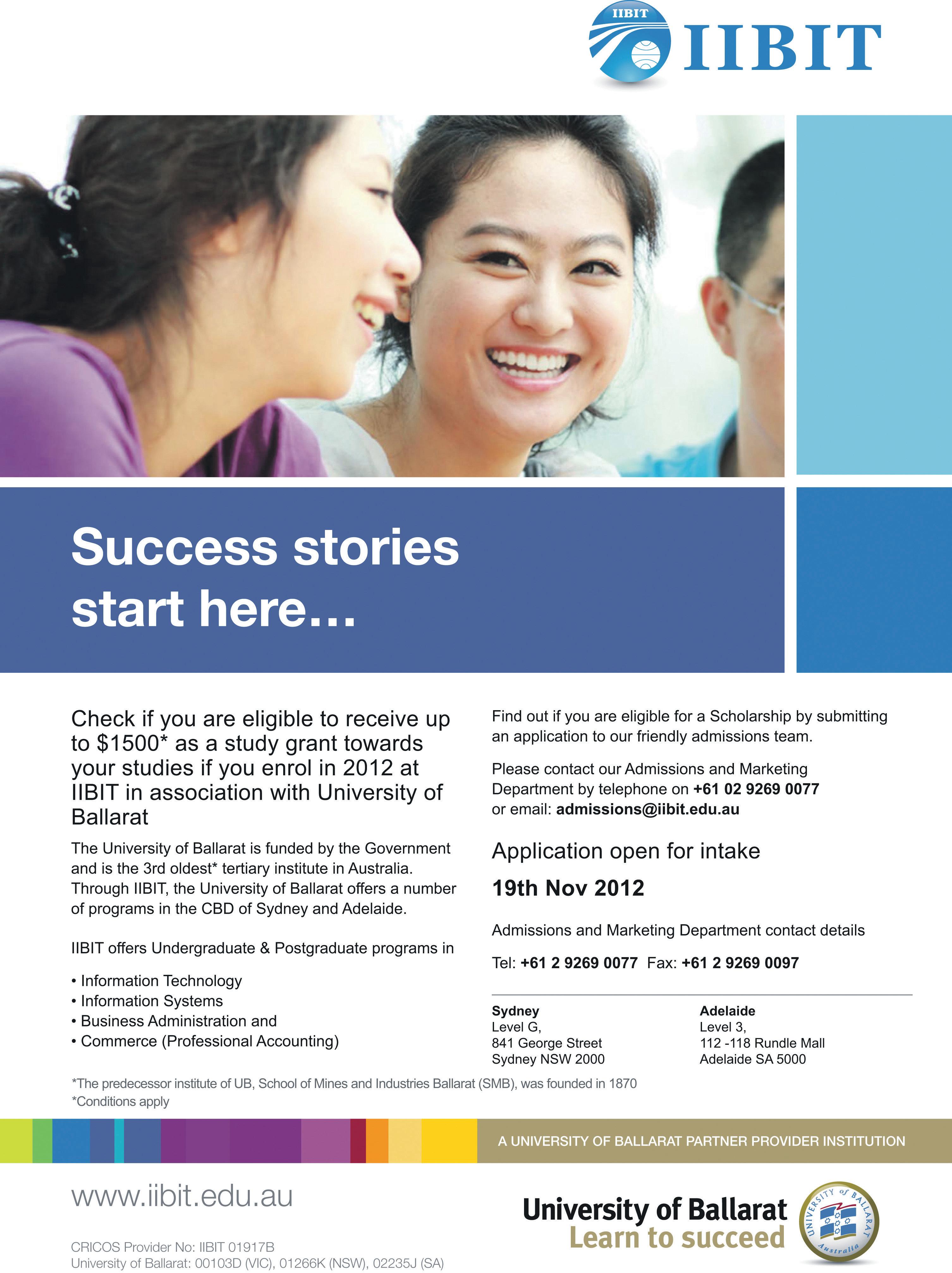
28 OCTOBER (1) 2012 www.indianlink.com.au

People Parties Places

It’s a baby girl for Mrudula and Prashant



Dixit: welcome Baby Ira

760 merit awards in six years: Year 12 student Srijata Michelle Bandyopadhyay of Randwick Girls High School wins an award for winning the highest number of merit awards in the history of the school Fourth birthday for Siona


30 OCTOBER (1) 2012 www.indianlink.com.au t H i S mont H
Seven-year-old Ananya Wakhare’s artwork Glittering Peacock was selected to be displayed at the Australian Nuclear Science and Technology Organisation: it will eventually be donated to a children’s ward in a country hospital
Do you have a photo for this page? Email it to info@indianlink.com.au
Trivedi
Pratibha Patel celebrates her 60th birthday with husband Bharat and kids (from left) Bijal, Dhana and Jatin



OCTOBER (1) 2012 31 NATIONAL EDITION
09 8774 6160 Hallam
Despite controversy, Commonwealth Games brought benefits to India
The Commonwealth Games organised in New Delhi exactly two years ago may have been scarred by controversy and charges of corruption that are yet to be proved, but India’s best ever performance at the Olympics in the London Games displays the progress the country has made in sports in the last two years.
The government in its bid to continue the momentum gained from the Oct 3-14, 2010 Commonwealth Games, opened up its purse-strings under its Opex London 2012 programme. A willing government earmarked a record Rs.260 crore ($53 million) for training and competition ahead of the Olympics and the result was for all to see.
Though dogged by controversy and adverse media scrutiny even before it began, largely because of project overruns and delay in completion of major infrastructure, the Games on the whole were an organisational and sporting success from the Indian point of view.
If a whopping 101 medals in the Commonwealth Games were considered big, six medals at the London Olympics was seen as a big advancement over previous editions. Shooter Vijay Kumar and wrestler Sushil Kumar won silver medals while boxer M.C. Mary Kom, shuttler Saina Nehwal, shooter Gagan Narang and wrestler Yogeshwar Dutt bagged bronze medals in London.
While the Commonwealth Games might have been in the news for financial irregularities, it made India a hotspot for the top sporting events in the country.
Though India is far from being a sporting nation, the facilities that came up in the national capital for the Commonwealth Games have been a boon for athletes.
Jawaharlal Nehru Stadium, Major Dhyan Chand National Stadium, Karni Singh Shooting Range, S.P. Mukherjee Swimming Complex, Talkatora Indoor Stadium, Indira Gandhi Indoor Stadium and the Yamuma Sports Complex are among the best in the subcontinent.
Post the Commonwealth Games, while Nehru Stadium hosted the mighty Bayern Munich football team, SAFF Championship and the Nehru Cup, the National Stadium hosted the hockey Olympic qualifiers that saw India booking its tickets for London after having missed an Olympics (Beijing-2008) the first time in 80 years.
The Sports Authority of India (SAI), the New Delhi Municipal Council (NDMC) and the owners of most of the stadiums also decided to open the gates to the common man under the “Come and Play” scheme of the sports ministry. The scheme was well appreciated and ensured that the stadiums don’t turn into white elephants.
The financial irregularities in the preparations for the Commonwealth Games were also a big lesson for the government in more ways than one. It prompted the sports ministry to come up with a National Sports Development Code to get rid of corruption in Indian sports.
The National Sports Federations may have been up in arms against the sports ministry over the code but they all thank Sports Minister Ajay Maken in private for being so generous to all sports bodies by way of providing funds for training.
Shooters were the most favoured lot after India’s first Olympic gold by Abhinav Bindra at Beijing and Rajyavardhan Rathore’s silver four years earlier at Athens.
And the biggest beneficiary was ace double trap shooter and Asian Games gold medallist Ronjan Sodhi, who received the lion’s share of Rs.97.37 lakh of the Rs.6.87 crore financial assistance.
Sodhi says sportspersons have benefited immensely by the government funding after the Commonwealth Games.
“At the Commonwealth Games, the Indians proved their mettle and promised to do much more at other major international events. The government too was convinced and thus increased its funding for London. We are thankful to the sports ministry for helping us to prepare for the Games,” said Sodhi.
Athletics Federation of India (AFI) technical director M.L. Dogra said government funding has helped the federation to send athletes for exposure trips abroad.
“Around Rs.15.94 crore was been allocated for athletics and the athletes trained abroad for longer durations to prepare for the Olympics. Commonwealth Games discus gold medallist Krishna Poonia training in the US was fully funded by the ministry. US-based discus thrower Vikas Gowda also performed well in the recently held World Championships in South Korea,” said Dogra.
Poonia (Rs.24.20 lakh) and national record holder Gowda (Rs.24.51 lakh) benefited from the government’s Operation Excellence 2012. Their performance at the London Games was impressive though they failed to make a podium finish. Poonia was seventh while Gowda made a creditable eighth finish in the Games.
Two years is a small time to determine the benefits of the hosting the Commonwealth Games. But Indian athletes are still reaping its benefits.
India pauses in its busy tracks to remember Gandhi

It was time again on October 2 to remember that greatest icon of peace. On Mahatma Gandhi’s 143rd birth anniversary, millions enjoyed a holiday but thousands also flocked to places dedicated to his
memory to pay tribute to the man who spearheaded India’s bloodless struggle for freedom from British rule and left a legacy of amity and ‘ahimsa’ as eternal as time.
As the nation’s leadership gathered at his memorial Raj Ghat for the annual remembrance, ceremonies were held across the country to mark the day, observed as Gandhi Jayanti.
The symbolism of the day, also marked as the International Day of Non-Violence, was lost on nobody with many, from filmmakers to politicians, starting new ventures and making new promises.
Activist Arvind Kejriwal chose the day to launch his political party in the national capital. With a picture of Gandhi in the backdrop, Kejriwal, wearing a Gandhi cap with the slogan “Mein hoon aam admi, mujhe chahiye Janlokpal” (I am common man, I want Jan Lokpal) printed on it, kicked off his party by vowing to fight against corruption.
In Mumbai, where 120 inmates of Arthur Road prison took an oath to create an India of their dreams, the first look of the film Freedom was unveiled by director Vivek Agnihotri.
There were plenty of ceremonial functions.
The centrepiece of the formal observance was Raj Ghat, where Gandhi was cremated after being felled by an assassin’s bullet on Jan 30, 1948. His last words “Hey Ram”, forgiving even in death, are inscribed on a black stone slab.
President Pranab Mukherjee, Vice President Hamid Ansari, Prime Minister Manmohan Singh, Congress president Sonia Gandhi and senior Bharatiya Janata Party leader L.K. Advani were among those who gathered to remember the father of the nation.
Mahatma Gandhi’s favourite ‘bhajans’ like Raghupati Raghav Raja Ram and Vaishnav Jana To were played and an all-religion prayer conducted in memory of the father of the nation.
It was also the 108th birth anniversary of former prime minister Lal Bahadur Shastri. And the leadership paid floral tributes to both in the Central Hall of parliament. The prime minister, Congress president, Lok Sabha speaker Meira Kumar and a host of MPs and ministers were in attendance.
Away from the formal rituals, observed year after year, there were also those who tried to get a grip on the man, who went from being Mohandas Karamchand Gandhi to simply the Mahatma, or the great soul -- deified in every corner of India but with his ideology of Gandhism to a large extent confined within pages of textbooks.
At Raj Ghat, for instance, they gathered to understand the mystique of the man, described as a half naked fakir by former British prime minister Winston Churchill. From young professionals to college students, from families to foreign tourists, they walked around the complex trying to soak it all in.
“We need a nationwide revolution against corruption - a revolution based on Gandhian principles,” said Krishan Kumar, a 44-year-old shop owner from Daryaganj in Old Delhi.
Agreed Dave Lyneta, a 38-year-old Canadian.
“I’ve read Gandhi’s biography twice. If only more people around the world followed his principles, there would be no 9/11 or Iraq or Afghanistan wars,” he said.
32 OCTOBER (1) 2012 www.indianlink.com.au in D ian ne WS
Photo: AP
A craftsman works on the world’s costliest miniature model of the Taj Mahal at a Star Gems diamond jewellery workshop in Bhopal, Madhya Pradesh, India, 27 September 2012. The hand-crafted miniature, with a value of Rs 100 crores (Rs1 billion or approx. 14,654,635 Euros), is made of 400 kg of silver, ten kg of gold, 300 kg of brass and copper and is embedded with diamonds worth Rs six crores. It weighs 700 kg.
For Khizar Hayat, 22, studying at the Jamia Millia Islamia in New Delhi, an introduction to Gandhi through his Class 9 textbook was the beginning of his journey towards knowledge.
“My devotion towards him grew over the years. I’m trying to imbibe his teachings in the way I live my life or treat others. I used to be violent till a couple of years ago. But I have learnt to control my emotions and more importantly, channelise my aggression in a positive way,” said Hayat.
Gandhi was born on October 2 in Porbandar in Gujarat in 1869. All of 143 years later, some lessons are still ones that need to be learnt.
Indian-Americans strongest supporters of Obama: Survey
Indian-Americans are by far the strongest supporters of US President Barack Obama, giving him an edge of 68 percent to five percent over his Republican challenger Mitt Romney, according to a new survey.
Thus, while two Indian-American Republican Governors, Bobby Jindal of Louisiana and Nikki Haley of South Carolina, are among the strongest critics of Obama, they seem to be in a relatively small minority of the community who support Romney, says the survey.
Asian Americans give significantly higher job approval ratings to Obama than the national average (59 percent vs. 50 percent, respectively), and they have a considerably less favourable impression of Romney than the national average (30 percent vs. 45 percent, respectively), according to the National Asian American Survey (NAAS).
Approval of the president’s job is particularly high among Indian Americans (82 percent), and is conspicuously low among Filipinos (45 percent) and Samoans (41 percent), says the survey of Asian and Asian Pacific Islanders (AAPIs).
Obama’s relatively high approval rating among AAPIs is also matched by higher favourability ratings than the national average, it says, noting while 51 percent of the national population has a favourable impression of Obama, 59 percent of Asian Americans do so.
The favourability rating is particularly high among Indian Americans (88 percent) and Korean Americans (76 percent), and is particularly low among Vietnamese Americans (20 percent) and Filipino Americans (46 percent).
One in six Asian Americans (17 percent) lives in a battleground state with Indian Americans and Korean Americans constituting a larger share of the battleground states than their national averages, the survey notes.
Asian Americans also have a more favourable impression of Democrats in Congress than the national average (43 percent vs. 34 percent, respectively), it notes.
The survey, based on a national poll conducted July 31-Sep 19 through telephone of 3,034 people, included 386 Indian-Americans.
It was the collaborative effort of Karthick Ramakrishnan at University of CaliforniaRiverside and Taeku Lee at University of California-Berkeley.
India presses for UNSC expansion to meet global challenges
India sought a reform of institutions of

global governance including an expansion of the UN’s top decision-making Security Council to reflect contemporary realities for converting today’s challenges into opportunities.
The world today was “faced with multiple global challenges that transcend national boundaries,” Indian External Affairs Minister S.M. Krishna said in his address to the UN general assembly outlining the problems ranging from tepid recovery from the downturn in the global economy to the scourge of terrorism.
“Developing countries are still to recover from the downturn in the global economy. Their quest for poverty eradication and sustainable development remains an uphill task,” he said.
“The West Asia and North Africa region is seeing unprecedented socio-political upheaval. The question of Palestine remains unresolved,” Krishna said.
“And, threats emanating from terrorism, maritime piracy, drug trafficking and proliferation of weapons of mass destruction continue to multiply.”
“These challenges demand that we act to work for solutions in a concerted and coordinated manner. This is the only path to success,” he said, suggesting a reform of the architecture of global governance to reflect contemporary realities.
“The most important and decisive step towards remedying this situation pertains to the UN Security Council, which must be expanded in both permanent and nonpermanent categories,” Krishna said.
“The reformed Council must include countries that are capable and willing to bear additional burdens relating to the maintenance of international peace and security and be able to sustain global campaigns against new and emerging global threats,” he said.
“Equally, India will promote and lend her weight for enhancing the voice and participation of developing countries in decision making in global economic and financial institutions,” he said.
The IMF’s quota reform process must be accelerated with altered quotas reflecting contemporary economic weight, Krishna said.
Expressing support for the government and people of Afghanistan, Krishna said the “continuing existence of safe havens and sanctuaries for terrorists beyond Afghanistan’s borders is the major impediment to the restoration of peace and security in Afghanistan.”
Calling terrorism as one of the most potent threats to international peace and security, he also asked the world to show the necessary political will to agree on a Comprehensive Convention on International Terrorism.
New hope for terminal heart patients
There’s new hope for terminal heart patients, with a new pumping device promising to provide rest to the worn-out heart and even recharge it - adding years and quality to a patient’s life.
The Ventricular Assist Device (VAD), or Heartmate II, is surgically inserted between the chest and upper abdomen and is powered by a battery. The titanium device is connected to a monitor worn outside the body that controls the blood flow.
Introducing the device in India and educating doctors about it, India-born, USbased cardiac surgeon and health economist Mukesh Hariawala says around 10,000 people across the world have had got the Heartmate II implanted and the results have been “fantastic”.
“Heartmate II has a very huge success
rate and very few complications,” said Hariawala, who is associated with the Harvard Medical School Affiliated Hospitals in Boston, speaking during a visit to New Delhi.
“Patients can live for 8-10 years, if the rest of the body stays well. The device takes care of the pumping function of the heart.”
Hariawala, who was felicitated as “India’s Most Admired Surgeon” at Mumbai on Sep 21 by Maharashtra Governor K Sankaranarayan, said the Heartmate II is implanted in those who are in end-stage or terminal heart patients, “those who cannot go through angioplasty, stent or bypass”. It can be implanted in patients of any age, but is given usually to patients who are 50-plus, especially those waiting for a heart transplant.
A major advantage of Heartmate II is that the heart “starts remodelling itself”. Explaining, Hariawala said that with the pumping load reduced, the “typically diseased and enlarged heart starts reducing in size” and the patient “is able to move about, climb stairs and his/her endurance increases”.
“The patient lives longer and the quality of life is better,” he added.
Hariawala was a member of the surgical team that performed the first bypass surgery on Prime Minister Manmohan Singh in 1990 along with John Wright at Harley Street Clinic in London.
Heartmate II is manufactured by US firm Thoratec, a world leader with more than 10,000 “successful” implantations and the device is “soon to be offered to India”, he said.
Most of the implantations have been done in the US, Europe and Australia, and the demand is increasing in Asia, he said.
IANS
OCTOBER (1) 2012 33 NATIONAL EDITION in D ian ne WS
Photo: AP
Competitors at a traditional boat festival race along the Ganga river at Sahidpalli, 65 km from Kolkata, 19 September 2012. Competitors from different parts of Bengal participated in the festival with their country and snake boats. The 15-metre-long boats can carry ten to 25 people.





34 OCTOBER (1) 2012 www.indianlink.com.au Best RemuneRation to the deseRving candidates Chef Required Pl. call harvinder on 0434 246 118 An established indian restaurant in Hawkesbury area is looking for curry, tandoor chef and a Restaurant manager (all full time) patialahouserestaurant@live.com 0411 280 533 02 9873 4390 facebook.com/decorashaan info@decor-a-shaan.com.au www.decor-a-shaan.com.au Providing you with breathtaking event decorations, to make your special moment extra special!!! We also look after your: Catering, Henna, Floral, Marquee & Photography needs "New Crystal Mandap Just arrived" Early bird, get a discount on booking till 30th October For all your event needs


OCTOBER (1) 2012 35 NATIONAL EDITION
Funkytown

There’s something special about Newtown and Sydney’s inner west, and its quirky, community-friendly residents
 BY PETRA O’NEILL
BY PETRA O’NEILL
Darl, it has taken a lifetime!”
exclaimed the Newtown local sunning herself on her front porch with a purring cat on her lap and the most eclectic collection of garden gnomes, brightly painted birds and flowers decorating her small garden and house. A little eccentric, but herein lies the charm of Sydney’s inner west. Its long term residents, many who were born here and stayed, and the sense of community they have created, makes it a welcoming place for the more recent arrivals of trendy professionals, many of whom work at universities or hospitals nearby, and students who choose to call it home.
Cities are composite parts that collectively form a whole of neighbourhoods and suburbs and while each has its own distinctive mix, it is perhaps more pronounced here.
Alongside Central Railway Station is the small suburb of Chippendale that is undergoing a massive transformation, with the renowned American architect Frank Gehry’s new building for the University of Technology, as well as several high-rise apartments under construction. With cranes looming overhead, here you will also find the White Rabbit Gallery, displaying one of the world’s largest collections
of contemporary Chinese Art, and the fabulous chutneys, jams and relishes available from Silver Spoon Caterers. The street names Vine, Ivy, Myrtle and Pine are reminders that the area once served as a nursery after botanist Thomas Shepherd was granted a land grant by Governor Darling in 1827, on condition that he grow plants.
Crossing over to busy Cleveland Street off Abercrombie Street is the Block, the subject of large protests that began in the 1970s, when aboriginal campaigners lobbied the Federal government for a grant to purchase the terraces to provide low-cost housing for aboriginal people.
The small suburb of Darlington, made up of small terraces has been subsumed in a large part by the ever-expanding Sydney University campus. The Everleigh Market on Wilson Street is a great place for organic fruit and vegetables, fresh bread and an array of stallholders with long lines as testimony to their great food.
I can’t say how many times I have walked along the busy retail precinct of King Street, Newtown for great vintage/retro clothing, bookstores, boutique bakeries, cafes and restaurants at moderate prices. From Israeli to Mexican, Czech, Indian, African, Thai, Italian and Turkish, every multicultural palate is catered for.
But wander off the main streets and you will discover the hidden treasures of Newtown and Erskineville tucked down narrow streets where you will find long queues to get the best espresso coffee, at Barmuda, Vargabar, Campos, Cafe Shenkin or the


TRAVEL NOTEBOOK NEWTOWN SYDNEY
GETTING T h ERE
Numerous buses travel along King Street, the main ones being 422,423,426 and 428. Trains are less frequent. Go to trip planner at www.131500.com.au Tel: 131-500. Parking is at a premium on weekends.
W h ERE To G o
White Rabbit Gallery, 30 Balfour Street, Chippendale www.whiterabbitcollection.org Thurs-Sun 10-6
Everleigh Market, 243 Wilson Street, Darlington www.everleighmarket.com.au Farmers Market: Saturdays
8am-1pm, Artisan’s Market First Sunday of the month 10am-3pm.
W h ERE To EAT
There is a tantalising array of dining options lining King Street with a staggering number of Thai Restaurants. The coffee shops are very hip well worth the wait in line.
F u RT h ER INF o RMATI o N
Websites such as Time Out Sydney have listings and reviews of restaurants. Pick up a copy of the Urban Walkabout guide, a neat fold out map available at many of the shops along King Street.
Black Star Pastry for a decadent selection of rich cakes. Renowned for graffiti, you will find this edgy art form down back alleys. With architecture dating back to the late 19th century, it is well worth exploring the surrounding leafy tree lined residential streets with many fine examples of Victorian era terraces. One of the most impressive is the row of grand terraces facing Hollis Park in north Newtown. The smaller terraces found further south reflect its working class status with the Everleigh rail yards and brickworks at St Peters nearby. There are also many imposing churches including St Stephen’s Anglican Church, an example of Victorian Gothic architecture built on land that was part of a land grant given to Governor Bligh in 1806.
King Street was once an Aboriginal track to the Cooks River and Newtown was established as a residential and farming area in the early 19th century, taking its name from a grocery store opened there by John Webster in 1832. The sign above the store read “New Town Stores” and the name was adopted.
It was also home to Mary Reibey the face on the $20 note. In 1792 aged 15, she was sentenced to transportation for stealing a horse and at the time of her arrest was disguised as a boy. After a happy and prosperous marriage and displaying shrewd skills in agriculture and trade, she retired to Newtown building a large villa.
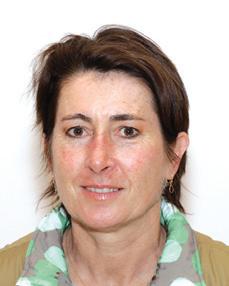
There is a wonderful sense of community in Newtown and surrounds with buskers singing their own compositions, quirky shops, neighbours chatting, children playing and a vibrancy that results from the mix of students, artists, professionals and old timers that call this pocket of Sydney home.

36 OCTOBER (1) 2012 Love m yc ity
King Street was once an Aboriginal track to the Cooks River and Newtown was established as a residential and farming area in the early 19th century, taking its name from a grocery store opened there by John Webster in 1832. The sign above the store read “New Town Stores” and the name was adopted.








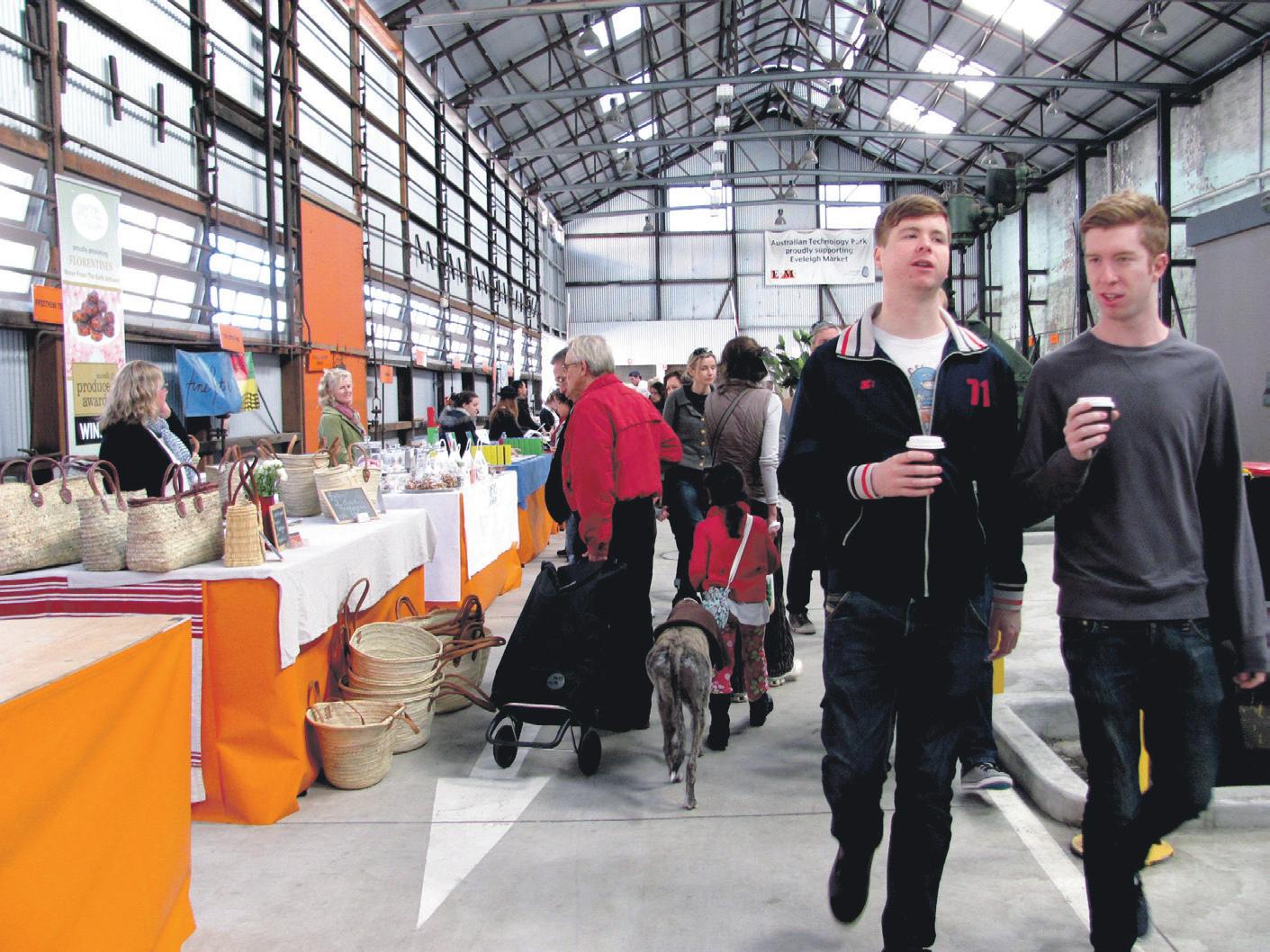


Life, death and hope in Mumbai’s underbelly
Katherine Boo’s poignant and well-written book explores the varied lives of dwellers in the Annawadi slum
BY CHITRA SUDARSHAN
What is it about Mumbai that invites such ground-breaking and brilliant works of non-fiction?
From Suketu Mehta’s ambitious work Maximum City; to Sonia Faleiro’s study of Mumbai’s red light district in her book Beautiful Thing; now we have a Pulitzer prize-winning author Katherine Boo’s just published book on a Mumbai slum, Behind the Beautiful Forevers. It is a landmark work of ‘narrative non-fiction’ that tells the dramatic and sometimes heartbreaking stories of families striving towards a better life in Mumbai. In this brilliantly written, fast-paced book based on almost four years of research and uncompromising reporting, author Katherine Boo brings to life some of the residents of Annawadi, a makeshift settlement in the shadow of luxury hotels near the Sahar airport. This book is written in such a way that while it is actually reportage, it reads like a riveting novel as Boo makes the characters come alive with her delightful prose and superb sense of drama.
One of the book’s endearing characters is Abdul Husain, a refuse-sorting worker whose family are migrants from Uttar Pradesh. He is a reflective and enterprising teenager who sees ‘a fortune beyond counting’ in the recyclable garbage that richer people throw away; his mother Zahurunissa is an indomitable character who finds strength from God-knowswhere to hold her family together under the most crushing of circumstances. Then there is Asha, the teacher from Vidarbha who is determined to lift herself and her family out of poverty by any means she can – she is not above using her charms and her body to forge contacts with the local Shiv Sena pollies or the Sahar police – to become the ‘slum lord’ of Annawadi, and failing even that, to use the money given for the education of the most marginalised children to feather her own nest. With a little luck, her sensitive, beautiful daughter Manju, Annawadi’s ‘most-everything girl’ will soon become its first female college graduate. And even the poorest Annawadians like Kalu, a 15-year-old scrap-metal thief, believe they are inching closer to the good lives and good times they call ‘the full enjoy’.
Abdul’s precocious refusesorting skills rake in a not-too-
This book is written in such a way that while it is actually reportage, it reads like a riveting novel as Boo makes the characters come alive with her delightful prose and superb sense of drama.
inconsiderable income for the large family, and they even manage to save enough for a deposit on a parcel of land in a new housing estate. Both Abdul’s skills and the family’s rising fortunes are the envy of Annawadi when everything comes crashing down after the family is accused of being responsible for the death of a neighbour.
Through the lives of some of the Annawadi residents, Boo shows us how globalisation and the rising prosperity of the Indian economy reverberates even in the backwaters of a slum; how government money set aside for poverty alleviation or education of the poor is pilfered by unscrupulous politicians and middle men and women; alternative housing schemes meant to help the slum dwellers when their land is repossessed, are rorted by corrupt men and women ......the list goes on!
Boo makes it clear in the ‘Author’s Note’ at the end of the book, that ultimately poverty corrupts everyone in Mumbai. The police stations are a bazaar – a marketplace where guilt or innocence is bought and sold; charges traded for money; documents and affidavits manufactured for a price – and
everyone is on the take.
It is not easy for an outsider to fully understand the complexities and nuances of caste, language, religion and ethnicity in India. It is to Boo’s credit that she gets them just right – perhaps her husband Sunil Khilnani, the well-known academic formerly of John Hopkins University, and her interpreters and research assistants helped her; however, the consistently high level of understanding is remarkable and praiseworthy. This is a brilliant book, beautifully written – and puts the residents of the slum at the centre of the narrative and gives us a glimpse into what it is to be human.

I was reminded of Orwell’s poignant lines from his powerful work on the bleak lives of coal miners, The Road to Wigan Pier One can easily substitute the garbage sorters of Annawadi for the coal miners of Wigan Pier in this quote from the book: “It brought home to you ....that it is only because they sweat their guts out that superior persons can remain superior: you and I and the Editor of the Times Literary Supplement; poets and the Archbishop of Canterbury and Comrade X...all of us really owe the comparative decency
of our lives to poor drudges underground, blackened to their eyes, with their throats full of coal dust...”
Katherine Boo, a staff writer for The New Yorker, has spent the last twenty years reporting from within poor communities, and won the Pulitzer Prize for Public Service. She learned reporting at the Washington City paper, was an editor of The Washington Monthly and, for nearly a decade, a reporter and editor at The Washington Post. This is her first book.
This is a brilliant book, beautifully written – and puts the residents of the slum at the centre of the narrative and gives us a glimpse into what it is to be human.

A PERSONAL PERSPECTIVE
katherine Boo was a guest at the Wheeler Centre in Melbourne recently, and was interviewed by Jo Case, resident writer and editor. here are a few snippets from the interview:

O N WHAT STRUC k HER MOST ABOUT A NNAWADI
What impressed Boo most was the fact that the people in Annawadi kept trying to improve their lives despite the multitude of obstacles and setbacks they faced every day. The thought that was foremost on their minds was, ‘how do I get to the middle class.’
Even in such a deprived slum as Annawadi, Boo was amazed that people still tried to be good despite the fact that everything was stacked against them, and they encountered corruption at every stage. Boo recounted her own bitter experiences with the Mumbai police, and how corruption was all-pervasive.
O N THE EFFECT OF g LOBALISATION AND RISIN g PROSPERITY OF THE I NDIAN ECONOMY
Boo examined how globalisation affects the lives of even slum dwellers. Even in Annawadi, there was palpable optimism – most people felt the rising prosperity around them would mean that their lives would get better. Talking about Asha, the woman who wanted to be the ‘slum lord’, Boo pointed out she was from a poor family in Vidarbha, one of the poorest regions of Maharashtra. She was driven by a burning desire to better herself and improve the lot of her children. Others felt they were in the right place (Mumbai) at the right time, and had a chance to ‘make it’; that they were on the cusp of changing their lives for the better. Most of them also felt they could escape the opprobrium of their caste in the city.
Women too, felt that gender roles had opened up and there were more opportunities for them in the city.
Boo also saw a lot of economic envy even in Annawadi; it was perhaps an indication of the rising mobility, a sign of hope that opportunities were opening up for upward mobility. What disheartened her was how pervasive low-level corruption squanders the life-chances of millions of poor people in India. So many young people’s talents are wasted as a result.
S OME OF THE THIN g S THAT TOUCHED HER
Boo did four years of research for this book and tried to portray different narrative threads to show the diversity of people and characters even in a slum. her aim was to keep the readers engaged. There were some key moments that got to her. She was struck by the choices that people made – and was amazed that they were often non-economic, despite their being poor. Sunil, one of the boys of Annawadi, loved nature and delighted at the sighting of lotuses growing in a sludge pond behind the slum. he could have plucked and sold them – but he didn’t; instead, he would retire there alone and admire the flowers in bloom quietly – for fear that if others discovered them, they would be gone. Similarly, he was overjoyed at the sighting of parrots in Annawadi. Again, he didn’t kill them, even though they would have kept him fed for a few days had he done that and sold them.
Justice also mattered to the people of Annawadi – and they wanted to know how Kalu was murdered. When they realized that Boo was trying to get to the bottom of it, they extended her their cooperation. She often moved about Annawadi on her own with her expensive equipment, even late into the night–yet never felt unsafe. The people wanted her to tell the truth to the world; they wanted the truth to come out. It was quite important to them.
O N THE EFFECTS OF ECONOMIC POLICIES AND MICROFINANCE Boo has also explored not only the impact of economic policies and politics on a place like Annawadi, but also the work of NGos.
Talking about the effects of microfinance, Boo pointed out that people like Asha felt it was too incremental a route to becoming rich. At the same time, the full benefits of microfinance did not accrue to those at the very bottom and the most in need.
38 OCTOBER (1) 2012 www.indianlink.com.au B oo KS
Katherine Boo

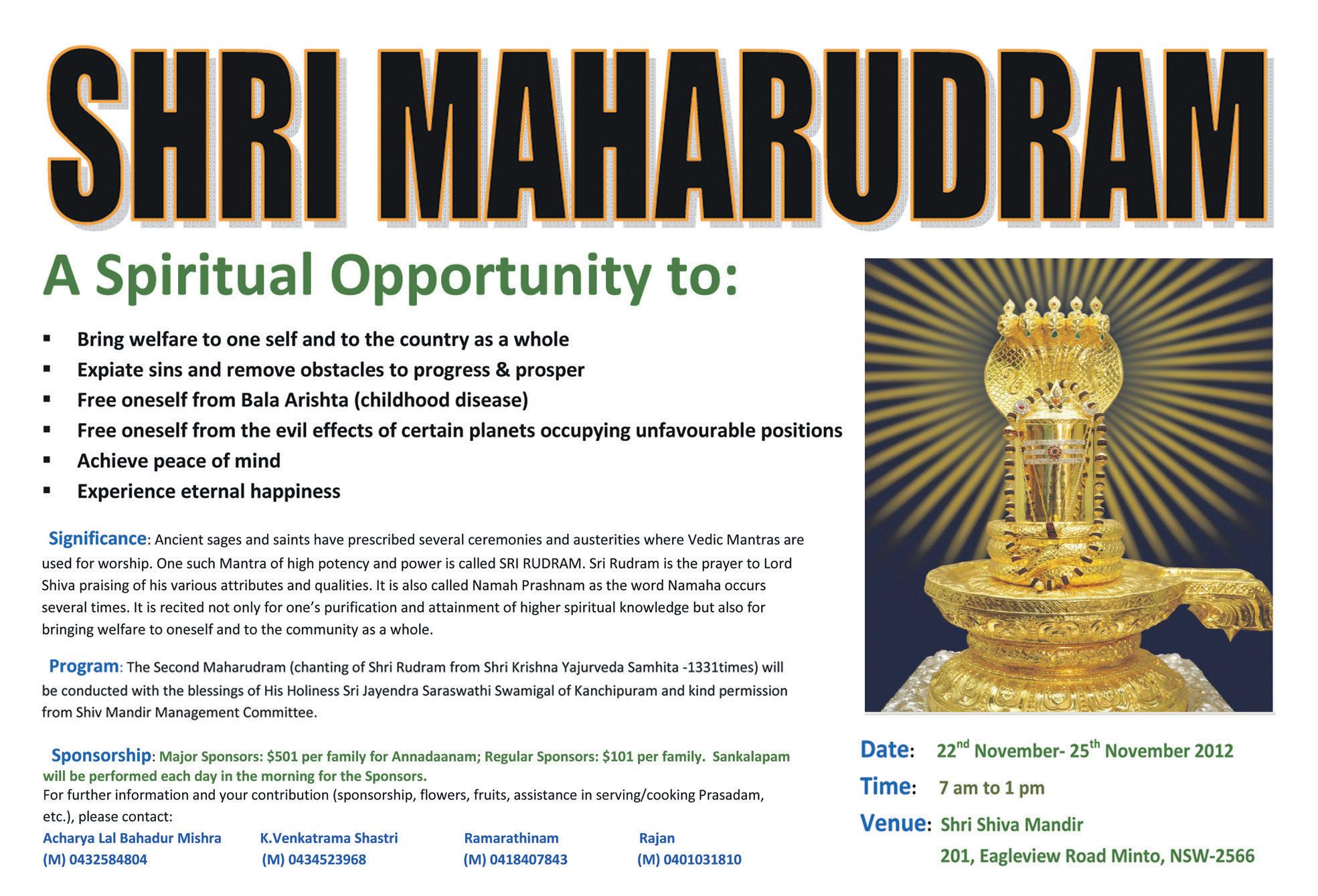
OCTOBER (1) 2012 39 NATIONAL EDITION
Minding your language
 BY NOEL g DE SOUZA
BY NOEL g DE SOUZA
presenter Leigh Sales’ probing questioning of Opposition Leader Tony Abbott on her program
ABC
7.30 so enraged an important Liberal strategist Grahame Morris, that in an intemperate moment, he called her a ‘cow’. The reaction was furious and Morris was rightly forced to apologise by Abbott.
Elsewhere, calling a female a ‘cow’ might have had a very different reaction. For example, before an open palm of the hand became the emblem of the Congress party in India, the symbol of the Indira-led Congress part was the cow and calf. That symbol had a wide appeal and an almost sacred connotation.


In a globalised world, diplomatic use of language is the norm for decent political discourse. The use of animal terms for humans is well known in common everyday language. For example, the Americans use the term ‘Holy cow!’ as a form of exclamation, along with the lesser used term ‘Holy mackerel!’.
In most languages, the word ‘swine’ is inappropriate when applied to any human. Thus ‘You swine!’ might be unacceptable; but ‘You lucky swine!’ amongst friends in Britain and Australia is more like a pat on the back. Between the Mediterranean and Southeast Asia, it is best to keep away from the word.
In the Middle East, the word ‘dog’ is as equally unacceptable as is ‘swine’. In contrast, in England we hear about an important person as being a ‘top dog’; however, politicians often love to describe themselves as ‘underdogs’ when they need to get the electorate’s sympathy vote. Cats seemed to have had a better rating than dogs. Thus well-paid bureaucrats and corporate entities are often referred to as ‘fat-cats’. Another term used derisively when applied to humans is the word ‘donkey’. Donkeys have been considered stupid and useless. In India they are used as beasts of burden by washermen. The value of donkeys during war is emphasised through the story of Simpson’s Donkey which helped in rescuing wounded soldiers during a battle in World War I. A coin commemorates the event. In NSW there is a donkey rescue centre where stray or abandoned donkeys are cared for and nursed back to health. Visitors including school children, go to the centre.
Germaine Greer, the well-known feminist
matriarch who wrote the much-lauded but controversial The Female Eunuch, has had no hesitation in lashing out at other feminine celebrities. During an ABC television debate she said that Julia Gillard should accept the fact that she is ‘big arsed’. Some years earlier she had attacked Michelle Obama’s choice of clothes saying that they were a type of apron and a ‘travesty’.
It was Indian-born Rudyard Kipling, creator of literary images of the times of the Raj, who said words are ‘the most powerful drug used by mankind’. For contemporary writer Paulo Coelho the word is one of the most destructive and cowardly weapons ever invented. We see their use in political combat.
Politicians can be admonished for what they say, but radio shock-jocks have often made it their stock-in-trade to use shocking and denigrating language. There seems to be little to control their verbose output. New internet media which has arisen in the current environment is Facebook and Twitter. Even school kids are using this device one against another, sometimes with very serious consequences. Some schools have done well to altogether ban their students from having such accounts and using these so-called ‘social’ media.
People react to how a word is spoken and pronounced. Good voices create good speech which can propel an audience in one’s favour. A few individuals have voices which have hardly changed over the years. India’s most famous songstress Lata Mangeshkar who is now 82, has over 10,000 songs (recognised by Guinness records) to her credit, and she still sings to crowded auditoriums in a voice that is indistinguishable from that of her youth.
The American child star Shirley Temple (84) whose ability to absorb and deliver dialogue and songs to an enchanted audience, preserves her youthful speech in what would otherwise be called old age. That speech has obviously helped in her political career. She has been a US representative to the UN, ambassador to Ghana and the Czech Republic and Chief of Protocol of the USA.
President Obama, in an effort to neutralise his rival Mitt Romney’s use of his wife Ann to bring a homely touch to his image, had his wife Michelle speak at the launch of his campaign. Despite the feminist movement and the placing of women in important positions, the place of the woman in the household has still currency in the political scene.
However, the war of words on the world stage and at the micro level such as a school still needs moderation.

40 OCTOBER (1) 2012 www.indianlink.com.au RPL ( Recognition of Prior Learning) from Cert IV to Advanced Diploma Qualification in: Hospitality ( cookery & Patisserie) Management ( 4 specialisations) Childcare 1300 827 188 Future Academy Pty Ltd L2/398 Chapel Rd Bankstown If you have experience in your work you can apply for: For futher inquiries please call us on Only 1 Minute from the station International students Future Academy CRICOS 03320D 1300 827 188
o P inion
The power of expression through spoken words have tremendous impact, in building or breaking
It was Indian-born Rudyard Kipling, creator of literary images of the times of the Raj, who said words are ‘the most powerful drug used by mankind’
Despite the feminist movement and the placing of women in important positions, the place of the woman in the household has still currency in the political scene
Apple losing its way?
Will its rivals make an impact on the popularity of this hugely successful technology driven company?
were already available in Samsung’s Galaxy S3 unit, released three months earlier. Aesthetically pleasing as it may be, the phone is not innovative.
BY RITAM MITRA

From its now-famous humble beginnings in the garage of cofounder Steve Wozniak, Apple stands today as the most valuable brand in the world, leaving previous arch-rival Microsoft in the dust. Now, a year on from the death of inspirational co-founder Steve Jobs, a new pair of rivals stand in Apple’s wayand they aren’t surrendering as meekly as Microsoft did.
Apple’s recent iPhone 5 launch was the first phone released by the tech giant since Jobs’ long battle with pancreatic cancer came to an end in October last year. It also came in the context of an increasingly ugly battle with two massive smartphone playersSamsung, who outsold Apple units by enormous margins in the first half of this year, and Google, who create the Android platform which runs on almost all non-Apple smartphones and tablets.
In another blow to Apple’s usually seamless product launches – and this is perhaps the biggest – they delivered a product with which many consumers were unhappy – and it will affect all iPhone users, not just those who purchase the latest model.
Apple’s decision to remove Google’s Maps software from the latest iOS 6 software, and instead include its own Apple Maps software, has drawn criticism from all over the world. It placed entire cities in oceans, directed drivers to drive through shopping plazas, and even placed its Sydney flagship store on the wrong side of the road. The software left a sour taste in the mouth for consumers who longed to have the option to download Google’s Maps software instead.
Apple’s decision to remove Google’s Maps software from the latest ioS 6 software, and instead include its own Apple Maps software, has drawn criticism from all over the world
It did not help either that Apple raised eyebrows worldwide when they successfully sued Samsung for $1bn in August 2012 over accusations that the Korean company’s ‘Galaxy’ units too closely resembled their own products. Many viewed this as vexatious litigation, given some of the evidence included the fact that Samsung phones and tablets were ‘rectangular with rounded edges’ – a feature Apple considered purely their own. Samsung has appealed the verdict, alleging juror misconduct.
It was crucial that the launch should go smoothly to play down the somewhat negative attitude that has surrounded the company for the first time in recent memory. The launch however, was anything but the seamless, inspiring event that it has known to have been in the past.
Samsung responded to the iPhone 5 by, within a week, releasing an ad portraying those who wait in line for the iPhone as less-than-intelligent, and suggesting that the Apple product was more suitable for older generations.
Samsung, with its aggressive yet simplistic marketing, is effectively trying to beat Apple at its own game, one that it has dominated for a decade.
Parkus Technologies Pty Ltd

10B/37-39 Smith Street, Parramatta NSW 2150
Office: + 612 9633 2003 Mobile: 0433 690 380
Email: info@parkus.com.au

If the battle with Samsung and Google continues any longer, the smartphone landscape could soon change dramatically
For years, owning the latest Apple gadget has carried with it a sense of pride, and the latest gaffes will probably not hurt the company, given it enjoys a somewhat ridiculous market capitalisation of $630bn. But if the battle with Samsung and Google continues any longer, the smartphone landscape could soon change dramatically. Apple’s next event will be scrutinised even more closely; and failing to live up to the hype twice in a row will definitely put a dent in the company’s gleaming armour.
Parkus Technologies is a CISCO authorised Learning Partner, offering Associate and Professional level courses at a promotional price for each discipline. For current offers go to www.parkus.com.au/special-offer
• Focused on result oriented training
• Extended lab hours
• Loan equipments provided for more practice
• Additional mentoring for new starters from other fields

• Customised course upon request
• Weekend, online and one on one training facilities
• Onsite or offsite corporate training facilities
We need Cisco/ Juniper Network Expert Engineers who can work on either fulltime or part-time contracts. Weekend and after hours contracts available.
CCIE, CCNP, JNCIE, JNCIP and JNCIS certified engineers with experience are preferred. Please send your CVs.
Experience in the following areas are preferred:
• Carrier Ethernet Services
• Customer Collaboration Services
Services
• Storage Networking Services
• Switching Services
Apple has traditionally used the launch of a new product as a way to display a leap-forward in innovation. It is after all, innovation and uniqueness that gives Apple the most loyal customer base in the world. The iPhone 5 though, left much to be desired. Amongst its newest features, none were unexpected, and further, many
There is no doubt that Apple has shaped the world in a way no other technology company could have hoped to imagine. Other companies owe Apple a great deal for forcing them to lift up their game.
During Jobs’ battle with cancer, though, many wondered how the company would keep up with the iconic legacy he left behind.
Apple, it’s your move.
We have our testing centre opened on all days including week ends to get certified. We have government funding positions in training coming soon. Call us for more info.
We have Sales/Marketing positions available. Please email
• Data Center Switching and Virtualisation Services
• Network Management and Automation Services
• Routing Services
• Security
• Unified Communication Services
• Unified Computing Services
• Wireless Services
• Application Management Services
OCTOBER (1) 2012 41 NATIONAL EDITION
call us for more info. Register you interest today: Mr Sanjay Agrawal Contact number: 03 9413 1481, Mobile number: 0402 023 502 Email: sanjay.agrawal@unitedpetroleum.com.au
your CV or
o P inion
The tiger finally roars
Despite being beleaguered by international and national bodies, the Prime Minister of India sticks to the route of reform
BY GAURAV SURATI
If you haven’t had chance to watch Bollywood film Rab Ne Bana Di Jodi, then I recommend you to watch it at least once. The first reason is that it has an interesting storyline and some good acting by Shahrukh Khan (SRK) and Anushka Sharma. The second reason is that the dual role played by SRK in this movie can be compared to the recent actions of India’s Prime Minister Manmohan Singh. SRK is initially portrayed as a simple, bashful man. But when he realizes his partner Taani (Anushka Sharma) is not so comfortable with him as she is a very cheerful and vivacious girl, he starts playing his second role. Manmohan Singh seems to be following the same path. After he was recently lamented by TIME magazine and the Washington Post as an ‘underachiever’ and ‘a dithering ineffectual bureaucrat presiding over a deeply corrupt government’, the UPA government has suddenly sprung into action. People have so far viewed Manmohan Singh as a nonaggressive ‘poodle of Sonia Gandhi’, not fully effective as prime minister. But suddenly now, Singh and the UPA government seem to be showing nerves and guts in leading India further through multiple financial reforms, one being Foreign Direct Investment (FDI) in retail and aviation.
The UPA couldn’t put the reforms issue on the backburner any more, as it was hampering India’s growth story more than ever before
One might wonder why the UPA decided to implement FDI in retail at this point of time. Is it because the government is now concerned about the negative publicity it has gained through multiple corruption scandals like the Coalgate, 2G telecom scandal etc? Is it because many international publications have joined the bandwagon in tarnishing whatever image was left from this government? I believe that the government had no other option – they simply had to take these bold decisions. The UPA couldn’t put the reforms issue on the backburner any more, as it was hampering India’s growth story more than ever before. The current government had tried to implement FDI in retail last year as well, but it backtracked after strong opposition from Mamata Banerjee, the BJP and other parties. Earlier
These stores must source 30 percent of their goods from smaller local industries, and must invest a minimum of $100 million or Rs. 450 crores in the country


this year, the ratings agency Standard & Poor’s threatened to further cut India’s rating, as the investment outlook in India didn’t look good anymore. S&P Director for Sovereign Ratings Takahira Ogawa, said in a statement, “We believe that the government’s recent announcement on foreign direct investments is an encouraging development, but at this stage it is still uncertain whether these measures can be implemented or not.” India’s current S&P investment rating is ‘BBB-’, which is considered the lowest by investors for future investment. To maintain credit rating and India’s GDP (currently forecasted to be around 5.5%, the lowest in the past 9 years), the government had no other choice apart from going further – introducing FDI in retail and ignoring the opposition. It was just matter of time and gathering some guts. It needs to be seen what real benefits the FDI in retail can bring to consumers, farmers, the business environment, infrastructure and overall, to India. The policy would let foreign retailers own up to 51 percent of supermarkets and 100 percent of single-brand stores. Currently, only few states are willing to allow FDI in retail and welcome stores like Wal-Mart (USA), Tesco (UK), Carrefour (France) etc. If these companies are allowed in, they won’t have a free run as there are some strings attached. These stores must source 30 percent of their goods from smaller local industries, and must invest a minimum of $100 million or Rs. 450 crores in the country. In addition, half of the FDI amount must go towards backend infrastructure like cold storage and most importantly, individual states can decide whether to allow these stores in their states or not.
FDI in retail for India is a sensitive issue and can affect the livelihood of a billion people if not done in a careful, controlled and systematic manner. The Singh government needs to hold its nerve without coming under any pressure and introduce reform where required, in controlled manner. Investment in cold storage, warehousing etc., will see an improvement in the supply chain and less wastage of fresh produce. As far as how many benefits it can bring to the common man and business environment in terms of cost and competition, well, we will just have to wait and watch. First India needs to at least give it a chance.

42 OCTOBER (1) 2012 www.indianlink.com.au
opinion

OCTOBER (1) 2012 43 NATIONAL EDITION
Why the myopic view?
BY MALLI IYER


Global perceptions suggest a gross over-reaction by major political parties and mass media due to people trafficking and asylum seekers coming into Australia by boats in recent years. It is a festering wound on the Australian psyche and undeserving of the attention it receives, bearing in mind that Australia has a low density of population for its size and land mass. It would appear that the millions of dollars sucked in from the Government coffers to process these unwarranted arrivals could easily be put to better use and the transition made more orderly, whether or not they are given asylum.
Over 90% of the asylum seekers processed by the John Howard government’s Pacific Solution in the last 15 years were granted residency, as they were found to be genuine refugees. It can also be argued that the hue and cry raised in Australia is providing fodder to people smugglers who prey on the vulnerability of their victims, giving them false hopes while demanding huge sums of money from people who can ill afford it. Using asylum hysteria as an excuse for their ‘border protection’ policies, the Government is creating fear and animosity in the minds of the public.
Seeking asylum does not constitute breaking any Australian laws, as Australia is a signatory to the UN Refugee Convention. Asylum seekers are neither ‘illegal’ nor are they

‘immigrants’, and they have a legal right to seek asylum whether they have valid travel documents or not. Myths and misconceptions prevalent among the public are that boat people are a threat to border security; Australia is being swamped by refugees; and boat people are queue-jumpers. It is easily forgotten that Australia as a country is built from immigration. More than 25% of its 22 million population are born overseas, and it is endowed with a natural barrier that will prevent it being swamped by millions arriving by boats. It was not all that long ago that Australia invited thousands of ‘ten pound Poms’ from Great Britain and Ireland during the era of ‘White Australia’. Successive Australian Governments must work towards removing false impressions and make the public at large aware that Australia does not take more than its fair share of asylum seekers. The political football being played to curry favour of voters with misinformation must stop.
As demonstrated by the recent SBS television documentary titled ‘Go back to where you came from’, a large majority of the asylum seekers are fleeing repressive regimes, persecution, civil war or fear of becoming genocide victims. In an increasingly interconnected world, over 200 million people
have migrated in the last 50 years and of these, over 800,000 are smuggled across borders each year. Whilst Australia recorded less than 20,000 prospective migrants coming by boats in the last 10 years, these people collide with legal obstacles that have been put in place, such as offshore processing. Australia is one of few countries that practice mandatory detention, despite the numbers arriving here being relatively small compared to many other countries in the region. It is well documented that the majority of boat people originate in Afghanistan, Iraq, Sudan and Sri Lanka – countries that have significant issues with terrorism, insecure minorities and civil war. In an increasingly interconnected world, people are much more mobile. Between 1965 and 2000 the volume of documented global migration is in excess of 175 million. In the new millennium, developed
societies are beset with problems of security, lack of control of labour markets, global economic meltdown and climate change. Added to these are the demographic trends of aging population and negative population growth in several European and North American countries. It does not take a messiah to realise that the pull and push factors will encourage increasing numbers to migrate.
The migration policies in well developed economies of the world point towards attracting people from Asian countries with younger populations and those with skills in trades and professions who are deemed to ensure their smooth functioning. The top five countries with most immigrants are USA (42.8 million), Russia (12.3 million), Germany (10.8 million), Saudi Arabia (7.3 million) and Canada (7.2 million). If the significant numbers of unauthorised
workforce in these countries is not causing major strife, why should Australia take such a myopic view of the numbers with which they have to deal?
Australia is one of few countries that practice mandatory detention, despite the numbers arriving here being relatively small compared to many other countries in the region
Australia and New Zealand are in the unique position of being in close proximity to Polynesia and several smaller nations in the South Pacific and the Indian Ocean. Many of them are faced with problems of being submerged as ocean levels rise, melting of the polar ice caps, and climate change is expected to wreak havoc to their small land masses. It would be no surprise if the migration to Australia and New Zealand becomes a flood in the not too distant future. Crying wolf in such a scenario would be futile and the sooner the politicians and Governments appreciate this, the better prepared their people will be to accommodate and play good host to migrants.
44 OCTOBER (1) 2012 www.indianlink.com.au
opinion
While the media and government induced furore on the ‘boat’ people continues, the public must be made aware of honest facts and practical solution
Over 90% of the asylum seekers processed by the John Howard government’s Pacific Solution in the last 15 years were granted residency, as they were found to be genuine refugees


OCTOBER (1) 2012 45 NATIONAL EDITION



46 OCTOBER (1) 2012 www.indianlink.com.au
Did you hear about the neighbours?
Sri Lanka
 BY TIM BLIGHT
BY TIM BLIGHT

Over the years, the Indian subcontinent has established itself in my heart as my favourite travel destination. What I love most about the subcontinent is its diversity, not just within India, but in her neighbours: Pakistan, Bangladesh, Sri Lanka, Maldives, Bhutan and Nepal. I am fortunate enough to have visited all of these nations, and have met with their people and heard their thoughts on the region’s superpower, Bharat. In this article I recount to you my experiences of these conversations, and the sentiments which may surprise some.
Bhutan

“The truth is, we depend on India a lot,” said my Bhutanese friend Tenzing. “But they depend on us too – look at the electricity!” he joked, referring to the August 2012 widespread power outages. India imports large amounts of energy from Bhutan, a result of the country’s excess of hydroelectricity. Many power plants were built through Indian-Bhutanese joint ventures, and Bhutan appreciates the money that India pays for the power. Bhutanese students attend universities in India, and Indian passport holders are the only people who can enter Bhutan without a costly visa/tour package. The Bhutanese view seems to be that India’s and Bhutan’s destinies are intertwined, and everyone’s a winner.
Maldives
Maldivians seem to be too chilled out to worry about India too much, although recent history has contributed to some locals’ opinions. The presence of Indian businesses in the Maldives is a sore point, with some worried that the local market isn’t big enough for such heavyweight competition. Moreover, a small handful of dodgy dealings have left some island dwellers wondering whether their small nation would be better off without Indian corporate interference. But the Maldivians are also a pragmatic bunch, and like the Bhutanese, recognize and largely appreciate the importance of India in their lives. Not to mention the growing popularity of the IPL among young Maldivians!
The Sri Lankan view of India is perhaps what surprised me the most during my travels. Often I was asked rather brusquely, “Oh yeah, how’s India?” The (mostly Sinhalese) Sri Lankans I met had a fairly non-committal opinion of India, which they seemed to consider an often patronizing, not particularly close sibling. In fact, many of the Sri Lankans I met were much more interested in their country’s place in South East Asia – why talk about India, when we can chat about Singapore, Malaysia and Thailand? Blood is thicker than water, and the Buddhist connection seems to be stronger with the more similar culture across the Gulf of Mannar. Unless you speak with Sri Lankan Tamils, of course…
Nepal
The veiled hostility continues in Nepal, where I met lots of ordinary Nepalis who felt that India was overbearing and often inconsiderate. “They’re always looking down on us,” complained Prakash, a Nepali associate, who was not alone in his views. “They think they’re better than us,” alleged Ramesh, a frequent business traveller to India. “They’re always looking for ways to cheat us,” complained Don, a Kathmandu resident with an interest in politics. However, from what I could gather during my short visit, the Nepalis’ attitude towards their neighbour reminded me of the semi-serious resentment which exists in New Zealand towards Australia, or in Australia towards the dominating force of America. Friendly jibing, legitimate grievances sometimes, but overall benign!
Bangladesh
Bangladeshis are a contradictory people. On one hand, they will gladly point out areas in which India has wronged them, such as the contentious Farakka Barrage, a dam in West Bengal which regulates Bangladesh’s access to the Ganges. On the other hand, they enquire enthusiastically about, “What is India like?” The economic reality of modern Bangladesh is something which leaves many feeling slightly envious of 21st century India. None of this however, dampens their pride in their small nation. The fact that many people ignore India’s role in the liberation of Bangladesh should not be seen as a snub; when a nation’s history is only 40 years old, one must focus on what builds pride, not what erodes it.

Thinking about India in Kathmandu: Many Nepalis aren’t sure about India’s regional dominance

Pakistan
Ahh, Pakistan. I saved the best (or juiciest!) for last. Given how fraught relations are with India, it is only natural that perceptions are somewhat confused. But the mainstream Indian idea of Pakistan as an impoverished, uncivilized bastion of MuslimHindu hatred is simply inaccurate. Like India, it is an incredibly multi-layered nation, and the majority of people are able to distinguish between India’s government and her people.
“They’re like our brothers,” said my good friend Sajid of Indian people adding, “We can’t forget that we were once part of India.”
Of course, people like Sajid won’t be heard on television news channels, when there are isolated cases of flag-burning to sensationalise. Occasional spurts of nationalist fervour aside, most Pakistanis these days enjoy Indian movies, music and culture. And although they would never admit it to an Indian, even the proudest Pakistani knows that what they share with India is much greater than what divides them.

OCTOBER (1) 2012 47 NATIONAL EDITION
An Aussie Boy in Chenn A i
Although they would never admit it to an Indian, even the proudest Pakistani knows that what they share with India is much greater than what divides them.
A surprising blend of opinions are discovered when traversing countries that flank the Indian subcontinent
Many Bangladeshis hope their country can piggy-back on India’s successes
Sri Lankans look out over the ocean at Unawatuna
Bhutanese circumambulate the National Chorten in Thimphu

48 OCTOBER (1) 2012 www.indianlink.com.au
To infinity. . . and beyond
Despite carrying the legacy of a less tech-savvy age, the Voyager probes continue their mission of exploring space to the far reaches of the Solar System
BY RITAM MITRA

Well, not quite to infinity – but NASA’s Voyager programme today sits poised to make an amazing leap into the unknown as its Voyager 1 probe gets closer to completely escaping our solar system. As NASA’s Curiosity Rover enjoys its first months on Mars taking high-resolution photos of the red planet, Voyager 1 moves ever closer to the edge of the solar system, over 35 years since its launch date. It is predicted to enter the interstellar medium anytime within the next three years.
Launched in 1977, the Voyager mission (which includes the twin probes Voyager 1 and Voyager 2) was set up for the primary purpose of studying the planetary systems of Jupiter and Saturn. However, although the probes have already sent detailed images of both planets back to Earth, they continue to explore deep space, and scientists hope they will be able to do so for another couple of decades.
Some of the Voyagers’ achievements are staggering, especially bearing in mind that purely 1977 technology went into the mission. The spacecraft were powered with 80 kilobytes of memory, and had only tape recorders since they used software without data storage capability. Some inventions in this decade included post-it-notes, laser printers and floppy disks. Mobile telephones weren’t even invented until the Voyager 1 had already begun observing Jupiter.
Yet, Voyager spacecraft have still sent back 52,000 images of Jupiter. Voyager 1 is currently over 18 billion kilometres from the Earth, or 122 times the average distance from the Earth to the Sun. It is travelling at a velocity of 57,600 km/hour. That’s 16 kilometres a second. It takes almost 17 hours to receive a signal back from the probe. That’s because it sees the Earth as a tiny small blue dot. And if you’re still struggling to fathom the enormity of receiving a signal from that far away – just think of how much difficulty you have maintaining mobile phone reception in a tunnel.
The total programme cost up to today, for both probes to
explore deep space, give us a look at the giants of the solar system in close detail, and still deliver useful information back to Earth, has cost $865 million.
As a comparison – the 2012 US political campaigns are expected to cost $6 billion.
The numbers are impressive, but one of the more interesting facts about the Voyager mission is that both probes carry with them phonograph records, containing sounds and images that have been selected to portray the diversity of life and culture on earth. The “Voyager Gold Records” include Mozart’s The Magic Flute, the Aborigine songs Morning Star and Devil Bird, as well as the Indian raga, Jaat Kahan Ho, sung by Surshri Kesar Bai Kerkar. It comes with greetings in 55 languages, as well as the sounds of a baby crying, waves breaking on a shore, and images of people engaged in daily activities.

The record also includes a message from then US President, Jimmy Carter, “This is a present from a small, distant world, a token of our sounds, our science, our images, our music, our thoughts and our feelings. We are attempting to survive our time so we may live into yours.” Although the chances are extremely slim, there is hope that as the probes travel into the vastness of interstellar space, advanced spacefaring civilisations may be able to play the records.
The Voyager probes have sent back some never-seen-before, iconic images of our outer Solar System. They sent us the first
glimpse of Jupiter’s famous Great Red Spot - a storm, larger than the size of the Earth that has been raging on the planet for at least 400 years. They improved our understanding of the ‘Galilean moons’ of Jupiter and discovered Jupiter’s rings. They also sent back our first high-resolution images of Saturn. Their initial 5-year mission to explore the two planets has now become a quest to cross yet another frontier for man in space. But space has always been a fascinating concept for mankind. Great minds such as Galileo, Copernicus and Kepler lived hundreds of years ago, made incredible discoveries and theorised any number of thenridiculous statements. Yet they were never able to truly realise the

fruits of their labours.
So too might those who launched the Voyager probes never see the fruits of theirs – the mission continues…
Some of the Voyagers’ achievements are staggering, especially bearing in mind that purely 1977 technology went into the mission.
Left:
Weltraum: This montage of images of the Saturnian system was prepared from images taken by the US Voyager 1 spacecraft during its Saturn encounter in November 1980. This artist’s arrangement shows Dione in the foreground, Saturn rising behind, Tethys and Mimas fading in the distance to the right and Enceladus to the left.(www.dlr.de)

Jupiter’s red eye, photographed by Voyager 1 in March 1976
The Voyager missions sent us the first glimpse of Jupiter’s famous Great Red Spot - a storm, larger than the size of the Earth that has been raging on the planet for at least 400 years.
OCTOBER (1) 2012 49 NATIONAL EDITION s C ien C e
Sounds of Earth record cover
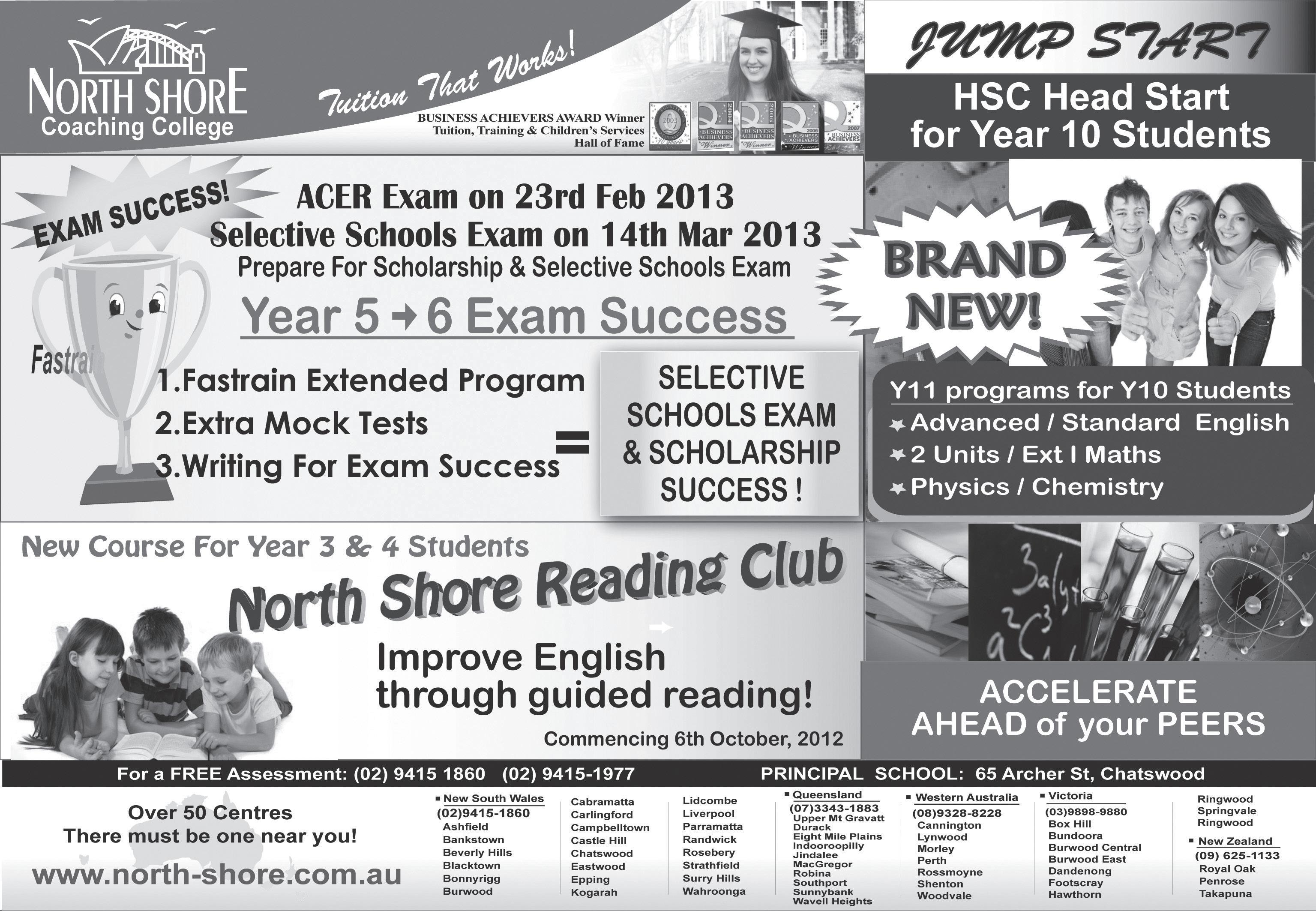


50 OCTOBER (1) 2012 www.indianlink.com.au open 7dAys phone BooKinG phone BooKinG onlyphonebookings available till 10.00pm available till 10.00pm worldwide sales@royalflights.com.au www.royalflights.com.au www.royaltravel.com.au Licence # 2TA 4670 1300 798 999
Perfectionism and managing the high achiever
Not being able to achieve the high standards set for themselves by themselves can lead to a feeling of frustration and anxiety in children and adults
 BY MOHAN DHALL
BY MOHAN DHALL
Many parents have children that they would classify as perfectionistic.
Perfectionism is evident when a child (or adult) focuses on completing activities and tasks to best that they can possibly do and to a perceived standard of excellence that would classify the outcome as ‘the best’. Whilst doing work of a high standard is to be valued, the associated feelings of anxiety, stress, frustration and low self worth may need to be addressed.
Perfectionism is often seen in children who display the following characteristics: they are often bright, usually first born (eldest) or only children, find change difficult to manage and are often anxious about the results of an endeavour they undertake. A person manifesting perfectionist tendencies and who is also highly visual, may tend to arrange their workspace to a very specific standard. Perfectionists can become stressed around deadlines and performance, if there is clutter or a sense of disorganisation or unpredictability. Such students also tend to need fixed times for study, a clear working space, a tidy classroom and teachers who are ordered and methodical.
Teacher pleasers
Perfectionism needs to be distinguished from ‘teacherpleasing’ or parent-pleasing behaviours. Whilst obedience can be valued in classroom and household relationships, it is not a sign of intelligence or perfectionism. Fear of criticism can make a child want to be compliant. Perfectionism however, tends to be viewed as an inner prompt rather than arising from an external source.
Language and rationalisation of feelings
When a child acquires language at a young age, they can be very engaging, chatty and cute. This can encourage further
development of language as older children, adults and others talk to the child. The acquisition of language at a young age can lead to difficulty with respect to the management of perfectionistic behaviours. The child with strong language skills may be encouraged to ‘calm down’ or to ‘stay cool’ when they baulk at a task or express dissatisfaction with their own achievements. This use of logic and rational thinking actually undermines the child’s capacity to help to manage perfectionistic behaviours.
Adultification
A further complication that arises with the early acquisition of language is that of adultification. If this occurs, the child tends to be treated like an equal of the parents, with them appealing to the child to manage, and even asking the child for their opinion on various matters, like feelings and choices they would like to make. Some measure of independence is encouraged by this approach, but far greater dependence also occurs. This dependence is primarily emotional.
Emotional dependence and the perfectionist
A child manifesting perfectionism can find it very difficult to cope with perceptions of ‘failure’, performance that is even slightly below that which they are capable of achieving, and may be very reluctant to take risks when the outcome is not certain. In a classroom such children will not venture answers to questions unless they are certain they are correct. Moreover, if given an open-ended task they can find it extremely difficult to know where to start. They will often ask to be told exactly what to do.
For teachers such behaviours seem very limiting, as the student appears very dependent.
Moreover, as the child ages and passes through high school such perfectionism undermines the goal of helping a child to ‘learn to learn’.
The language of feelings
It is very important that students with perfectionism learn how to manage this tendency and become more resilient. If they can be taught how to identify, articulate and take control over the feelings associated with the stress around performance and achievement, they will have acquired skills for life.
The first step is that feelings must be articulated. This is a very difficult step. The onus here lays with the adults not the child. It sounds quite easy to do - simply name the feelings associated with the process of doing something where performance really, really matters.
Managing stress
The typical response from a parent or teacher in managing this situation usually takes the following form:
“You have tried your best, just be happy with what you have done”. “Don’t be so upset. Just get it done. No need getting so stressed about it”.
These responses whilst wellmeant, are generally worse than ineffectual. They actually attempt to manage emotion with logic or reason. The usual effect is to create a wide gap between the adult and child, and for the situation to worsen rather than improve. So the question arises as to whether there is a better and more effective way with long lasting effects. Fortunately, the simple answer is ‘yes’.
What feelings?
So what does a child feel when they believe they have to produce the perfect piece of work every time? What feelings are being
expressed when a child rips up work and starts again? An obvious answer, in the scenario given, is that ‘the child feels angry or frustrated’.
Unfortunately the obvious answer is not the correct one. Whilst they may be expressing strong frustration, the actual feelings leading to the frustration need to be identified. Behind the frustration, a child probably feels like they have disappointed themselves, that they will be judged for letting down others. This, in turn may be premised on low levels of self worth. Thus, addressing the ‘anger’ and calming it actually does not identify or address the underlying feelings.
Levelling feelings: Three benefits
When a child is told how they are feeling - not asked how they are feeling - it has three benefits. If a parent or teacher was able to say, “Doing well really matters to you. When you have high standards then it is very stressful having to complete things in a short time”.
These words first tell a child that the adult understands them. This is a very significant. Secondly, the actual articulation of the feelings helps to normalise the feelings and also give them a name. This statement should be followed by a short period of silence. At this time the child normally agrees because clearly they have been understood and this articulation creates a powerful and palpable sense of understanding.
Lastly, the parent can then say, “And when we feel these overwhelming feelings then we can breathe slowly and calm ourselves down”. In this way the parent also role models coping strategies.
If this pattern is followed, over time the child should learn
Perfectionists can become stressed around deadlines and performance, if there is clutter or a sense of disorganisation or unpredictability
Behind the frustration, a child probably feels like they have disappointed themselves, that they will be judged for letting down others
to identify their own feelings, articulate them for themselves and learn to manage the feelings through self-talk and calm breathing.
A note of caution, however. Whilst this is a very simple model, it is very difficult to apply for a number of reasons. Firstly, in today’s society we are not used to having the time required to actually work through the process or to even identify how we feel. Secondly, levelling feelings runs counter to the dominant paradigm of managing through rationalisation and logic. Thirdly, articulating feelings takes time and practice. Fourthly, this type of articulation can make the parent feel vulnerable. This is because they may well be managing a situation differently to how they have ever managed prior. And this can feel novel and weak. Lastly, the model takes some time to perfect and thus feeling secure in the process can take time.
In summary, perfectionism can drive people to achieve to a high standard consistently.
When perfectionism is associated with high levels of anxiety, a rational or logical approach does not help in either easing stress or assisting a child to become better at identifying and coping with the behaviour.
An approach based on an understanding of the underlying feeling tends to be more effective, and helps in self-understanding and long term coping.
OCTOBER (1) 2012 51 NATIONAL EDITION s C hoo L
We use all dermalogica products

CoMpLeTe MiGRATion seRViCes
(ABN- 91 761 820 052)
WoRK, sTudy, LiVe in AusTRALiA, n e W Ze ALA nd, C A n A dA
For queries on July’12 changes, Skill Select and Expression of interest call now at 0433 986 780 0421 119 628
Free consultation for 15 minutes or via email

i) Advice on Migration pathways
ii) General Skilled Migrationspecialist
iii) Student Visas( new and extension)
iv) State Sponsored Visas / ENS / RSMS / 457
v) Business Migration
vi) Partner and Family Migration specialist

vii) Admission in Australian Colleges and Universities
• MRT Review procedures in Australia
• OCI / POI / Indian Passport Application / Renewal
We also specialize in Home / Commercial Loans (MFAA Certified) specialist

Contact:
Sonal Agrawal Syed Mohiuddin (JP) Ex-Visa officer


MARN:1169617, MMIA:5385
MARN:1171248, MMIA: 1021, MFAA:54385
Level 2, Suite 8A, 48 Macquarie Street, Parramatta, Australia 2150
PH (02) 86775161, FAX: (02) 98916314
Email: contactus@completemigrationservices.com.au
(We Speak English, Hindi, Marathi, Urdu, Telugu) For quick visa assessment fill the online visa assessment form on www.completemigrationservices.com.au We help you achieve a better life and pursue your dreams

52 OCTOBER (1) 2012 www.indianlink.com.au
Migration Agents Registration Number www.mara.gov.au 1169617 SHASHI HAIR & BEAUTY SALON AND BODY PIERCING CENTRE
Mobile: 0411 140 963 Blacktown Shop 2073, Level 2 Westpoint Shopping Centre Tel: 9679 9288 Mt Druitt Shop 222 Westfield Shopping Centre Tel: 9675 1200 St Marys Shop 26 St Mar ys Village Tel: 9833 3334 Merr ylands Shop 1014 Stockland Merrylands Tel: 9682 2002 NOW OPEN IN STOCKLAND MERRYLANDS • Threading • Facials • Waxing • Tinting • Body Massage • Acrylic Nails • Ear, Nose And Body Piercing • Ipl-Permanent Hair Reduction • Weight Loss • Body Treatments • Micro-Dermabrasion
Non-Surgical Face Lift • Painless Skin Tag Removal
Massage
Haircut, Perming, Keratin Treatment, Hair Colouring, Foils, Tint Regrowth, Full Colour, Chemical Straightening, Up-styles Yes we do Shahnaz Facials Hair Ser vices Gift Vouchers Available
•
•
•
All the murderous rage about a linguistic curiosity
From Tanglish to bhangra and R&B, this song has transcended boundaries of linguistics, rhythm and emotion
 BY MAHESH RADHAkRISHNAN
BY MAHESH RADHAkRISHNAN
I’m one of those second generation migrants who, faced with the pressures of maintaining cultural continuity, grew up more traditionallyoriented in some ways than my relatives in the mother country. I hover between this conservatism and a radicalism which completely rejects convention. Hence, my music taste spans from deeply conservative, classical (or folk) traditional styles to wildly alternative innovations on the fringe. One of the fallouts of this is that I never actively listened to a lot of Indian popular music except at weddings, as it was not traditional enough or alternative enough for me.
At the end of 2011, my brother’s family returned from a trip to India and one of the first things he asked me was, “Have you heard the Kolaveri song?” I hadn’t, and educated myself with YouTube clips of the song, including a chipmunk version.
I wasn’t that impressed by the song. My first reaction was that it perpetuated the racially discriminatory obsession with fair skin so prevalent in India through focusing on a ‘girl with white skin’ with a ‘black’ heart as the object of love. The idea that white skin is the epitome of beauty and a black heart is a bad thing, and the kind of overt colourising of good and bad was a bit too overt for my liking. I may be accused of reading too much into a nonsense song, but these questions need to be asked. The sheer popularity and populism of a song which did not, to my mind, have much to it, also annoyed me. Ok, just another blip on the Indian pop timeline, or so I thought.
Then, a couple of months later, I picked up a copy of Indian Link from the local spice store and saw a headline about a Kolaveri Di flash mob on the cover. In mild shock, I brought it home and soon my wife and I were on YouTube enjoying the Pitt St display - well done, people! But after checking out flash mobs in Auckland, Chennai, USA, Canada and Holland, we discovered that there were versions
of the song spanning different languages including Punjabi, French, Sinhala, Italian, English (as opposed to the original ‘Tanglish’). Some of these were superimposed over the original music and others were musically reshaped into bhangra or R&B rearrangements. The linguistic and stylistic diversity of these different versions of the song motivated me to give the song a second chance, after I got over the slight embarrassment that it would take such a self-evident nonsense song (or self-proclaimed ‘flop song’) to place Tamil Nadu and the Tamil language so prominently on the world stage.

The original song uses mostly English words within a simplified Tamil syntax and case endings called ‘Tanglish’ (for the record, I’m not a big fan of this term as it could be used for any mixture of English with a language beginning with ‘T’ such as Telugu, Tullu, Thai, Turkish or Tagalog).
The lines are very simple and formulaic so it doesn’t take much to understand the song if you can understand English and have some awareness of Indian pronunciation.
India has a rich history of poetry and song that mixes and moves between different languages - in south India this is called manipravālam. ‘Mani’ is Tamil for ‘ruby’ and ‘pravāla’ is Sanskrit for ‘coral’, depicting the high aesthetic regard given to such poetry. The word manipravālam is also used in contemporary Tamil to refer to
code-switching or the mixing of languages in conversation, which is very common across India and the world over. The interspersion of English words into Tamil conversation is deeply entrenched, particularly in Chennai where loan words which end in consonants are often followed by the vowel u, making them fit into South Indian pronunciation. This feature is called vowel epenthesis and occurs even in Tamil where words such as pal (tooth), sol (speak), man (dirt) and ūr (country) become pallu, sollu, mannu and ūru in the spoken Tamil of various parts of Tamil Nadu. This same change occurs to English words which end on consonants like girl (girl-u), skin (skin-u) etc. And it only happens in the South, highlighting the regional flavour of the language of the song.
The other language versions of Kolaveri are equally interesting. Amongst my favourites is one of the Sinhala versions (of at least three!) called Metre song which appears to be about some misadventure involving a taxi or auto-rickshaw metre. While I expect a degree of ridiculousness from the clip and the insobriety of the singers’ voices, I am intrigued as to how it’s all lyrically strung together. The English R&B version of How could you do this to me by the UK-based Tamil background singer Arjun is also interesting, because it draws on the catchiness of the tune and restyles it with an R&B touch.
Arjun’s version coolifies the lyrics, replacing the ‘Tanglish’ ‘flop song’ vibe with something more in keeping with an R&B song (to make the point, his YouTube clip begins with a disclaimer: I don’t usually do this type of song...). Then there’s the Punjabi bhangra version which is lots of fun too. The different versions show how the sentiment of being struck down by love in the Tamil word kolaveri (literally ‘murderous rage’) is variously adapted and reinterpreted.
While many of the versions and flash mobs have come from the Indian diaspora living abroad, the flash mob held in Holland by the Gyas Groningen rowing team breaks that mould, enacted by non-Indian looking performers. The whole performance confounds several preconceived ideas (well, at least mine) about music, identity and language, and so is worth checking out. It looks like the performers are taking the song way too seriously and parodying it at the same time. Whatever it is, a lot of thought has gone into it and clearly the ‘Tanglish’ is accessible enough to make the dramatisations hilarious. When my brother’s family visited us in Canberra over Easter, this time it was us showing them Kolaveri clips and the Dutch version had us all in stitches.
Thanks to the Sydney flash mob, I revisited this nonsense song and took the time to see it through fresh lens, enjoying its different
While many of the versions and flash mobs have come from the Indian diaspora living abroad, the flash mob held in Holland by the Gyas Groningen rowing team breaks that mould, enacted by non-Indian looking performers.
manifestations. Ok, it is quite catchy and I admit that it often gets played in our house (in one or more of its different versions) between our varied appetite of classical and folk, traditional and hybrid, sacred and silly music. The linguistic and cultural aspects of the manifestations of the song continue to intrigue me, and may do so for a while yet. I’ve now discovered that there is a Kolaveripedia which is documenting the global spread of Kolaveri across India and the world, including an ISKCON version with the “Hare Krishna” mantra. While its status as a ‘Tamil’ song may be debatable, Kolaveri is definitely the product of a Tamil language setting, and it has been embraced across India and the world like dosai. This fills me with a mixed sense of pride and embarrassment (about Kolaveri, not dosai!), but that’s popular culture for you. The other interesting fallout has been a debate it has inspired about the integrity of language manifest in a ‘Jaffna’ version of the song in prosaic Tamil asking (the authors and fans) why ‘my Tamil language’ has been subject to a murderous rage (en Tamizh mozhi mēl unakkēn inda kolaveri dā). And with a foot in traditional revivalism and another in unbridled hybridity, I find myself appreciating the creative expression on both sides of the debate, and hopping on the Kolaveri bandwagon.
OCTOBER (1) 2012 53 NATIONAL EDITION M usi C





54 OCTOBER (1) 2012 www.indianlink.com.au






OCTOBER (1) 2012 55 NATIONAL EDITION Suite 1, 71 A Macquarie street, Parramatta. Phone: 0411 520 546 02 9687 9741 For expert coaching in • Money completely refundable, if not satisfied with the first tuition session. • Lowest fee Guaranteed. • Power packed sessions *Conditions apply ( enquire before enrolling). ENGLISH GURU www.englishguru.com.au IELTS Guarantee Course* or One / Two Weeks Crash Course Enrol today in the Band Score
Relaxed, rustic
 BY PETRA O’NEILL
BY PETRA O’NEILL
Languidly reclining under a large beach umbrella at the Independence Hotel, a tanned wellrounded Russian puffs on a Cuban cigar, while his glamorous companion wears a bored expression as she gazes out to sea. With a long crescent shaped beach, clear blue sky, casuarinas and swaying coconut palms, this could be anywhere hot and exotic, except that we three are the only guests.
Could this really be Cambodia? In a country renowned for the temples of Angkor Wat, the Mekong river and the museums, temples and palaces found in the capital Phnom Penh, the lesser known coastal resort towns are an unexpected find for those travellers who take a trip off the beaten track.



Sihanoukville has stunning white sand beaches, budget guesthouses, rustic outdoor beachfront restaurants, a national park and diving excursions to nearby islands including the Bamboo and Monkey islands that are teeming with marine life. Given Cambodia’s recent history, the resurgence of Sihanoukville is remarkable. In the early 1960s, a port was built and a town created, named after King Norodom Sihanouk. Then came the Vietnam War followed by the Khmer Rouge who murdered 1.7 million people, almost everyone in the country who possessed wealth or an education. Their holiday homes and resort hotels were abandoned and fell into ruin.


Also in the ‘60s the Independence Hotel was Sihanoukville’s premier resort, and many celebrities stayed here. Exuding a retro 007 James Bond ambience with the classic sounds of Frank Sinatra coming from the bar, and black and white photographs of Jackie Kennedy who stayed here in 1967, I felt myself taken back in time. It was low season and the mysterious Russian couple and I had the opulent, fully-restored hotel to ourselves.

After breakfast, being the only guest faced with choosing from a lavish buffet selection, I asked the Duty Manager if I could walk to all beaches in a day. “Yes, ok!” was his reply. Unconvinced that he had fully understood my question, I set off with a tourist map. After several kilometres I neared a fishing village at the end of a peninsula. Young schoolgirls indicated I had come too far and practising their English,

walked me back to the right path. Sokha Beach has a beautiful white sand beach, a spacious resort and a handful of guests. Then past the famous Golden Lion roundabout, internet cafes, bars and massage parlours to the main beaches of Serendipity and Ochheuteal. Here you will find guesthouses with rooms from US$3 and beachfront restaurants with raised bamboo platforms where local families sit to enjoy BBQ seafood. The furthest, Otres Beach is the prettiest and least touristy, the guesthouses still more rustic. I found the bucolic laidback charm that I had come in search of several hours away along the coast in Kep, where Phnom Penh’s elite established a retreat in the first half of the 20th century. They built modernist mansions many in the style of Le Corbusier, some now sympathetically restored and turned into luxury residences or boutique hotels. Although the narrow beach in Kep fronts a retaining wall and is less spectacular than the beaches of Sihanoukville, the town has an appealing relaxed feel to it. For the days I spent here, I cycled from Kep Lodge, a delightful place with bungalows set in a lush tropical garden on a hillside, to the waterfront crab market and along the headland for a tasty vegetable curry at Brise De Kep restaurant and guesthouse. I took a boat ride to nearby Rabbit Island and after circumnavigating it, in the company of two young New Zealanders, spent several hours relaxing in a hammock until the fishing boat returned. There are also waterfalls and pepper plantations to explore along a series of hiking trails. I took a trip to the dusty town of Kampot with its yellow and white French colonial buildings to Bokor Mountain, the site of an abandoned hill station built by the French in 1922 with the ruins of a Catholic Church, hotel and casino abandoned since 1972. It is an eerie haunting place surrounded by thick impenetrable fog where many Cambodians were executed by the Khmer Rouge. A Chinese company is building a massive casino and turning the road leading up there into a highway.
If you can get beyond the bars, massage parlours, too many tuk tuk drivers in search of a fare and aging westerners with long white ponytails riding noisy motorbikes, Sihanoukville has a lot to offer, but for me, Kep is one of those special places that I think of often. Cambodia’s southern coast is well worth the detour.
56 OCTOBER (1) 2012
TRAV e L
Although the metros are touristy and predictable, Cambodia’s resort towns of Sihanoukville, Kampot and Kep are a pleasant surprise
retreats
Sihanoukville has stunning white sand beaches, budget guesthouses, rustic outdoor beachfront restaurants, a national park and diving excursions to nearby islands


Main: Rabbit Island, Kep


Clockwise from Bottom Left: Guesthouse, Kep Brise De Kep curry, Kep Ruined Mansion, Kep Serendipity Beach, Sihanoukville
Kampot sunset

Serendipity Beach, Sihanoukville Kep Beach Crab Market, Kep Sunset, Independence Beach, Sihanoukville

Travel noTebook C AMBODIA’S COASTAL RESORT TOWNS
G ETTING THERE Singapore Airlines, Malaysia Airlines, Air Asia, Thai Airways or Vietnam Airlines fly to Cambodia. Jetstar Asia and Bangkok Airways also fly there. From Phnom Penh buses depart frequently for both Sihanoukville and Kep. Journey time is under 4 hours. Many travellers also arrive in Sihanoukville by bus from Bangkok, taking around 9 hours. Kep is very close to Vietnam and travelling onto Phu Quoc Island is highly recommended.
W HERE TO STAy The top beachfront choice in Sihanoukville in the 1960s, the Independence Hotel has been given a stylish redo. 855-34-943-300; www.independencehotel.net In Kep, Kep Lodge provides bicycles, and meals taken in the open air dining room are a highlight. 855-092-435-330; www.keplodge.com Other choices include the Beach House, La Villa de Monsieur Thomas a restored colonial villa, and the Veranda Natural Resort.
W HERE TO EAT Hawker markets are lively, great fun and provide an excellent introduction to Malaysian cuisine. KK is one of Malaysia’s most ethnically diverse cities, reflected in the variety of cuisines available including Malay, Indonesian, Filipino, Chinese, Indian and local dishes from Sabah, including jungle ferns.
TIP
Take crisp US dollars in small denominations since most restaurants, hotels etc., charge in US currency. Credit cards are not widely accepted. Canby Publications has free guides available from hotels with maps and info.


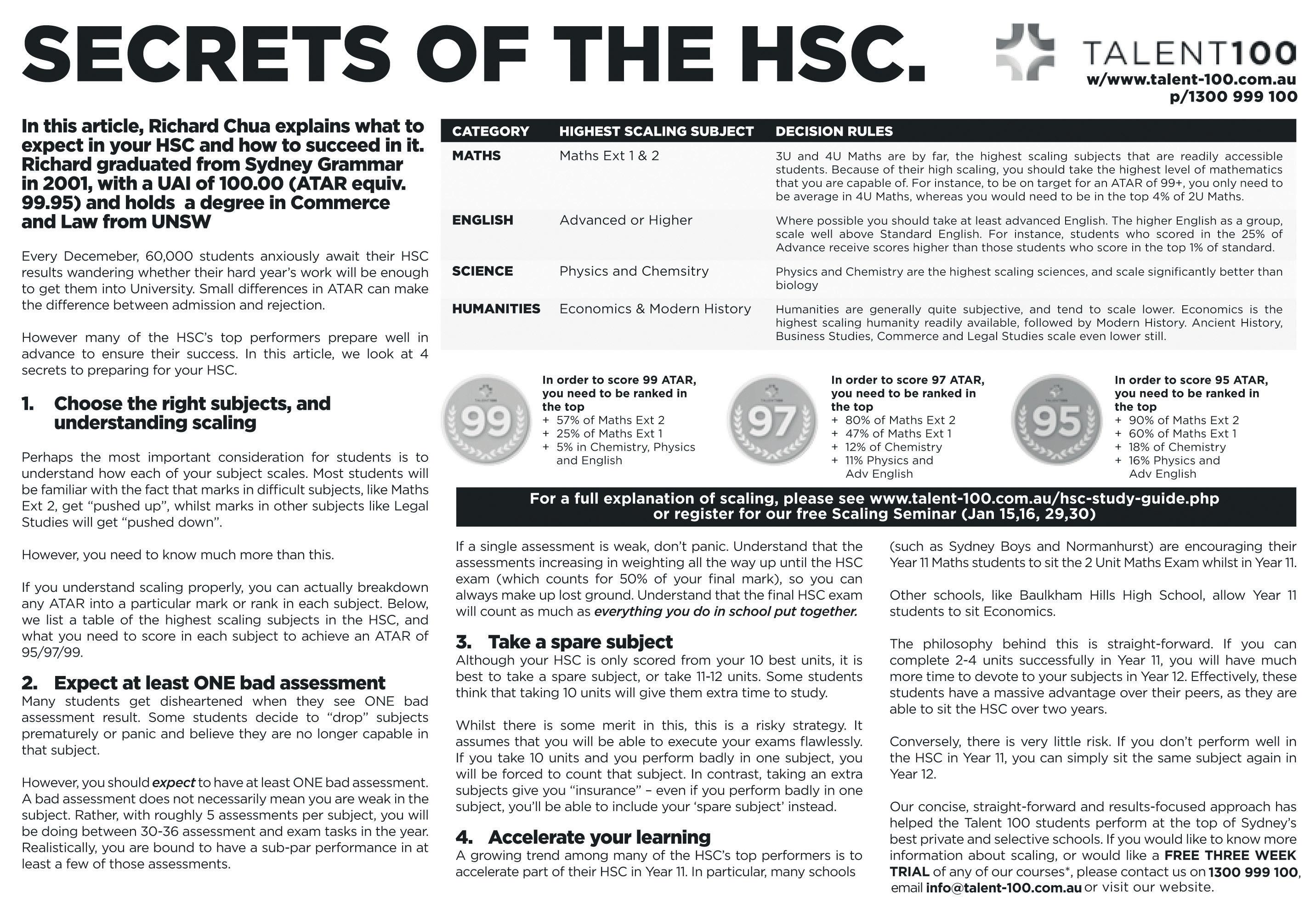


58 OCTOBER (1) 2012 www.indianlink.com.au
An understated India for Vera Wang
BY TALIA kAUR
New York Fashion Week (6-13 September) this year saw designers attract inspiration from all corners of the world. It was no different for globally renowned American fashion designer Vera Wang. She is usually well known for her haute couture bridal gowns and classy high fashion garments, but the designer brought something a little different to the runway at the show.
For her spring 2013 collection, Wang drew inspiration from the colours, materials and embroidery of India. She showcased the signature look of the ‘Nehru collar’ and ‘choli jacket’, as well as plenty of gold detailed embroidery and brocade.
Wang’s collection was delicate and magical. Her garments invoked everything about India – beautiful, bright colours, gorgeous silhouettes and intricate embroidery – without being too decorative or elaborate. She said that her Indian-inspired collection transcends saris and Bollywood, which are usually identified with Indian fashion.
“The collection is out of India, but India is just the starting point,” Wang said in a backstage interview. “There is no belly dancing, there are no sarongs, there are no saris. It is about the sort of discipline about Indian men’s clothes like Nehru jackets, against the mystery and sensuality of Indian women — but not literally. It’s not Bollywood.”
It was a spectacular display of luxurious textures and details, and gold was definitely a recurring colour in the collection. There was everything from gold embroidery and goldjewelled brocade to goldhammered bullion skirts and dresses.

Wang’s collection started out
with crisp white skirts – layered, full length, pleated and even tulipshaped. These were paired with tops in embroidered soutache, which looks like braided lace, but is a little thicker. It then went on to show a little more intensity – there were complicated lace trousers, silk and lace dresses, heavily embroidered sleeveless tops and slim-fitting bermuda shorts. There were even fitted canvas jackets and sleeveless tailored jackets, which were a bit more obvious than the other garments in their allusion to India, but still not so much that it looked like a Bollywood stage.
All Wang’s designs displayed various shades of bright purple, turquoise, deep blue, white and emerald green.
Vera Wang’s fashion show definitely ended with a bang: a stunning line of v-neck embroidered gowns.
For her spring 2013 collection, Wang drew inspiration from India and its first Prime Minister, Jawaharlal Nehru








“It is about the sort of discipline about Indian men’s clothes like Nehru jackets, against the mystery and sensuality of Indian womenbut not literally”
Vera Wang


FA shion
One of couture’s top fashion designers showcases the best of India’s subtle charm and charisma
Eat well this festive season
them slowly and gradually. Try to use smaller plates and avoid second helpings.
BY GEETA HURANA

The festival season is here again with Ganesh Chaturthi to Bhai Duj, and just like in India, they can never be complete without special foods and good hospitality. With so much variety available as well as some traditional foods that are only cooked on these particular festivals, it sometimes becomes difficult to avoid high calorie festive foods. This is the time when even the most disciplined person lets loose. And at this time of the year, anyone even talking about a diet or healthy eating is deemed to be most unpopular.
But if you have managed to lose weight or keep it off this season, or are a diabetic or have high blood pressure or cholesterol, it becomes even more imperative to eat healthy as after the feasting is over, you might end up with many more problems than you started with. Counting calories at festivals is a big challenge. It has been seen over the years that after the festival season, the rate of obesity goes up, sugar control of diabetics goes down and those who are predisposed to develop diabetes also show signs of contracting diabetes. Experts warn that festival fun – and not the least, the culture of sweet-eating that peaks then –can help trigger long-term health problems, with diabetes only the start. In fact, India is the diabetes capital of the world, as it hosts the most diabetics among all nations. But with festivities following each other during this time, it is very difficult to stay focused and adhere to a strict diet schedule. It might start with a bite here and a bite there and before we know it, we have eaten a plate full of extra calories by the end of the day. If you keep in mind a few points, you need not miss out all the fun and they might help in avoid health problems later.
Smaller portions
Have smaller portion sizes of sweets and high calorie foods. Even while visiting friends and families, pick up smaller pieces rather than overindulging or being rude and completely refusing. Instead of loading your plate to the brim with sweets, just take a few, may be one or two, and eat
Give away the extras goodies
Do not eat sweets and mithai are there or going bad because no one else is eating them. It is better to throw away a few pieces of rather than putting your health at risk. Or take the extra sweets to your workplace, to be enjoyed by your multicultural colleagues who would definitely love a taste of Indian tradition.
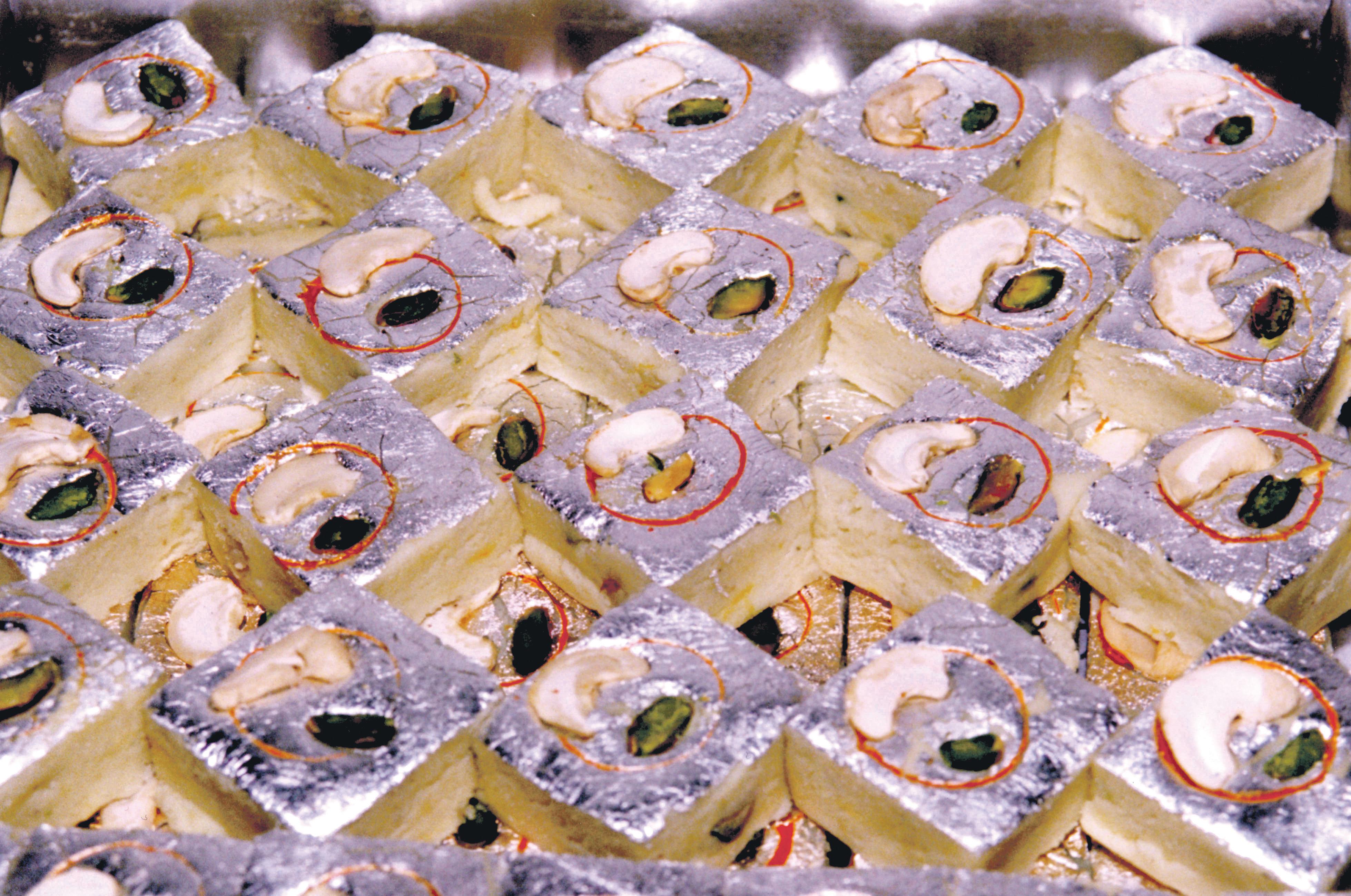

Avoid aerated drinks
Avoid having aerated drinks, sweetened beverages and fizzy drinks, which only add unnecessary calories. Instead, have natural refreshing drinks like lemon juice, jaljeera fruit juice. Drink plenty of water, the healthiest drink available!
Reduced fat foods
If you are making sweets yourself, use low fat ingredients like low fat milk and other dairy products. Use natural sweeteners like honey and dates to make sweets, and avoid using refined sugar or artificial sweeteners. But even if you use low fat products, do not overconsume. Plan recipes that are low in calories and set an example for others to follow. When eating out, choose roasted or baked, grilled or barbequed snacks instead of fried ones.
Avoid skipping meals
Do not skip meals to compensate for the extra calories. You always tend to have more cravings and overeat on an empty stomach. Rather, try to nibble on healthy snacks like salads, sprouts, fruit and nuts to avoid overeating at dinner parties or bingeing on unhealthy snacks.
Snack healthy
Include fresh fruits, yogurt dips
with crackers, nuts, raw salads, soups, roasted meats and chicken, soups as part of your snacks and meals instead of fried, oily and high sugar foods and snacks. Do not skip out on sweets completely, but adding fruits and nuts to the plate may help balance the calories. You could also have a light snack before visiting, to avoid consuming high calorie foods there.
Gift healthy
Set an example by gifting healthy foods such as baskets of fruit, dried fruit, nuts or candles instead of sweets or chocolates.
Limit alcohol intake
Avoid consuming too much alcohol at parties. Sip on some fruit juices or water in between drinks or go slow on drinks to avoid refilling. And make sure you snack in moderation and snack healthy with alcohol, as that is
60 OCTOBER (1) 2012 W e LL ness
The season of indulgence has now begun, with a range of festivals making it difficult to stick to a healthy food routine
Teen treats
Active youngsters can find creativity in cuisine these school holidays

24 short bamboo skewers or long toothpicks
1 tbsp olive oil
BY SHAFEEN MUSTAQ
The school holidays have begun and we all know that sometimes it equates to adults scrambling for activities and teens getting quickly bored at home.
Well, there’s a solution to that - a fun, easy solution. Cooking! And no I don’t mean it in an Auntyji kind of way, “Beta, learn how to make dal roti for your marriage!” Cooking is an excellent form of de-stressing and results in some fabulous results (when done correctly).
So here’s a few recipes for the teenagers in school holidays. The complexity level is zero so anyone can do these and learn the basics of getting in and around the kitchen with minimal damage. They are quick easy and fun, and very very yummy. Enjoy!
Cucumber lemon and mint drink
One of my favourite nonalcoholic-make-anytime-anywhere drinks for spring, this is a light and easy concoction that cleanses the palate and soothes the soul.
1. Fill half a glass with lemonade
2. Chop up a handful of mint and a quarter of a cucumber into thin slices and drop into the glass
3. Top up with soda or sparkling water
4. Cut a wedge of lemon or lime and perch on rim before serving Easy. Fresh and fantastic!
Caprese on a stick
These nibbles can be used as snacks or an entrée, and are quick, easy and fun to make and eat. Younger children can help in making these, provided the skewers are not too sharp. Use firm, ripe cherry tomatoes and good-quality fresh mozzarella for these salad skewers. They are perfect for that movie marathon you have organised for ten friends (Beware, they are so good-looking your mum might get you to make these for her next big party).
24 grape or cherry tomatoes
24 medium-sized basil leaves
250 gms fresh mozzarella, drained, cut into 1-inch cubes (try bocconcini, or better still, baby bocconcini, you won’t have to cut them)
Sea salt to taste (for a variation, try smoked salt)
Freshly ground pepper
Thread one tomato, a basil leaf and a cube of mozzarella onto each skewer. Repeat the process until all 24 skewers are ready. Lay the skewers on a serving platter. Drizzle olive oil over them and sprinkle generously with salt and pepper. Serve at room temperature.

Can you Cannelloni?

I love pasta. I absolutely love it. I know it’s eating a bowlful of carbs and its usual partner in crime is a stringy, soft, yummy melted cheese which isn’t that great for you either, but when it comes to cannelloni I can’t help myself! So here is a quick and easy recipe to try at home and enjoy all those carbs and cheese! In moderation that is, and don’t repeat the dish for at least two weeks…
500ml tomato paste or pasta sauce
600g ricotta cheese (low-fat, if desired)
250g cooked mince (lamb or beef)
2 tbsp flat-leaf parsley, chopped
2 tbsp basil, chopped
1 egg
½ cup grated parmesan
Salt and cracked black pepper to taste
1 cup grated low fat mozzarella San Remo readymade cannelloni

Preheat oven to 190°C. Lightly grease a 20cm x 28cm x 4cmhigh ovenproof dish. Pour in a quarter portion of the tomato paste, spreading evenly over base of dish. Keep aside. Place ricotta, mince, parsley, basil, parmesan, egg, salt and pepper in a large bowl and mix to combine. Take each cannelloni tube and stuff with the ricotta mixture. Lay tubes side by side in the dish.
Spoon over the rest of the tomato paste to coat the tubes, using enough to suit your preference. Sprinkle with mozzarella cheeses and bake for 25 minutes or until golden. Serve warm with a green salad.
Chocolatey
Chocolate Cake
I saw a picture on Instagram and I fell in love. It was of a chocolate cake with chocolate icing topped
with M&Ms and fenced with Kitkats. I wanted it, and badly! I made myself this yummy, impractical, fattening delight for Eid. But it was easy to make and tasted absolutely out of this world.

Chocolate cake mix (you can make it from scratch, but why reinvent the wheel?)
1 pack (350gms) M&Ms
1 pack of 12 medium sized Kitkat chocolate bars
For the chocolate icing
1 cup icing sugar
1 tsp cocoa
1 tbsp butter or margarine
1 tbsp milk
Bake the chocolate cake from the mix, as per the instructions on the pack. Leave to cool on a wire rack. Prepare the chocolate icing by mixing together all the ingredients to form a smooth consistency. Next, transfer to a serving dish and ice the top and sides evenly with the icing mix. Before the icing sets, quickly but evenly dress the top with M&Ms starting from the outside edge of the cake, making a
concentric circle in a different colour until you reach the centre. Ensure that you leave at least a centimetre gap from the edge of the cake and the outermost concentric circle. Gently fence the sides with Kitkats. Leave to set and then serve

NATIONAL EDITION
F ood OCTOBER (1) 2012 61
happening in Bollywood
the Buzz
Sridevi is a sensation
It’s been a long, long time since Sridevi graced the big screen, but she is now back with a vengeance, and we can all expect to see much more of the versatile actress. Sridevi is in the news for English Vinglish that marks her comeback onto the big screen after 15 years. And it’s not just fans who are queuing up to see the actress, Bollywood’s best are also waiting for her re-debut.
Amitabh Bachchan, who saw a preview version of the film, recently tweeted that Sri’s performance left him in tears.
Film-maker Ram Gopal Verma (RGV) said: “Can’t wait (for the movie to release). For first time in 20 years, ever since I became a director, I am going to stand in a line and buy a ticket to see Sridevi.”
And actor Anil Kapoor insists that his sister-in-law and co-star Sridevi is one of the best actresses of recent times. “She is a complete actress. I have done a lot of films with her and in the last many, many years, I think she is the best,” the 52-yearold said recently. Anil and Sridevi worked together in the past with successes like Mr. India, Laadla and Judaai.
Sridevi is married to Anil’s elder brother Boney Kapoor who, says the buzz around Bollywood, is planning a sequel to his 1987 hit production venture Mr. India. Naturally, Anil is expected to be a part of the sequel, and perhaps, so will Sridevi.
English Vingish will release soon, produced by R Balki and directed by his wife Gauri Shinde, who makes her debut with the film. It will see 49-year-old Sridevi playing housewife Shashi, who is bullied by her children for her poor
A celebration of Kaka’s life
Veteran actor Rajesh Khanna’s last film Riyasat, which he shot for before he died on July 18, will release in theatres on December 28, a day before his 70th birth anniversary, revealed director Ashok Tyagi.
The late superstar has a prominent role in the movie, which is almost ready, but Tyagi is deliberately holding off its release until Kaka’s birth anniversary as a sign of respect.

“We can release the film at any time, but we want to release it on Dec 29. Since it is a Saturday, we will be releasing it on Dec 28, just a day before Kakaji’s (Rajesh Khanna) birth anniversary,” Tyagi said.
The director says Rajesh Khanna has left a letter behind, and that shall be opened just before the release of the film.
“We have no clue what he has written in the letter. I am only thankful to God that we got an opportunity to work with him,” he added.
For his role in Riyasat, Rajesh Khanna is said to have studied Amitabh Bachchanstarrer Sarkar, released in 2005.

“Before starting the film, he watched Amitabh Bachchan’s Sarkar as he is also playing godfather in the film. It’s a very different subject and he had shot almost 95 per cent of the film,” revealed Tyagi.
“The entire nation will hear Kakaji’s voice in the film,” said Tyagi, who had started shooting the film in February 2011 and finished it in October.
“Kakaji shot most portions, the ones I wanted. But yes, we were tempted to shoot more. And if his health permitted, we would surely have shot all of it. Then all of a sudden his health started deteriorating,” he added.
Riyasat also features Gauri Kulkarni, Aryan Vaid, Aryeman Ramsay and Raza Murad. Should be interesting to see what Kaka does in the film….
GUESS WHO ?
command over the English language. So get ready for what is likely to be a sensational performance from Sridevi!
Vyjayanthimala’s comeback
call!
yesteryear actress Vyjayanthimala Bali has decided to return to the world of grease paint after 42 years, but only for Sandeep Malani’s issue-based movie Janleva 555. All of 76 and still going strong, Vyjayantimala last appeared in the 1970 release of Ganwaar, and urges everyone to “watch this one of its kind film”.
The actress will be seen in a two to three minutes’ video to be played before the film, which talks about how to save cobra bitten children in villages. Janleva 555 has been made to support and help acquire ventilator systems for the hospitals, said the veteran actress and added, “First of all it is a great thought and it’s very useful for the people in the villages, and especially children, who die of snake bites”.
“This kind of ventilator system to save children dying of snake bites is a very noble task and I appreciate this work. I wish the makers of the film all the success and I request everybody to please watch the film because it will be one of its kind,” the actress said in a statement.
Although Kalpana Pandit, who produced the film and also plays a pivotal role in it, is reluctant to discuss details, she is clearly thrilled at Vyjayanthimala’s contribution. “There can be no bigger blessing for my maiden home production Janleva 555 than receiving the good wishes of the first original superstar of Indian cinema,” she said, adding, “She has given a social message in a special video, which will be shown before the beginning of the film. The two to three minutes’ video of superstar Vyjayanthimala will have a critical medical message for cobra bitten children. I can’t reveal much about the ou will understand it once you will watch the film.”
Janleva 555 also features Anant Nag and Akash Hora and is scheduled for a mid-October release. Kudos to Vyjanthimala for taking on the mantle of mentor for a good cause!
Vivek a modern Gabbar Singh?
Actor Vivek Oberoi has played many roles but his latest one for Krrish 3 is the most challenging, described as “Gabbar Singh of our times”. Vivek plays the baddie for a change, and he’s excited about the role.
“I am really very, very excited about Krrish 3. It’s a really cool, bad character and it’s a role of a lifetime. It’s like a Gabbar Singh of our times, so I am very
62 OCTOBER (1) 2012 www.indianlink.com.au
ABHILASHA SENGUPTA brings us up-to-date on what’s hot and
He played a young Mahatma Gandhi in a critically acclaimed film.
(Find the answer under Caption Contest)
ENTErTAINmENT
excited,” said the 36-year-old actor.
Directed by Rakesh Roshan, Krrish 3 is a sequel to the 2006-superhero flick Krrish, featuring Hrithik Roshan in the lead. And to balance the badness, Vivek’s romantic-comedy Kismet, Love, Paisa, Dilli will release soon. Vivek has also been working on Zilla Ghaziabad, and romantic comedy Jayanta Bhai Ki Luv Story. Seems like Vivek’s spreading his wings a bit - always a good sign of a competent actor.


Delhi Safari set to be the whole trip
It boasts of actors like Akshaye Khanna, Govinda, Suniel Shetty, Boman Irani and Urmila Matondkar, so it’s little wonder that director Nikhil Advani is so thrilled about his film Delhi Safari. The movie is a bilingual stereoscopic 3D animation film and apparently a complete entertainer, packed with great music.

“It (Delhi Safari) has got fun, lots of tamasha (drama), lots of energy and lots of great music,” Nikhil said recently at the movie’s music launch.
And with the impressive line of voiceovers, he may indeed be right.
Nikhil Advani, known for directing Shah Rukh Khan-starrer Kal Ho Naa Ho, has dedicated Delhi Safari to his 6-year-old daughter Keya.
“It’s a proud moment, she (Keya) is not allowed to watch the other movies I have made,” said Advani, whose last directorial was Patiala House. Good luck to the movie, wishing it all success!
Akshay’s healthy heart tip
“Eat before sunset for healthy difference,” says Akshay Kumar, and he should know. The actor is counted among the fittest men in tinsel town, and he recently shared the secret of his fitness. “Only one rule which I have followed in my life, which I would like to share, is to eat your food before sunset. It will make a lot of difference,” said the 45-yearold actor, who became a secondtime dad recently.
He spoke on the sidelines of Happy Heart Carnival, held to celebrate the World Heart Day at SL Raheja Hospital in Mumbai.
The actor asserts people should be careful of their food intake. “It is very important to take care of yourself and your family. I would advise all of you to just be careful of what you eat,” he said to the audience.
Akshay is trained in martial arts and he maintains a regular fitness regime. He prefers to indulge in outdoor games and sports to keep himself fit and fine, and believes that yoga, meditation and martial arts help in staying physically fit as well as bring mental balance. Words of wisdom indeed!
Raw Indian music revival
It’s hard to remember the last
VyJAyANTHIMALA


time a Hindi film song resonated to the clear sound of a harmonium or a flute, thanks to the introduction of technologically advanced synthesisers and other recording equipment. But many composers are now striving to bring back the lost charm of raw Indian music.
Composers like Sneha
Khanwalkar and Ajay-Atul or Indian Ocean’s vocalist Rahul Ram have experimented by bringing back the rawness in their music and have succeeded in striking the right chords with the youth, without adopting western tunes.
Khanwalkar is the woman behind the distinct music in Anurag
Kashyap’s Gangs of Wasseypur and her songs, I am a hunter, Womaniya Chhi chha ledar have a blend of rustic beats, with local folk singers adding up to the regional flavour. The music is desi to its core. Sneha believes in spending time with the artists and using their true talent.
“If a song is based in one place, that place has its own quality. People have their own of way of thinking and talking, which is different from how we think in the city. So it is important to know how they sing and render their music,” said Khanwalkar.
“It is only after you know the place that you will be able to imbibe its quality in the song. If the director of the film is going all out to depict something skilfully, then I just try to do the same thing with the music of the film,” she added, pointing out to Kashyap’s knack of bringing the real as is on reel.
Ajay-Atul, who composed music for Karan Johar’s remake of Agneepath, tried to retain the charm of raw music with compositions like Chikni chameli and Gun gun guna. They recorded the songs with live instruments. Chikni chameli is the Hindi version of their Marathi hit Kombadi palali Singer Sukhwinder Singh, who recently visited Australia on tour and has done playback in Prakash Jha’s upcoming movie Chakravyuh as well as sang for Ekta Kapoor’s Kyaa Super Kool Hain Hum, feels 90 per cent of the composers are making music by modern ways while the rest 10 percent try to retain the old charm.
“We used dumroos in Hum hai cappuccino in Kyaa Super... and in one of the songs in Chakravyuh, we have instruments that Naxalites generally use to make their music. So good work is still happening in the industry,” Singh said. And it is important too, as he feels “you have to be extraordinary to make a place for yourself in Bollywood.”
The music of Akshay Kumarstarrer Rowdy Rathore also boasts of regional music with songs like Aa re pritam pyaare and Chinta ta ta, which find inspiration from the south.
Also, remember the chartbusters Des mera and Mehangai dayan from Aamir Khan’s Peepli Live?
The lyrics and music were composed by the Indian Ocean band, and
Ratna wins a double pass for new Hindi film English Vinglish

immediately struck a chord with the viewers.
Though the Indian version of Coke Studio of Pakistan has helped in reviving the old world charm in a big way, Ram feels Coke Studio is even more raw.
“Coke Studio Pakistan has given us an impetus - we are nowhere close to that. They have managed to retain the rawness,” he said.
“In India, I feel Coke Studio is overproduced. It’s become too slick,” he added.
One hopes the trend does not translate to the big screen! IANS
OCTOBER (1) 2012 63 NATIONAL EDITION
CAPTION CONTEST Send in your response to info@indianlink.com.au and win a surprise prize What’s the chitchat between Karan Johar and Vidya Balan here?
AkSHAy kUMAR
Last issue Caption Contest winning entry
Ratna Panjabi Subiaco, WA
VIVEk OBEROI
Answer to GUESS WHO?
SRIDEVI
Rajit Kapoor (The Making of the Mahatma, 1996)
Cine Talk
A naked look at Bollywood shenannigans
Somewhere deep within the corroding flamboyance of filmdom, there is a tale of heartbreaking compromises and immorality tucked away from the naked, tearless eye. Madhur Bhandarkar nearly gets to the nerve centre of that world, and then pulls back just before he’s really gotten there.
Heroine is an intriguingly unfinished film - partly in the rapidfire mood of a game show and partly like an elegiac melody played gently on an antique piano with immaculate fingers. It lacks a centre, sometimes even a focus as it tries to cram in too many incidents, episodes, scandals, controversies and plain absurdities that are an integral part of Bollywood, so much so that the first hour or so gets suffocatingly airtight.
And then you realize towards the end, that the world of the superstar Mahi Arora traps the star, makes her a puppet of success, traps her in a web of deceit and finally throws her into a whirlwind of vaporous deceptions.
The closing moments have that gut-wrenching element which made Bhandarkar’s Chandni Bar, Page 3 and Fashion among the more sensitive
dramas in recent times.
We see Mahi, shattered forlorn and bereft, trapped in a car surrounded by merciless television journalists. As the haunting background score by Salim-Sulaiman builds up to a shattering crescendo, Mahi’s hands fold together in a plea of mercy. In moments our hearts bleed for Mahi.
God help those who are cursed with stardom. They first have to struggle to get there. And then they must continue to fight to cling to their place. And then, as Govind Namdeo playing Mahi’s quietly faithful secretary tells her: “An actress’ life-span is by its very nature limited”.
Not that we haven’t heard such wisdom on the show world before. The dialogues could have been far more powerful. Instead they try to shock with a casual candour that fails to ignite the scenes.
Kareena Kapoor in the best performance of her career so far, leads Mahi’s character through the murky labyrinth of ambition, rivalry and selfdestructive tricks of survival in the rat race. Though her character is inconsistent (suffering, we are told, from bipolar disorder or is it just the writer’s vagaries?) Kareena furnishes the heroine’s character
with a rare vulnerability and an exceptional inner life.
In the film’s rawest moments when the star’s mask peels off completely, Kareena’s face shows that stricken expression of naked panic and abject solitude that one last saw in the performance of Tabu in Mira Nair’s The Namesake after her husband’s sudden death.
Stardom kills you bit by bit. Kareena bravely undertakes Mahi Arora’s perilous journey from the top to the bottom of the star-ladder. This is Kareena’s most fearless performance to date.

Interestingly this is the second film in three weeks where a desperate falling star resorts to the dirtiest of measures to retrieve her stardom. Raaz ki baat to yeh hai ki Heroine sidesteps all the cliches of the film industry even while plonking the plot pat into those predictable places.
So does Bhandarkar’s film exaggerate the sham that underlines the shindig of showbiz? The answer is, yes. Heroine is guilty of gross excesses. There are too many unnecessary characters, specially in the first-half bustling around in clumsily staged ramp shows, awards functions and filmy parties claiming our attention.
Once Bhandarkar and his co-
writers Manoj Tyagi, Nilanjan Iyenger and Anuradha Tiwary get over their look-we-knowshowbiz-in-and-out fetish, the narrative finally settles down to telling us Mahi’s story vis-a-vis the two men in her life, the star Aryan Khanna (Arjun Rampal) and the cricketer Angad Pal (Randeep Hooda).
Though Rampal’s character reminded me of Arbaaz Khan in Bhandarkar’s Fashion, both are characters despite their uni-dimensional nature and are brought to life by two of our most interesting actors today. At least three other standout performances that burnish Bhandarkar’s flawed but fabulous film are those by Divya Dutt playing Mahi’s ruthless business manager who occasionally surprises herself by feeling real emotions for the fast-fading actress, Ranveer Shorey as the eccentric egomaniacal arthouse filmmaker from Bengal and Shahana Goswami as Mahi’s Bengali co-actor in one of the film’s finest episodes when Mahi, in a defiant attempt to show she is star who can act, has a disastrous trust with realistic cinema.
In fact, Shahana and Kareena share some of the film’s most special moments. Bhandarkar over-juices some of the film’s sensual possibilities, underdevelops some of the more engrossing characters, for example the yesteryears’ star played by Helen.

The love-making scenes are done fitfully and hastily. And the dialogues (most of them sounding profound without actually meaning anything really substantial) are spoken by the actors in the tone of a radio play. But Heroine still works, and works wonderfully in some places. There’s an inconsistency to the storytelling that works effectively in putting the protagonist’s deeply flawed and fractured character into a pulsating perspective wherein we can no longer distinguish between the fatal flaws of the main character and the action and reactions that have been written to define her flawed existence.
you come away from the film haunted by Kareena Kapoor who plays the disembodied diva with devastating honesty. Bhandarkar rips into the artifice of showbiz with vigour and tenderness. Like its heroine, the film is flawed, but also bewildering, beguiling and yes, beautiful.
Subhash k. Jha
FILm: Heroine
CAST: kareena kapoor, Arjun Rampal, Randeep Hooda, Shahana Goswami, Ranveer Shorey, Govind Namdeo
DIrECTOr: Madhur Bhandarkar
ENTErTAINmENT
Challenging the merchandising of religion
For popular art, it is considered taboo to question religious dogma. Somewhere deep within us we all know ritualistic religiosity is a multi-crore business in our country. But who dares to raise a voice against the deplorable extravagance which is meant to please the Gods?
That amazingly skilled actor Paresh Rawal does exactly that. He raises a voice against organised religion and the merchandising of faith whereby a common man’s threshold of belief in the divine power is weighed against the amount of money he rustles up to appease the Gods. The point, made with telling acerbity in OMG is that God doesn’t want our money.
Then who is pocketing the billions that flow into the religious industry each year in the name of God?
Based on a long-running play, OMG adapts the delicious premise of the staged event, questioning not the presence of God but the absence of sincerity in His self-appointed minions. That Paresh Rawal reprises his role of Kanjilal, the non-believer who drags ‘God’ to court, is a stroke of luck for this arresting adaptation. He rattles off the most iconoclastic lines in the most convincing and endearing tones rendering the figureheads of organised religions into redundant blubbering entities.


And yet - and this is the film’s salient triumph - it doesn’t seem
to insult or ridicule any religious belief. OMG questions the scared cows without milking those cows for effect. There is an inner strength to the ideas and beliefs put forward in this film. These provide a centrality to the plot that could easily have gotten lost in the maze of philosophical idea and religious cynicism.
The film exudes a powerful scent of sincerity. Much of it can be sourced to Paresh who brings splendid conviction and power to his lines.
Mithun Chakraborty gives another brave and believable
performance as a Nrityanandlike guru. The delicate feminine touch is just oh-so-delectable. Mithunda, you are a cool cat!
My problem was in watching Akshay Kumar play God. To begin with his role is sketchy in comparison with the sharp lines used for portraying Kanjilal. In the absence of an existential persuasion in his arguments ‘God’, Akshay Kumar resorts to homilies and half-smiles all flashed in a hazily captured image of a God who rides a Harley Davidson. While Paresh’s non-believer is infused in believability, Akshay’s God fails to take off.
it tears into sanctimonious manifestations of the very private issue of faith and religion, challenging the Godmen to a game of mental chess that leaves the religious charlatans looking helpless and defenceless.
On the minus side there is a conspicuous staginess in the verbosity that is ironically the backbone of the proceedings. A film like OMG is near-extinct in mainstream Hindi cinema. It dares to raise questions that mass-oriented cinema generally shies away from. For this display of creative daring, producer Akshay Kumar may
be excused his vanity of playing God.
Interesting, thoughtprovoking and based on a novel premise (sue God!) OMG is a delightful little creation that challenges the merchandising
FILm:Oh My God!

CAST:Paresh Rawal, Akshay kumar, Mithun Chakraborty and Govind Namdeo DIrECTOr: Umesh Shukla

INDIAN
AwAy EPAPER SUBSCRIPTION IS A SCAN NATIONAL EDITION OCTOBER (1) 2012 65
LINk
SEEkING GROOMS
MAT Ri M oni AL s SEEkING BRIDES

Seeking suitable match from Australia, never married, for Hindu girl 34 years, Chartered Accountant (non-veg), living in Australia for over 25 years, with eastern and western family values. Please email with all details on ganesh2011v@gmail.com


Punjabi groom sought for beautiful Hindu Punjabi girl, 40 years, 5’4” height, Australian citizen, divorced (no kids) and holding teaching qualifications (taught in Australian and UK schools). Interest invited from qualified boys settled in Australia. Please contact girl’s brother on 0406 948 892. Match required for my sister, 5’2”, 34 years, never married, beautiful, slim, fair complexion, double degree holder, and Aust citizen, working in family business. We are a Punjabi Khatri family, settled in Melb. Caste no bar. Please send bio data and photo to matri@hotmail.co.uk
Parents seeking match for Australian-born (1975) good looking Punjabi girl, medical professional working in SA. Prefer Australian citizen or long-settled residents with good profession. Serious proposal only contact mandy_sing@hotmail.com
Well educated Punjabi family seeks professionally qualified well settled match for their Australian citizen daughter, 27 years, 5’ 4”, fair, slim, traditional Indian/ Western values, highly educated, Master of Teaching and MBA from Australian universities. Working as project officer in well reputed company. Please email particulars with recent picture to schanderchopra@hotmail. com or call 02 9760 1832 / 0431 289 442.
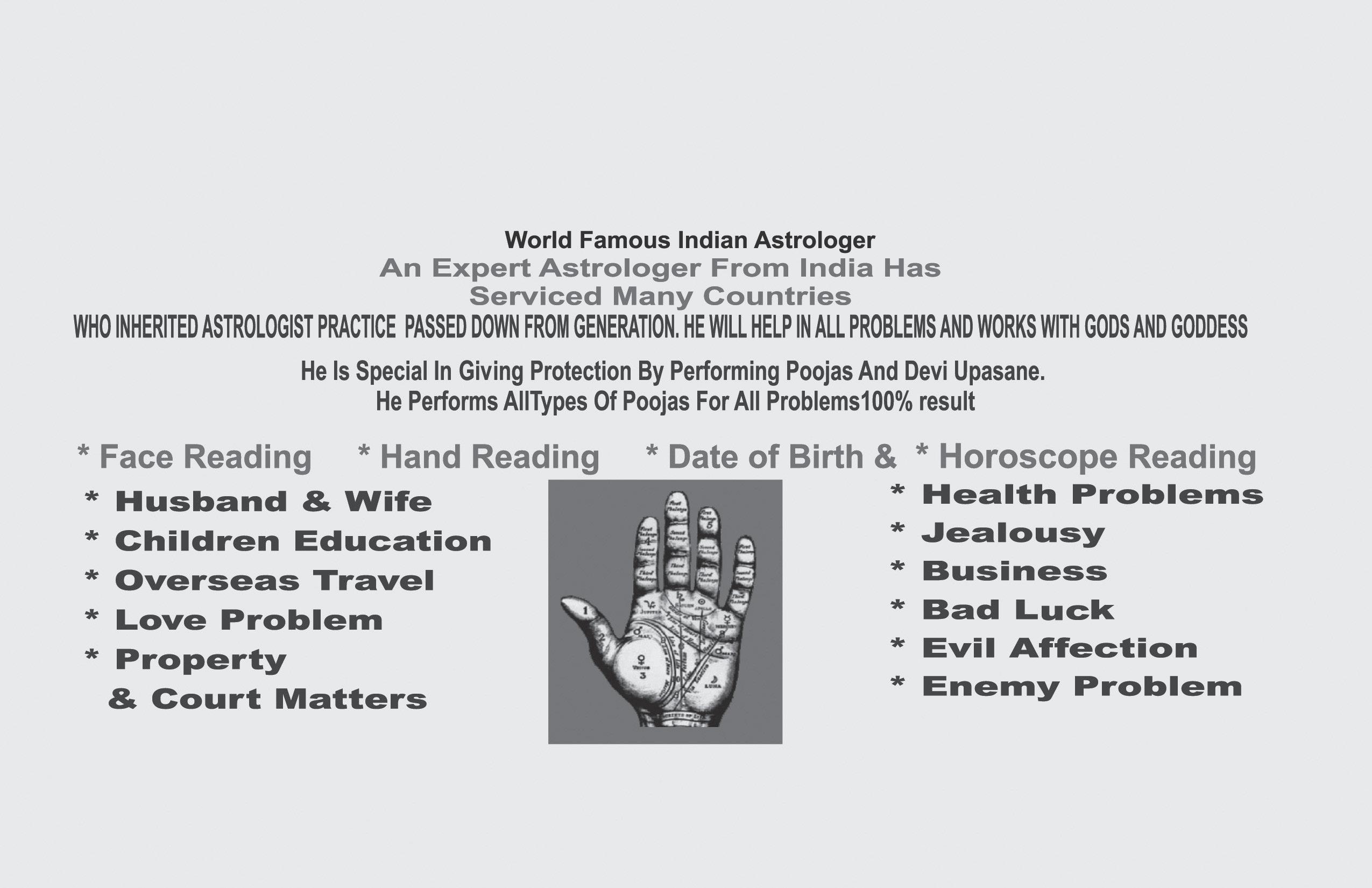
Seeking match from Australia/overseas, for tall, handsome guy 41, graduate, employed, good family values, non-smoker, nondrinker. Interested ladies with good family values may please email particulars with recent photo to: smartguy213023@yahoo.com
Well settled family in Australia invites alliance for 29-year-old, 5”11, Sood Punjabi boy (Aust citizen), working as a Senior IT consultant for the Australian govt on high income. Seeking Indian girl, caste no bar. Please send bio data/particulars of girl to aumohindra@gmail.com
Seeking graduate Hindu girl for well established 5’10”, very fair 21/11/1968 born Australian citizen. Never married. BE(Electrical) self employed. Vegetarian non-smoker teetotaller. Please email profile with photo to anandrao68@gmail.com
Compatible match for 1975, handsome, clean-shaven Sikh Khatri boy, 5’9”, two post grad degrees from India and recently finished Masters in IT from Australia. Applied for temporary resident visa (currently with full work rights) and working as Vehicle Service Agent for Hertz multinational car rental company, earning $4000 per month. Girl should be tall, well-educated with pleasing personality, and must be from Sikh background. Early marriage; serious proposals only please. Phone 0422 102 242 or email jas_ghai01@gmail.com

66 OCTOBER (1) 2012 www.indianlink.com.au SHIVASHKTHI ASTROLOGER Pandit Sairam 1/505 Wentworth Avenue, Toongabbie NSW 2146 Opp. Railway Station Mobile: 0481 194 108 0450 405 844 Time: 9am - 7pm ALL TypES Of funcTIOn & c ATERInG AVARI Indian Restaurant www.avari.net.au B.y.O • One Free Dish • On order over $60 (pick up only) Free Home Delivery Available • (Minimum order $35.00) 6:00pm to 9:00pm 7 days All pick up over $35.00 receive 10% discount (Monday – Thursday) O PENING H OURS Lunch: Tue to Sun 12:00pm – 3:00pm • Dinner: 7 Days 5:00pm till late Contact – Hilary on 0415180060 GATEWAy PLAZA SHOP 4/2 OLD NORTHERN ROAD BUALKHAM HILLS Customer Parking Available Underneath the Restaurant Entrance Through Windsor Road *For Limited time only. Not valid with any other offer A UTHENTIC I NDIAN C UISINE 9639 7597 or 9688
Stockland Baulkham Hills Baulkham Hills Library Cosmo Lighting
7400
TArOT



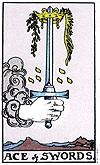



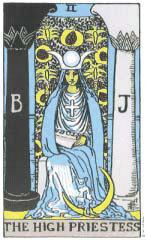




ARIES March 21 - April 19
This is the month where you need to let someone close to you know how you are feeling. Do not worry about things not working out, be bold and true to your heart. Do not hesitate and go forth with strength. There will be some developments at work that will give you the confidence and strength to move into new directions and push forward with your plans. There will be some news about a family celebration.
TAURUS April 20 - May 20
The cards indicate that this is a good time to take a break and relax your mind and soul. you may even meet your soulmate. There is an indication that you need to start saving for your future, making sure your debts do not mount up. you have been a little hasty with your spending lately, and will now need to take things easy. Make sure that you stick to your promise of being more responsible this month.
GEmINI May 21 - June 20
The cards indicate that chances of an affair are likely this month. If you are unattached, you may decide to go for it. If not, you are warned that things could get out of hand. There is news of more responsibility at work. you will also be able to earn some extra cash. Go for it, things are getting better and you will be thinking of treating yourself. Look at your exercise routine and make needed changes.
CANCER June 21 - July 20
you are feeling agitated to get the truth about a situation out into the open. It may not be a good idea as things can get rather disturbing. Work colleagues make sure you get your say in, as there is a likelihood that you may not have stated your opinion when it comes to certain changes that are taking place at work. The atmosphere is a little tense at the moment, but around midmonth, things will calm down considerably.
LEO July 21 - Aug 22
predictions for OCTOBER 2012
 By NANCy JADE ALTHEA www.nancysood.com
By NANCy JADE ALTHEA www.nancysood.com
LIBRA sep 23 - oct 22
This month sees you trying to maintain your status quo. Do not make unrealistic promises to those you love, as you will find it hard to deliver them. Make sure you are careful with machinery and when you drive, take care as your mind will be wandering all over the place and you will be day-dreaming a lot more. you have been under a lot of stress, so try to relax and try some meditation.
SCORPIO oct 23 - nov 21
The cards indicate a time when you need to keep your tongue in control. you may say things you do not mean, and your future progress will be seriously hampered at work. Make sure you send off a mail that you need to, instead of delaying the obvious. you do not seem too happy at the moment with work, so look at other options. you have been unhappy for a while. you owe it to yourself.
SAGITTARIUS nov 22 - dec 21
you will be meeting someone in the most strangest of places, you will feel instantly attracted to them, finding out to your complete shock that you are in love. Try and work things out in your business too, as things are not progressing as planned. There will be someone at your workplace who will cause some problems and upsets. you will be fine if you sort things out and speak to them about it.
CAPRICORN dec 22 - Jan 19
This month you will be thinking about what you really want from life. A friend will offer some advice as you have been unhappy for some time now. Make changes and step forward into a new life, as things are about to change. you will also look at some new projects and work. Expect news from a loved one concerning a desire they have, and they will want to involve you in their plans. Have fun.
AqUARIUS Jan 20 - feb 18
The cards indicate a change in your financial situation. you are thinking of a new exercise routine, as you have not been frequently to the gym or been exercising. Check your diet and sleeping patterns, and also your blood pressure as you have been suffering from headaches lately, and are stressed out about a relationship. Time to make some decisions about what you want to do, to stay or to go – that is the main question.
VIRGO Aug 23 - sep 22
The cards indicate that you will need to give a younger member of your family the benefit of your time. There could be some issues around their health or perhaps progress at school. Make sure you spend quality time, and not just load them with presents. There will be news about a property which you have been waiting for, you will get a chance to sell it. Long standing disputes will resolve soon. Patience is needed.
This month you need to look at your worth. Look at your accomplishments and material possessions. Take advice from a doctor, as you are not good at having check ups. Do not get involved in office politics, as you may get drawn into something that you will not be able to get out of later. There will be some news about a pregnancy or marriage. you will be planning a surprise for a loved one.
PISCES feb 19 - March 20
The cards indicate that a financial issue is not out of control. you can solve your problems with some rational thinking and immediate action. Make sure you make your own decisions, and do not let others influence you. Get enough rest, as you are not feeling that energetic. you may have some stomach issues and you need to make sure you look at your diet carefully and eliminate those foods to which you are allergic.
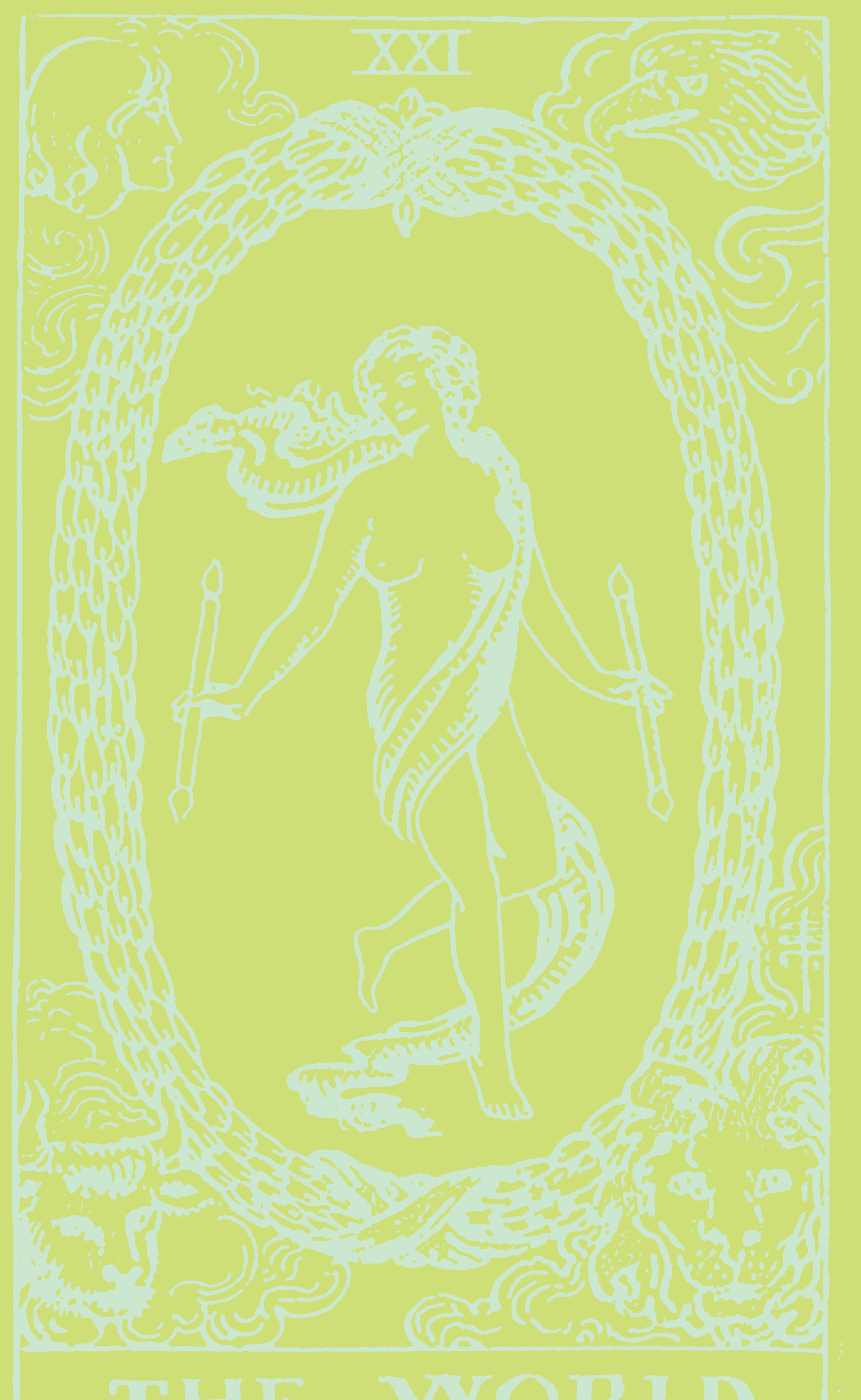
STARS FORETELL
Music of my childhood
Music can be a soul-soother, and fortunately, some melodies are impossible to forget
BY SHAFEEN MUSTAQ
Is it old age when, no matter how catchy the tune of a new song may be, when you are feeling down you go back to the songs of your childhood? I needed a mood lift the other night and started sifting through the songs that defined my childhood. Here are my favourites, grouped by language for your listening pleasure too.
English
Growing up watching video hits surreptitiously with my sis and flicking back to Saturday Disney when the parents walked in was an integral part of my Saturday mornings. This was before Saturday Disney became almost as bad as video hits and video hits became the trash it is today. So many songs made it to our school lunchtime dramas, our bus and train rides, our graduation and final prom or graduation dinner. There were songs that we latched onto at first crush, songs that got us through high school dramas and ‘heartbreak’, songs that were so silly we laughed out loud in class long after we had sung them at the top of our voices in the playground. I wonder if any of you will remember
If I Let You Go (Westlife)
Hero (Enrique Iglesias)
Cup of Life (Ricky Martin)
I’m Blue (Eiffel 65)
Crazy Town (Butterfly)
Freestyler (Bomfunk MC’s)
The Boy is Mine (Brandy & Monica)
A Whole New World (Aladdin)
Hit Me Baby One More Time (Britney Spears)
My taste has matured somewhat and even though my playlist is now filled with more of the songs below, I like to revert back to the golden oldies on the odd occasion. But who can forget
Kashmir (Led Zeppelin)
Hotel California (Eagles)
Sweet Child of Mine (Guns and Roses)
Muse (Uprising)
The Black Keys (Lonely Boy)
Hindi
I will always remember my first Hindi film and the irreparable damage it has done to my life, as
Dilwale Dulhania Le Jayenge turned a tomboy into a dreamer, a hopeless romantic waiting for her Prince Charming who would come along
in his cheeky boisterous manner and sweep her away. Well, that hasn’t happened yet, but I did become hopelessly addicted to the music and melodrama of Indian cinema and pop. There were songs to dream to, songs to cry to, songs to dance to, songs to laugh to.... songs we heard with cousins, played at weddings, songs for almost every memory. Here are just a few, and there are very many more
Tujhe Dekha To Ye Jaana Sanam (DDLJ)
Oh Oh Jane Jana (Pyar Kiya to Darna
Kya)
Dum Duma Dum (Dil)
Aur Ahista Kijiye Baatein (Pankaj
Udhas)
Gori Teri Ankhen Kahe (Lucky Ali)
Piya Basanti (Ustad Sultan Khan & Chitra)
Kabhi Aana Tu Meri Gali (Euphoria Gully)
Kajra Re (Bunty Aur Babli)

Teri Meri Prem Kahani (Bodyguard)
Bangla
I was never a big fan of Bangla music: it always sounded so old, boring and sad. But at 10 I went to dance school, and a term of dancing to Lal Tuk Tuke Bou (Little red bride) with my dance class was enough to enamour me to the wide world of children’s music and folk songs, for which Bangladesh is so renowned. I began to discover musicians like James and Srikanto on my trips to Bangladesh, and then Habib and Arnob became international sensations with their modern music. It is a testament to some of the current talent that I like some
of the songs coming from the rock and pop scene in Bangladesh. Below are a few I grew up with, and a few that grew on me.
Jokhon Ami Boro Hobo (Singer unknown)
Lal Tuk Tuke Bou (Singer unknown)
Rokto Lal (Singer unknown)
Raat Nirghum (Habib)
She Je Bosche Ache (Arnob)
Brishti Tomake Dilam (Srikanto)
korean
I am Bengali, I live in an Englishspeaking country and I enjoy Indian and Pakistani musical influences. But I cannot write about music without mentioning my newfound love for Korean dramas and movies, which have some really good OSTs. They are songs that capture the music and emotions of Hindi songs
I will always remember my first Hindi film and the irreparable damage it has done to my life, as Dilwale Dulhania Le Jayenge turned a tomboy into a dreamer
Top: Kajol-SRK in DDLJ

Left: Psy: Gangnam Style

with lyrics reminiscent of the Backstreet Boys, a combination you can’t help but love. Here are a few that I really enjoy and you would be doing yourself a huge favour by checking out the dramas themselves too!
You’re Beautiful OST 2 – 03 What Should I Do (Park Da Yae)
Heartstrings OST Because I Miss You (Jung Yong Hwa of CN Blue)
Personal Taste OST Like An Idiot Like a Fool (2AM)
Boys Over Flowers OST Stand By Me (Shinee)
And of course, a tribute to the current rage about an oppa (man) who loves a yoja (woman) who likes her kopi (coffee), Psy’s Gangnam Style!
Enjoy!
68 OCTOBER (1) 2012 www.indianlink.com.au BACKC h AT


OCTOBER (1) 2012 69 NATIONAL EDITION

70 OCTOBER (1) 2012 www.indianlink.com.au

OCTOBER (1) 2012 71 NATIONAL EDITION

72 OCTOBER (1) 2012 www.indianlink.com.au








































































































 BY USHA RAMANUJAM ARVIND
BY USHA RAMANUJAM ARVIND

























































 BY PETRA O’NEILL
BY PETRA O’NEILL















 BY NOEL g DE SOUZA
BY NOEL g DE SOUZA



















 BY TIM BLIGHT
BY TIM BLIGHT












 BY MOHAN DHALL
BY MOHAN DHALL







 BY MAHESH RADHAkRISHNAN
BY MAHESH RADHAkRISHNAN









































































 By NANCy JADE ALTHEA www.nancysood.com
By NANCy JADE ALTHEA www.nancysood.com








